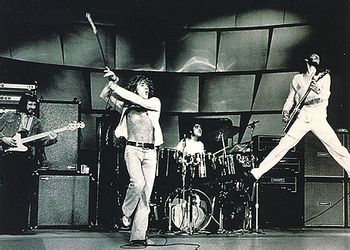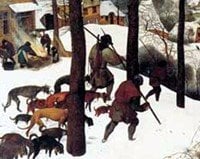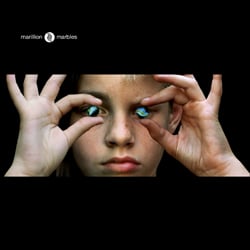-
Главная
-
Исполнители
- The Who
- песни (2690)
- альбомы (358)
- видеоклипы (333)
- фото (9)
- Who
- Великобритания
-
thewho.com
www.thewho.info
www.thewho.net
weave.me - Wikipedia
британская рок-группа, сформированная в 1964 году. Первоначальный состав состоял из: Пита Таунсенда (Pete Townshend), Роджера Долтри (Roger Daltrey), Джона Энтвистла (John Entwistle) и Кита Муна (Keith Moon). Группа приобрела огромный успех за счёт неординарных концертных выступлений и считается как одной из самых влиятельных групп 60-х и 70-х годов, так и одной из величайших рок-групп всех времён.
Развернуть
Песни группы The Who

The Who
— Behind Blue Eyes (Who-s Next 1971)

The Who
— Baba O’Riley (Confidentialmx Remix) (Single 2019)

The Who
— Eminence Front (It-s Hard 1982)

The Who
— Baba O Riley (Access All Areas 2017)

The Who
— Won’t Get Fooled Again (Single Version) (Maximum As and Bs 2017)

The Who
— My Generation (Austin Powers: The Spy Who Shagged Me Sndtrk 1999)

The Who
— I Can’t Explain (Mono) (Maximum As and Bs 2017)

The Who
— Pinball Wizard (Woodstock Festival 1969)

The Who
— Who Are You (Endless Wire 2006)

The Who
— The Seeker (BBC Radio Sessions 1965)

The Who
— I Can See For Miles (The Who Sell Out 1967)

The Who
— Christmas (Tommy 1969)

The Who and Lovelife
— Love Reign O’er Me (2015)

The Who
— Ball And Chain (Single 2019)

The Who
— The Real Me (Quadrophenia 1973)

The Who
— Mary Anne With The Shaky Hand (The Who Sell Out 1967)

The Who
— Bargain (Who-s Next 1971)

The Who
— Break The News (Who 2019)

The Who
— Love Aint For Keeping (Who-s Next 1995)

The Who
— I’m Free (Maximum As and Bs 2017)

The Who
— Substitute (Live at the Monterey International Pop Festival 2021)

The Who
— Join Together (The Who Hits 50. 2014)

The Who
— Pictures Of Lily (The Who Hits 50. 2014)

The Who
— Happy Jack (Live at the Monterey International Pop Festival 2021)

The Who
— Our Love Was (The Who Sell Out 1967)

The Who
— The Kids Are Alright (The Who Hits 50. 2014)

The Who
— All This Music Must Fade (Single 2019)

The Who
— The Ox (The 25 Best Songs)

The Who
— Getting in Tune (Who-s Next 1971)

The Who
— Magic Bus (The Who Hits 50. 2014)

The Who
— Going Mobile (Who-s Next 1971)

The Who
— Heat Wave (A Quick One 1966)

The Who
— Boris the Spider (A Quick One 1966)

The Who
— Whiskey Man (A Quick One 1966)

The Who
— You Better You Bet (Face Dances 1981)

The Who
— A Quick One While He’s Away (Live at the Monterey International Pop Festival 2021)

The Who
— 5:15 (The Who 2002)

The Who
— Out In The Street (My Generation 1965)

The Who
— It’s Not Enough (2006)

The Who
— 1921 (Tommy 1969)

The Who
— Blue Red and Grey (The Who By Numbers 1975)

The Who
— Squeeze Box (The Who By Numbers 1975)

The Who
— Go To The Mirror (Tommy 1969)

The Who
— Real Good Looking Boy (Radio Edit) (2014)

The Who
— The Song Is Over (Who-s Next 1995)

The Who
— Heat Wave (New Remix) (A Quick One 1966)

The Who
— I’m A Boy (Mono Version) (Maximum As and Bs 2017)

The Who
— Detour (Who 2019)

The Who
— It’s Not True (My Generation 1965)

The Who
— I Don’t Mind (My Generation 1965)

The Who
— My Wife (Who-s Next 1971)

The Who
— I’m A Man (My Generation 1965)

The Who
— Anyway, Anyhow, Anywhere (The Kids Are Alright 2000)

The Who
— Run Run Run (A Quick One 1966)

The Who
— Tommy Can You Hear Me? (Tommy 1969)

The Who
— Don’t Let Go The Coat (Maximum As and Bs 2017)

The Who
— Doctor, Doctor (Mono Version) (Maximum As and Bs 2017)

The Who
— La-La-La-Lies (Maximum As and Bs 2017)

The Who
— Beads On One String (Who 2019)

The Who
— The Rock (Quadrophenia 1973)

The Who
— I Need You (A Quick One 1966)

The Who
— Athena (It-s Hard 1982)

The Who
— The Last Time (The Who Hits 50. 2014)

The Who
— I Don’t Wanna Get Wise (Who 2019)

The Who
— The Good’s Gone (Maximum As and Bs 2017)

The Who
— Trick Of The Light (Who Are You 1978)

The Who
— Relay (Endless Wire 2006)

The Who
— I Am The Sea (Quadrophenia 1973)

The Who
— Please Please Please (My Generation 1965)

The Who
— A Legal Matter (My Generation 1965)

The Who
— Much Too Much (My Generation 1965)

The Who
— Sparks (Tommy 1969)

The Who
— Overture (Tommy 1969)

The Who
— Amazing Journey (Tommy 1969)

The Who
— Armenia City In The Sky (The Who Sell Out 1967)

The Who
— When I Was A Boy (Maximum As and Bs 2017)

The Who
— Baby Don’t You Do It (Live) (Maximum As and Bs 2017)

The Who
— Don’t Know Myself (Maximum As and Bs 2017)

The Who
— Miracle Cure (Tommy 1969)

The Who
— Dr Jekyll and Mr Hyde (Maximum As and Bs 2017)

The Who
— Here For More (Maximum As and Bs 2017)

The Who
— The Acid Queen (Tommy 1969)

The Who
— Instant Party Mixture (Mono Version) (Maximum As and Bs 2017)

The Who
— Water (Maximum As and Bs 2017)

The Who
— Tommys Holiday Camp (Tommy 1969)

The Who
— Eyesight To The Blind (Tommy 1969)

The Who
— Please, Please, Please (2014 Stereo Mix) (My Generation 1965)

The Who
— Underture (Tommy 1969)

The Who
— Sally Simpson (Tommy 1969)

The Who
— Fiddle About (Tommy 1969)

The Who
— Facts Of Life (aka Birds And Bees) (Backing Track) (Mix) (2018)

The Who
— Naked Eye (Endless Wire 2006)

The Who
— Too Much Of Anything (Who’s Next 1971)

The Who
— I Don’t Even Know Myself (Who’s Next 1971)

The Who
— Cousin Kevin (Tommy 1969)

The Who
— Circles (Revised Mono Version) (Maximum As and Bs 2017)

The Who
— Relax (The Who Sell Out 1967)

The Who
— Medac (The Who Sell Out 1967)

The Who
— I Can’t Reach You (The Who Sell Out 2017)

The Who
— 5.15 (Single Version) (Maximum As and Bs 2017)
In the summer of 1964 a young British rock band called the High Numbers released their debut single “Zoot Suit,” and watched it disappear without a trace. The supremely-forgettable song was written by their manager Pete Meaden; a few months later, when they headed back into the studio, they decided to rename themselves the Who and let guitarist Pete Townshend try his hand at songwriting. It was a wise decision. The first single released was “I Can’t Explain,” which kicked off a stunning two-decade run of music that paved the way for punk, metal, power pop and progressive rock. Check out our list of their 50 best songs.
-
“Boris the Spider” (‘A Quick One’, 1966)
Image Credit: Michael Ochs Archives/Getty “He was a very strange fellow,” Townshend said of Entwistle. “I loved John, obviously, for his eccentricities.” The first song Entwistle wrote for the Who bowled the band over, highlighting his dark, absurdist sense of humor and distinct playing style. Never released as a single, it still became the group’s most requested live song. According to Townshend, it was also Jimi Hendrix’s favorite Who song, which shouldn’t be all that surprising. “What’s interesting in our group is that the roles are reversed,” Townshend said. “John’s the lead guitar.”
-
“Relax” (‘The Who Sell Out’, 1967)
Image Credit: Redferns/Getty Written just prior to Townshend’s first LSD experience, this uncharacteristic slice of paisley power pop echoes the Beatles’ advice for trippers – “Turn off your mind, relax and flow downstream” – from “Tomorrow Never Knows.” “Relax” is reminiscent of the material Syd Barrett was recording with Pink Floyd, featuring a Hammond organ (played by Townshend) rising and falling tranquilly in the background. It concludes with a fury of acid-rock guitar that would launch some of the Who’s more explosive onstage jams during their extensive tours in 1967 and ’68, though it soon left their live set.
-
“Another Tricky Day” (‘Face Dances’, 1981)
Image Credit: Gabor Scott/Redferns/Getty Though the song was never released as a single, the Who shot a video for “Another Tricky Day,” a highlight of the otherwise lackluster Face Dances. In the album’s liner notes, Townshend thanked Texan keyboardist John “Rabbit” Bundrick, who became an ancillary member of the band at the time, for “help and inspiration on ‘Another Tricky Day.’” But the sentiment is pure Who, a defiant yet complex tune about music’s enduring power amid life’s problems. “Rock & roll will never die,” Daltrey sings. The Who folded just one year later. Since their return, this song has been appearing in their shows for years.
-
“Going Mobile” (‘Who’s Next’, 1971)
Image Credit: Courtesy Everett Collection This exuberant Townshend-sung track was originally intended for a car-chase sequence in Lifehouse but ended up on Who’s Next. It was inspired, Townshend has said, by “me riding around in the mobile caravan I’ve bought.” Capturing the feel of driving in an air-conditioned auto, leaving the “police and the tax man” behind, the track featured another of Townshend’s early forays into technology: his acoustic guitar run through what he called “one of the original crude guitar synthesizers. …It sounds just like a duck, doesn’t it?”
-
“Overture” (‘Tommy’, 1969)
Image Credit: Jack Robinson/Hulton Archive/Getty This five-minute piece, which opens Tommy and foreshadows its thematic and musical themes, was an afterthought. When Townshend was working out the album’s narrative, he began it with “It’s a Boy,” but he told Rolling Stone in 1969, “That would have been too blunt of an opening.” Instead, he juxtaposed the urgency of “See Me, Feel Me” with the glee of “Pinball Wizard” in an instrumental intro: “This clues you in to a lot of themes and gives a continuity to the tracks.” It singlehandedly elevated the rock album to a “rock opera.”
-
“Bargain” (‘Who’s Next’, 1971)
Image Credit: Michael Putland/Getty One of the most euphoric moments on Who’s Next got an assist from guitarist Joe Walsh. In 1970, the Who took Walsh’s hard-rock trio the James Gang on tour as an opening act. Perhaps as a way to say thanks, Walsh gave Townshend a Gretsch acoustic guitar, which he ended up playing on “Bargain” when the band recorded it. Townshend began work on the song while demo’ing material for his Lifehouse project. “On Lifehouse, it was a love song, but a song about a higher love, a love between disciple and master,” he said. What emerged was an open-hearted expression of Townshend’s devotion to Sufism, and religious faith in general: “How much of a bargain it would be even to love everything in order to be at one with God,” he said later. Over the course of several sessions with producer Glyn Johns at London’s Olympic Studio, “Bargain” grew into a triumphant anthem, with Moon delivering an explosive yet intricate performance many consider one of his finest and Daltrey sending the song’s powerful sentiment skyward. Daltrey said years later that Who’s Next songs like “Bargain” were “rooted inside of us.”
-
“Trick of the Light” (‘Who Are You’, 1978)
Image Credit: Keystone/Getty Entwistle wrote songs about men facing things they feared, whether it was a furious spouse (“My Wife”), alcoholism (“Whiskey Man”), a creepy spider (“Boris the Spider”) or death (“Heaven and Hell”). Here, he came up with a tune about a man so unsure about his sexual prowess that he hires a prostitute and begs her for an honest assessment of his skills. His thundering bass and growling vocals make this his most overlooked Who track. In the Who Are You liner notes, Townshend describes Entwistle’s playing on “Trick of the Light” as sounding like “a musical Mack truck.”
-
“I Can’t Reach You” (‘The Who Sell Out’, 1967)
Image Credit: Chris Morphet/Redferns/Getty With its original title, “See, Feel, Hear You,” anticipating “See Me, Feel Me,” this rapturous, yearning pop gem was written by Townshend shortly before he adopted Meher Baba as his spiritual adviser. Describing his frame of mind at the time, Townshend later admitted, “I can say without pretensions that I was looking for someone.” The song’s lyrics, meanwhile, are intriguingly ambiguous about whether the object of his desire is spiritual or sexual. It was also one of the first songs that Townshend wrote on piano; he happily recalled that its refreshing simplicity was “caused by my inability to play!”
-
“Let’s See Action” (Non-album single, 1971)
Image Credit: Michael Putland/Getty Released between the twin towers of Who’s Next and Quadrophenia, this non-LP track, sung tag-team over acoustic guitar and boogie-woogie- flavored piano by Nicky Hopkins, found Townshend in an unusually activist state of mind. He was inspired partly by the teachings of Meher Baba (see its “everything is nothing” mantra), and later described the song as being “about the people who act in a revolution, and the people that sit back. I thought it also said a lot about the way we forget our souls most of the time.” A fascinating demo version surfaced in 1972 on Townshend’s solo debut, Who Came First.
-
“Young Man Blues” (‘Live at Leeds’, 1970)
Image Credit: Jorgen Angel/Redferns/Getty The Who started playing American jazz-blues singer Mose Allison’s “Young Man Blues” in 1964, when they were still the Detours. According to Townshend, the song also inspired his first “My Generation” demo. The Who recorded it during early Tommy sessions, but Townshend decided to include their take on Allison’s version of Sonny Boy Williamson’s “Eyesight to the Blind” instead. By the time the Who recorded what would become Live at Leeds’ raging opener (actually the show’s fifth song), “Young Man Blues” had evolved into a powerful call-and-response between Daltrey and his bandmates.
-
“Heaven and Hell” (Non-album B-side, 1970)
Image Credit: Ron Howard/Redferns/Getty The Who opened nearly every gig on their 1970 Tommy tour with Entwistle’s hard-driving “Heaven and Hell,” a death-obsessed tune that served as a kind of energetic warm-up for the band. “I basically wanted to write a song with a big subject, an important subject rather than spiders or drunks,” said Entwistle. “The original version … had a different chorus. It was basically ‘I’d much rather stay in the middle with my friends because I don’t like the sound of either of them.’ I still don’t. I don’t fancy hell or heaven.” The bassist also recorded a version of the song on his 1971 solo album, Smash Your Head Against the Wall.
-
“I’m a Boy” (Non-album single, 1966)
Image Credit: Michael Ochs Archives/Getty Released in August 1966, “I’m a Boy” let Who fans know that Townshend was interested in topics well beyond typical pop-song subject matter. The story of a boy whose parents dress him up like a girl was originally meant to be part of a rock opera called Quads that Townshend never completed. But the notion of a child tortured by his parents came back two years later when he began work on Tommy. “I’ve always addressed and acknowledged child abuse, the neglect of children, the misunderstanding of adolescence,” Townshend said in 1993. “The first song in which I addressed it was ‘I’m a Boy,’ but it’s always been there.”
-
“Christmas” (‘Tommy’, 1969)
Image Credit: Gijsbert Hanekroot/Redferns/Getty Kicking off side two of Tommy, “Christmas” is one of the album’s saddest moments, in which we learn Tommy’s parents don’t think their deaf, dumb and blind son could appreciate the holiday. Townshend recorded the song as a sparse, piano-based demo. (The original lyrics had the line “playing with himself, he sits and smiles,” which was later revised to introduce Tommy’s love for pinball.) As soon as the bandmates got their hands on the song, they turned it into a bombastic showstopper, with Townshend and Daltrey both taking vocal turns. For a definitive version of “Christmas,” see the expanded Live at Leeds.
-
“Long Live Rock” (‘Odds and Sods’, 1974)
Image Credit: Michael Putland/Getty We were the first band to vomit in the bar,” brags Daltrey in this self-aware anthem, a celebration of the band’s history that includes allusions to clueless promoters and ticket scalpers. Recorded in 1972, the song was originally intended to be part of Rock Is Dead – Long Live Rock, an unfinished autobiographical 1972 album that morphed into Quadrophenia. “Long Live Rock” wouldn’t get an official release until the 1974 collection Odds and Sods, with Townshend writing in the liner notes that “there are dozens of these self-conscious hymns to the last 15 years appearing now, and here’s another one.”
-
“Slip Kid” (‘The Who by Numbers’, 1975)
Image Credit: Richard E. Aaron/Redferns/Getty The intensely personal Who by Numbers opens with a message about the perils of fame. The deceptively bouncy “Slip Kid” informs would-be rock stars that “it’s a hard, hard world.” “It came across as a warning to young kids getting into music that it would hurt them,” said Townshend. “It was almost parental in its assumed wisdom.” After Pearl Jam’s tragic set in 2000 at Denmark’s Roskilde, which resulted in the death of nine fans, Eddie Vedder turned to the tune for comfort. “There’s a line [in the song], ‘There’s no easy way to be free,’” he said in 2006. “I was thinking, ‘I couldn’t agree with you more.’”
-
“The Acid Queen” (‘Tommy’, 1969)
Image Credit: Michael Putland/Getty Townshend described Tommy‘s Acid Queen character as a metaphor for peer pressure – a “black-hearted gypsy who had promised to bring Tommy out of his autistic condition but was actually a sexual monster, using drugs to break him.” Moon’s anarchic drumming and Townshend’s torrential guitar and chilling lyrics (“His head, it shakes/His fingers clutch/Watch his body writhe”) drive home the dark drama. When Tina Turner took on the role of the Acid Queen for the 1975 film version of Tommy, she played it even more predatorily than Daltrey does on the LP. Townshend called her performance “stunning.”
-
“However Much I Booze” (‘The Who by Numbers’, 1975)
Image Credit: Michael Ochs Archives/Getty In case there was any doubt that substance abuse was slowly taking its toll on the Who by 1975, the band came out with a song called “However Much I Booze,” on which Townshend declares there “ain’t no way out” from his near-crippling alcohol addiction. “I forced the band into a corner with that material,” he said. It’s easy to see why Daltrey refused to handle the song’s vocals (“I’ve never been drunk onstage in seven years,” he said at the time), and it’s just as easy to understand why they haven’t played it live in 40 years. Yet “However Much I Booze” remains a revealing, moving cry for help.
-
“Pictures of Lily” (Non-album single, 1967)
Image Credit: Chris Morphet/Redferns/Getty Allegedly written after Townshend’s parents caught him masturbating (and asked, “Why can’t he go out with girls, like other boys?”), this remains a groundbreaking moment of lyrical intimacy and honesty in rock, and a hilarious one too. The song’s title was inspired by a picture Townshend’s girlfriend had of 1920s vaudevillian Lily Bayliss, though he later said, “It’s just a look back at the period in every boy’s life where he has pinups.” Daltrey sang the song with what he called “complete innocence,” and the band promoted it with a series of risqué postcards, causing a mild controversy that helped assure its Top 10 success.
-
“You Better You Bet” (‘Face Dances’, 1981)
Image Credit: Brian Rasic/Getty “A surprise hit single for us,” Townshend said. “We even went back on Top of the Pops.” Tough and to the point, “You Better You Bet” reflects the way Townshend’s enthusiasm for punk rock was tightening his songwriting. Addressed to his new girlfriend, it also hits a note of sly nostalgia when Daltrey sings about getting drunk “to the sound of old T. Rex.” Daltrey, who has compared the song’s bouncing melody to Elvis Presley, considers it a lone bright spot on 1981’s Face Dances, their first album after the death of Moon: “‘You Better You Bet’ is still one of my favorite songs of all.”
-
“Who Are You” (‘Who Are You’, 1978)
Image Credit: Michael Putland/Hulton Archive/Getty One of the last great lionhearted Who anthems, “Who Are You” summed up Townshend’s disillusion with where rock had gone during the late Seventies, and his desire to find authenticity amid the malaise. “It’s actually a prayer,” Townshend said later. “I was trying to sort out who, where, what God was.” He wrote it after a contentious business meeting about unpaid royalties devolved into a drunken spree, during which Townshend ran into two members of the Sex Pistols in a club called the Speakeasy. Falling on his knees at the feet of drummer Paul Cook, he told the young punk musician, “Rock has gone down the fuckin’ tubes.” The incident planted the seed for a high-powered song that Townshend called “an encyclopedia for up-and-coming groups about how not to get caught.” Finishing “Who Are You” required some effort. Producer Jon Astley said that Townshend “turned up with this very long demo of the track … with all this stuff happening on it.” Astley got to work cutting five minutes out of the song, and the end result became a Top 20 hit in America and the U.K., proof that the Who weren’t done just yet.
-
“5:15” (‘Quadrophenia’, 1973)
Image Credit: Ron Howard/Redferns/Getty The debut single on Quadrophenia, and the lead track of the album’s second disc, is delivered in call-and-response vocals by Daltrey and Townshend. Amid images of polymorphous sexuality, they describe a pill-loving protagonist (“Out of my brain on the train”) over Townshend’s dukes-up guitar lines, brash horns by Entwistle and rollicking piano by moonlighting Joe Cocker sideman Chris Stainton. Unlike most of Quadrophenia, which required painstaking work, “5:15” came to Townshend quickly (“While I was killing time between appointments,” he recalled) and was written in the studio the day it was recorded.
-
“Pure and Easy” (‘Odds and Sods’, 1974)
Image Credit: Michael Ochs Archives/Getty A crucial song from the abandoned Lifehouse project, “Pure and Easy” was originally designed to set the stage for that concept album’s story about an eternal note of music that unites civilization. Once Townshend decided to scrap Lifehouse in favor of Who’s Next, the majestic “Pure and Easy” wound up on the cutting-room floor, surfacing later on his 1972 solo LP Who Came First and the Who’s 1974 compilation Odds and Sods. “It was the kernel behind Who’s Next,” Townshend said. “But it never made it onto that record. In a sense, the heart [of Who’s Next] was missing.”
-
“Sparks” (‘Tommy’, 1969)
Image Credit: © Hulton-Deutsch Collection/CORBIS/Corbis/Getty This Wagnerian instrumental track evokes the Who’s live power more than anything else on Tommy. Townshend had wanted Tommy to have other interstitial material that would include battle noises and pinball sound effects, but abandoned the idea in his rush to complete the album. Originally titled “Dream Sequence,” “Sparks” got its title from a 1962 collection of Meher Baba sayings called Sparks of the Truth and recycled a musical theme from “Rael,” a mini-opera on The Who Sell Out. Townshend later said the version on Live at Leeds “gets as close as what’s possible for that classical-rock thing.”
-
“Happy Jack” (Non-album single, 1967)
Image Credit: King Collection/Avalon/Getty Townshend wrote this whimsical two-minute “nonsense song” while thinking about the kind of village idiot he used to see as a child on the beaches of the Isle of Man, where his family spent their summers. He emphatically claimed that “never in a million years will it be a hit for the Who.” Despite his protests, manager Kit Lambert put it out as a U.K. single in 1966, and when its jittery rhythm, empathetic lyrics and sweet harmonies earned it a Number 24 chart position in the U.S., Townshend called it a “hard ego lesson.” Harder still, Paul McCartney would later tell him it was his favorite Who song.
-
“A Legal Matter” (‘My Generation’, 1965)
Image Credit: GAB Archive/Redferns/Getty Townshend made his vocal debut on “A Legal Matter” – the group’s impish ode to divorce. Daltrey, who was married at the time, might’ve been leery of singing lyrics like “I gain and lose my women fast.” Townshend, on the other hand, just looked at the hard-charging B-side to “The Kids Are Alright” as a means of expressing his frustration. “It’s terrible feeling like an eligible bachelor but with no women seeming to agree with you,” he said. The song was later released as a single in its own right – ironically, the same week in 1966 when Keith Moon married model Kim McLagan.
-
“How Many Friends” (‘The Who by Numbers’, 1975)
Image Credit: Gijsbert Hanekroot/Redferns/Getty When Townshend first played the brutally honest, emotionally desolate songs that would comprise The Who by Numbers, Moon walked over and gave the guitarist a hug. By the sound of “How Many Friends,” he could’ve used it. “How many friends have I really got?/ You can count ’em on one hand,” Daltrey sings on this elegiac tune, which alluded to Townshend’s conflicted sexual identity and distance from the Who. “There was something else behind that song,” Townshend said later. “That rock itself was supposed to deliver something different. That was a hope that wasn’t fulfilled.”
-
“Sunrise” (‘The Who Sell Out’, 1967)
Image Credit: Michael Ochs Archives/Getty Amid the fake commercials, psychedelic freakouts and bizarre comic twists on The Who Sell Out sits “Sunrise,” a lovely acoustic track featuring just Townshend’s voice and his Harmony 12-string. The song’s bright melody, nimble finger-picking and melancholy lyrics were a break from the Who’s chaotic intensity, and not everyone in the band was thrilled to see Townshend branching out. “Keith didn’t want that on the record,” Townshend said in 1980. “In a way, that’s a bit of a giveaway to the fact that at the time I was studying a bit of this jazz thing. I wrote it for my mother to show her that I could write real music.”
-
“Magic Bus” (Non-album single, 1968)
Image Credit: Chris Walter/WireImag Written in 1965, this first surfaced as an obscure 1967 single cut by beatnik barbershop U.K. pop rockers the Pudding. The Who’s version was a gem of groove-heavy psychedelia, riding a Bo Diddley beat with a signature clave rhythm played by the band’s road man- ager/sound man Bob “Ben Pump” Pridden. It was released in various renditions. But the eight-minute take that appears on Live at Leeds, with Daltrey wailing on harmonica, may be the wildest. Fittingly, Martin Scorsese made it a high point of the soundtrack for Ray Liotta’s coked-up driving scene in Goodfellas.
-
“The Seeker” (Non-album single, 1970)
Image Credit: Chris Walter/WireImage/Getty This anthem of spiritual questing wasn’t born in an ashram; Townshend wrote it during a night of hard partying during a U.S. tour, in a “mosquito-ridden swamp [in Florida] at three in the morning, drunk out of my brain …. Quite loosely,” he once said, “‘The Seeker’ [is about] what I call Divine Desperation.” In lyrics predicting John Lennon’s “God” (released later that year), Daltrey name-checks the Beatles, “Bobby Dylan” and Timothy Leary, but none of them have the answers he needs. “We’re looking at each other,” he concludes, “and we don’t know what to do.” Unusually, the band self-produced the track, as producer Kit Lambert was laid up with a broken jaw. But the sound mix roared, and it became the first single the Who released after the triumph of Tommy. “The Seeker” was an underperformer on the pop charts, but it remained a potent statement. Townshend played it acoustic at Meher Baba gatherings, and the Who’s live performances of the song were overpowering – “an elephant,” said Townshend, that “finally stampeded itself to death on stages around England.”
-
“My Wife” (‘Who’s Next’, 1971)
Image Credit: Gijsbert Hanekroot/Redferns/Getty After getting into an argument with his wife, Alison, Entwistle took his dogs for a walk. By the time he returned home, he had this tune mapped out – “one of those instant songs,” he said. He played bass, piano and horns on the thunderous track. And the deadpan lyrics – about a spouse who goes on a murderous tear after hearing her husband might have had an affair – are quintessential Entwistle. “She always thought it was very funny,” he said of Alison’s reaction to “My Wife.” “She always had the ambition to come on and hit me over the head with a rolling pin halfway through it when I was doing it onstage.”
-
“I’m Free” (‘Tommy’, 1969)
Image Credit: Jack Robinson/Hulton Archive/Getty With an elastic guitar riff and an uplifting chorus, “I’m Free” is Tommy at its most optimistic. In his 2012 memoir, Townshend described it as the opera’s “moment of realization.” It’s one of many songs he wrote during this period that were influenced by the teachings of Meher Baba. Musically, the inspiration for its shuffling rhythm came from a more earthly source: the Rolling Stones’ 1968 classic “Street Fighting Man.” “When I finally discovered how [the Stones song] went,” Townshend said, “I thought, ‘Well, blimey, it can’t be that simple’ but it was … and I wanted to do it myself.”
-
“Tattoo” (‘The Who Sell Out’, 1967)
This clever and poignant initiation story from Townshend’s «absurd album of melody and humor» was an early example of a commitment to narrative songs. «Tattoo» was first demo’ed in Las Vegas during a three-day break from the Who’s 1967 American tour opening for Herman’s Hermits. Townshend later said he «was inspired by recent events on the road: Were we men or were we something else?» The guitarist was worried Daltrey might not want to sing lyrics about doubting your own masculinity. «He sang it really well,» Townshend recalled. «And I realized then … he’s got the same insecurities I do.»
-
“I’m One” (‘Quadrophenia’, 1973)
Image Credit: Chris Morphet/Redferns/Getty Opening with Townshend singing in a heartbreaking high tenor over acoustic guitar, “I’m One” flips on the second verse, with the singer flicking out his electric guitar like a switchblade and the band rushing in alongside him. “When I was a nipper, I always used to feel that the guitar was all I had,” Townshend said, introducing the song live in 1973. “I wasn’t tough enough to be a member of the gang, not good-looking enough to be in with the birds, not clever enough to make it at school, not good enough with the feet to make a good football player. I was a fucking loser. I think everybody feels that way at some point.”
-
“Blue, Red and Grey” (‘The Who by Numbers’, 1975)
Image Credit: Jack Robinson/Hulton Archive/Getty When it came time for a follow-up to Quadrophenia, Townshend decided to scale things back and made The Who by Numbers, a stripped-down confessional album about his own insecurities and demons. “Blue, Red and Grey” was a moment of optimism amid the darkness, a simple, oddly beautiful ode to enjoying life that was written on the ukulele and recorded on a home demo. Townshend was stunned when producer Glyn Johns insisted it appear on The Who by Numbers. “I said, ‘What? That fucking thing?’” Townshend said. “‘Here’s me wanting to commit suicide, and you’re going to put that thing on the record?’”
-
“So Sad About Us” (‘A Quick One’, 1966)
Image Credit: Ivan Keeman/Redferns/Getty “I think it’s a terrific number,” Townshend said of “So Sad About Us” in 1966. “We do it onstage – but the final record was nothing like the original demo disc I made of it.” The Who recorded this prim breakup tune in 1966, though it was originally written for the Merseys, a band that shared the Who’s manager and had a hit with a Townshend-produced version of the song that same year. With an intro that recalls the ringing guitars of the Byrds, it’s one of the more vulnerable moments of the band’s breakneck early years. It wasn’t released as a single, but it’s been covered by fans from the Jam to the Breeders.
-
“The Real Me” (‘Quadrophenia’, 1973)
Image Credit: Michael Ochs Archives/Getty The opening salvo for Quadrophenia is the sound of four men driving at full throttle. Entwistle delivers what might be his greatest recorded performance – as he proudly put it, the song was essentially “a bass solo with vocals.” “The Real Me” captures the contradictory nature of the album’s main character, Jimmy, screaming at his mother, his priest and his shrink, challenging them to truly see him. “You have the big, big, big bass of John Entwistle, the big, big drums of Keith Moon, the power chords, the huge voice of Roger Daltrey,” said Townshend, “and what they’re actually saying is ‘I’m a pathetic little wimp.’”
-
“The Kids Are Alright” (‘My Generation’, 1965)
Image Credit: Michael Ochs Archives/Getty “It sounds symphonic,” Townshend said of “The Kids Are Alright.” Recorded in the same session that produced “My Generation,” the song is another celebration of the mod subculture, replacing angry defiance with something more communal and kindhearted. Originally slated as a B-side for “My Generation,” it became a single at the insistence of producer Shel Talmy. Moon later claimed the mod image was foisted on the band. Townshend held that allegiance much more dearly. “As a force, they were unbelievable,” he told Rolling Stone in 1968. “Everybody just grooving on being a mod.”
-
“Pinball Wizard” (‘Tommy’, 1969)
Image Credit: Ivan Keeman/Redferns/Getty When Townshend was first developing Tommy, he played it for music critic Nik Cohn, who felt the emotionally intense opera was a bit dark. “If it had pinball in it, would you give it a decent review?” the guitarist asked Cohn, who responded, “Of course I would. Anything with pinball in it is fantastic.” The resulting “rockaboogie” tune, as Townshend has called it, became one of the Who’s most enduring anthems. As he said later, “If I had failed to deliver the Who an operatic masterpiece that would change people’s lives, with ‘Pinball Wizard’ I was giving them something almost as good: a hit.”
-
“Behind Blue Eyes” (‘Who’s Next’, 1971)
Image Credit: Jack Kay/Daily Express/Hulton Archive/Getty Townshend once called this gorgeous ballad “the closest to a love song I’ve ever written and managed to get the Who to perform.” He has implied “Behind Blue Eyes” is about being tempted (unsuccessfully) by a groupie on the road in 1970. But he has also said the song is about the villain of his Lifehouse project, who was “feeling he is forced into playing a two-faced role.” In that regard, Townshend saw himself in the lyric: “I do tend to lie my way out of things more often than I should,” he’s said. Either way, the arrangement – which shifts from unplugged softness to plugged-in fury – is as multifaceted as its lyrics.
-
“Substitute” (Non-album single, 1966)
Image Credit: Chris Morphet/Redferns/Getty “Substitute” was inspired by the media’s frequent assertion that the Who were essentially a poor man’s substitute for the Rolling Stones. “It was written as a spoof of ’19th Nervous Breakdown,’” Townshend said in 1971. “On the demo, I sang with an affected Jagger-like accent.” The song shot to the U.K. Top Five. For its American release, Daltrey was forced to change the line “I look all white, but my dad was black” to “I try going forward, but my feet walk back.” “Substitute” still failed to dent the U.S. charts, and even today Daltrey feels he didn’t nail his vocal: “I didn’t really find my voice until we got to Tommy,” he said.
-
“Eminence Front” (‘It’s Hard’, 1982)
Image Credit: Michael Putland/Getty After 1982’s disappointing It’s Hard, the Who didn’t record another album until 2006. “I hated it,” said Daltrey. “I still hate it.” But the LP’s lone hit, “Eminence Front,” showed they could connect Townshend’s New Wave-influenced solo work with the classic sound of Who’s Next. “‘Eminence Front’ was written around a chord progression I discovered on my faithful Yamaha E70 organ,” Townshend recalled. “I hesitate to try to explain what it was about. It’s clearly about the absurdity of drug-fueled grandiosity, but whether I was pointing the finger at myself or at the cocaine dealers of Miami Beach is hard to recall.”
-
“We’re Not Gonna Take It/See Me, Feel Me” (‘Live at Leeds’, 2001)
Image Credit: Frazer Harrison/Getty As documented at Woodstock, the Isle of Wight and on the complete Live at Leeds reissue, Tommy’s grand finale became even grander over the course of more than 100 performances of the opera during 1969 and 1970. Townshend originally wrote “We’re Not Gonna Take It” as an anti-fascist song prior to conceiving Tommy, while “See Me, Feel Me” was inspired in part by memories of his abusive grandmother and released alone as a single after the Who’s triumph at Woodstock. With its heraldic, redemptive “Listening to You” coda, featuring Daltrey at his blond rock-god apex, “We’re Not Gonna Take It/See Me, Feel Me” remains the high point of Who sets to this day.
-
“Getting in Tune” (‘Who’s Next’, 1971)
Image Credit: Gijsbert Hanekroot/Redferns/Getty “I can’t pretend there’s any meaning hidden in the things I’m saying,” sings a pensive Daltrey at the start of this Who’s Next track. But as with anything Townshend writes, “Getting in Tune” was hardly about nothing; it’s fraught with deep, complicated messages. Another track from the aborted Lifehouse project, the song’s arrangement encapsulates the many rich musical sides of the Who. It starts quietly, with session man Nicky Hopkins’ piano and a fluid Entwistle bass, before quickly working itself up into timeless Who thunder, complete with some of Moon’s splashiest, most tempo-shifting rhythms. The lyrics are simple but multidimensional: “I’m gonna tune right in on you” could be interpreted as standard love-song material, but as Townshend once explained, the words were actually inspired by the work of Indian Sufi master Hazrat Inayat Khan – in particular, Townshend noted, “where he says music is one way of individuals getting in tune with one another.” It’s a theme that reverberates in much of Townshend’s work.
-
“I Can’t Explain” (Non-album single, 1964)
Image Credit: Cyrus Andrews/Michael Ochs Archives/Getty The quartet’s debut single after changing their name from the High Numbers to the Who became a Top 10 hit in the U.K. in 1965, introducing them to a mass audience and jump-starting their stellar run of Sixties singles. “I Can’t Explain” was a power-pop rocket of adrenaline riffs and raw clatter. “A blurter and burster,” Townshend said of the song in 1968. Part of the credit for that blurting sound goes to producer Shel Talmy, an American who had moved to England to work for Decca Records. Talmy had recently helmed the Kinks’ epochal single “You Really Got Me,” which Townshend adored. “It can’t be beat for straightforward Kink copying,” Townshend said. “There is little to say about how I wrote this. It came out of the top of my head when I was 18-and-a-half.” Unsure the Who were up to the task, Talmy brought in session musicians, including 20-year-old guitarist Jimmy Page, as well as backing vocalists to help with the song’s harmonies. But the performance is unmistakably the Who, the opening bow shot in a 50-year story.
-
“Baba O’Riley” (‘Who’s Next’, 1971)
Image Credit: Michael Putland/Getty Spirituality, sonic adventurousness and the power (and failings) of rock & roll culture: All those concepts and themes converged in the epic track that opened Who’s Next. The title is a nod to Townshend’s guru Meher Baba and avant-garde composer Terry Riley. (The “O” was a sly wink to the jig-like section of the song driven by a fiddle.) Riley’s influence was particularly felt in the keyboard that opens the song – an effects-driven organ played in a mesmerizing, repetitive pattern. One of many songs originally conceived for Townshend’s aborted Lifehouse project, “Baba O’Riley” is, on one hand, about a character in the project – a “farmer, out in the fields,” as Townshend has said. But the lyric also addressed the state of rock at the dawn of the Seventies: “the absolute desolation of teenagers after the second Isle of Wight festival, and after the Woodstock festival, where everybody was smacked out on acid and 20 people had brain damage,” Townshend said. “People were already running toward the culture and its promise of salvation. But not everyone survived.”
-
“Love, Reign O’er Me” (‘Quadrophenia’, 1973)
Image Credit: AP The Who’s mightiest ballad – though it’s so crushingly huge, the term “ballad” seems inadequate. Quadrophenia’s grand finale was initially conceived for a never-completed, post-Tommy rock opera (working title: Rock Is Dead – Long Live Rock) based on the Who’s backstory; see Townshend’s lean home recording of the song on Scoop. “Love, Reign O’er Me,” subtitled “Pete’s Theme” to represent the author in the main character’s persona, opens with the forlorn sound of rain, drum thunder and ruminative piano. Then a synth melody enters, and Daltrey’s vocals build to a climax during which Moon delivers what might be his most breathtaking drum assault ever (trashing a studio full of percussion in the process). The title suggests spiritual as well as romantic love; it “refers to Meher Baba’s one-time comment that rain was a blessing from God,” wrote Townshend, a nod to his Indian spiritual adviser. The song only dented the singles chart (Number 76) in a shortened version, but the number of love-struck mixtapes the original capped is anyone’s guess.
-
“A Quick One, While He’s Away” (‘A Quick One,’ 1966)
Image Credit: Keystone/Getty By late 1966, Townshend had been churning out thrilling singles for nearly two years. But he was anxious to try something that broke away from the structure of pop altogether. He wound up writing a nine-minute opus that was dubbed a “mini opera,” divided into six distinct parts, about a woman who misses her absent lover and winds up cheating on him with a bloke named Ivor the Engine Driver. The song incorporates everything from folk to blues to country to pile-driving rock & roll. The Who wanted to hire cellists to play near the climax, but due to budget shortfalls they wound up merely chanting the word “cello” over and over again to glorious effect. The hilarious, frenetic results were unlike anything else in 1966, though it wasn’t until years later that Townshend saw a deeper meaning. “It is the story that many of us postwar kids share of being sent away,” he said in 2012. “And of losing a precious loved one and being greatly changed when they returned.”
-
“My Generation” (‘My Generation’, 1965)
Image Credit: Michael Ochs Archives/Getty Townshend supposedly wrote “My Generation” on his 20th birthday, May 19th, 1965, while riding a train from London to Southampton for a television appearance. The song wasn’t intended as a youth-mutiny anthem at first. It was a Jimmy Reed-style blues, reflecting Townshend’s fears about the impending strictures of adult life, famously captured in the line “Hope I die before I get old.”
“‘My Generation’ was very much about trying to find a place in society,” he told Rolling Stone in 1987. “I was very, very lost. The band was young then. It was believed that its career would be incredibly brief.” Instead, “My Generation” became the Who’s ticket to legend. Townshend’s two-chord assault, Daltrey’s stuttering, howling performance, Moon’s avalanche drumming, and Townshend and Entwistle’s R&B-inspired backing vocals created a mounting anxiety that climaxed with a studio re-creation of the Who’s live gear-trashing finales. It became their first British Top Five hit – and a battle cry for young mod rebels all over England.
-
“I Can See for Miles” (‘The Who Sell Out’, 1967)
Image Credit: Chris Morphet/Redferns/Getty Townshend recorded “I Can See for Miles” as a demo in 1966, and the Who’s managers were so positive it was a guaranteed smash that they decided to shelve it until a time when the Who desperately needed a hit. This gave Townshend time to slowly craft his masterpiece. “It was written about jealousy but ended up being about the immense power of aspiration,” he said later. “I spent a lot of time working on the vocal harmonies and structuring it.” He began work at CBS Studios in London and finished months later at Gold Star in L.A., the same studio where Brian Wilson created his similarly ambitious “Good Vibrations” the previous year. Wilson’s efforts paid off with a song that topped the charts in both the U.K. and U.S. “I Can See for Miles” didn’t do well commercially in England (“Didn’t sell a single copy,” Townshend said. “I was humiliated”), but it did reach Number Nine in America, making it the Who’s biggest stateside hit. Despite his disappointment, Townshend knew he’d made something timeless. “One of the best songs I’ve ever written,” he later recalled.
-
“Won’t Get Fooled Again” (‘Who’s Next’, 1971)
Image Credit: Chris Walter/WireImage/Getty The climactic finish to The Who’s best album is rock’s – and Pete Townshend’s – greatest declaration of independence: an epic storm of doubt, refusal, hypno-minimalist synthesizer and rolling-thunder power chords capped by a truly superhuman scream. “The song was meant,” the guitarist-composer said in 2006, “to let politicians and revolutionaries alike know that what lay in the center of my life was not for sale.” But with that long, feral howl by Roger Daltrey, “as though his heart was being torn out,” as Townshend put it, the song “became something more to so many people” – a thrilling demonstration of rock’s power to elevate and unite in the face of any regime. Written for Townshend’s star-crossed opera Lifehouse, and first recorded in March 1971 at a discarded session with Mountain guitarist Leslie West, “Won’t Get Fooled Again” made its stage debut that April, quickly becoming a fixture of the Who’s live shows. Townshend’s recent licensing of the song for TV and films has not diminished its power or lyrical contempt for demagogues on both sides. At its core, “Won’t Get Fooled Again” – with its chorus image of Townshend on his knees, guitar in hands – is about music as moral force and salvation. “What is there,” he confessed, “is prayer.”
The Who during their heyday. From left to right: John Entwistle, Roger Daltrey, Keith Moon, and Pete Townshend.
«People try to put us d-down
Just because we g-get around
Things they do look awful c-c-cold
I hope I die before I get old»
— «My Generation«
A famous, groundbreaking British rock band from Shepherd’s Bush, London, known both for their many influential songs and for their pioneering of the art of instrument destruction. They are so influential that when people talk of the great rock bands of The British Invasion, it’s often The Beatles, The Rolling Stones, The Who, and The Kinks in the same breath. But of the four, only The Who actually spawned a whole musical genre. Don’t take our word for it: Johnny Rotten, Johnny Ramone, and Joe Strummer (to name only three) are on record as saying something like, «If not for The Who…»
The band was founded by Roger Daltrey as the Detours in 1959. After several line-up changes, by 1961 Daltrey (who played guitar in the band) recruited schoolmates John Entwistle on bass and Pete Townshend on guitar. With Townshend on guitar, Daltrey dropped the instrument and shifted to singing. They became The Who in 1964 after hearing of another band also known as The Detours. After firing founding drummer Doug Sandom, the band enlisted Keith Moon mid-gig. The group then spent a while beating around the bush as a mod-rock act, changing their name to the High Numbers and then back again to the Who. They finally struck gold in 1965 with the singles «I Can’t Explain», «Anyway, Anyhow, Anywhere» and the classic «My Generation». The album of the same name, however, was a rushed affair that generally lacked memorable songs. Guitarist and primary songwriter Pete Townshend had more ambition though, and included the 9-minute «mini-opera» «A Quick One, While He’s Away» on the album A Quick One, which was released the next year (and also featured the single «Boris the Spider», written and sung by Entwistle), as a taste of things to come.
Their first breakthrough was the 1967 Concept Album The Who Sell Out, which included their first Top 10 hit in the US, «I Can See for Miles». This, plus their appearance at the Monterey Pop Festival, marked their breakthrough in the US. In 1968, Townshend became a convert to the teachings of Meher Baba, an Indian guru who preached a gospel of love, pantheism, and music as the key to understanding the universe. Inspired by his new religion, and the rejection of psychedelic drugs that it called for, Townshend wrote what many consider the Who’s best — the famous Rock Opera Tommy in 1969, about a deaf, dumb and blind kid who sure plays a mean pinball. The tour in support of this album, which took the band to Woodstock and often featured them performing Tommy in its entirety, established them as one of the most dynamic and exciting live acts of their day. Around this time Townshend conceived an epic project called Lifehouse, a story set in a Crapsack World led by an authoritarian government in which hundreds of people gather at a concert and ascend to a higher plane of existence through The Power of Rock. However he over-exerted himself this time, and the absence of manager/co-producer Kit Lambert (who convinced the band about the Tommy concept) to explain just what the fuck Pete wanted ended up killing the project until it resurfaced as a Townshend solo album in 2000. Instead, the Who regrouped in 1971 with producer Glyn Johns and reworked the songs written for Lifehouse to produce Who’s Next. Who’s Next reached #1 on the UK charts, #4 in the USA, was critically acclaimed and contains some of their best-known songs: «Won’t Get Fooled Again», «Baba O’Riley» and «Behind Blue Eyes».
After a quick break, The Who recorded another Concept Album/Rock Opera, this time about a mentally ill teenager named Jimmy and his conflicts with his family and friends during the height of the mods-rockers conflict in the 1960s. Named Quadrophenia, it was released in 1973 to critical acclaim, and spawned another hit with the ballad «Love, Reign O’er Me». During the supporting tour, which proved less impressive and more problematic than the Tommy tour due to an increased reliance on then-primitive synthesizers and backing tapes, a famous incident occurred on 20 November 1973 in San Francisco, when Keith Moon passed out twice during the performance due to tranquilizers (the put to sleep large animals kind of tranquilizers), the first time returning after a half-hour delay, and the second time he was carried off. After playing «See Me, Feel Me» with Daltrey on tambourine, Townshend asked «Can anybody play the drums? I mean someone good!» An audience member, Scot Halpin, filled in for the three-song encore and did a pretty good job. When interviewed by Rolling Stone, he noted: «I only played three numbers and I was dead».
The Who began faltering after this period, as a result of Keith Moon’s addiction to drugs and alcohol and Townshend’s depression, which resulted in 1975’s bleak The Who by Numbers, full of songs about self-loathing, alcoholism, middle-age, and fear of irrelevance, lightened by the Top 10 hit «Squeeze Box». The same year a movie version of «Tommy» was released with an all-star cast under Ken Russell’s direction. The move away from concept albums and epic rock operas continued with the stripped-down Who Are You, released in 1978, which again climbed up the charts (higher in the US than the UK) and spawned a hit single, «Who Are You».
However, one month after the album’s release, Keith Moon died after accidentally overdosing on Heminevrin, a drug he had been prescribed to treat alcohol withdrawal. (He had taken to downing them by the dozen and mixing them with alcohol; 26 undigested pills were found in his stomach during his autopsy.) He was replaced by Kenney Jones of The Small Faces and Faces, who lacked Moon’s characteristic hyperactive drumming style, with John «Rabbit» Bundrick unofficially added as the band’s keyboardist, a position which Townshend (and occasionally Nicky Hopkins) had filled in the past. With Jones, they recorded two more albums: Face Dances in 1981 and It’s Hard in 1982, which suffered from uninspired songwriting, the only notable songs being «You Better You Bet» and «Another Tricky Day» from the former, and «Athena» and «Eminence Front» from the latter. Finally, in December 1983, Townshend issued a public statement that The Who had disintegrated.
The Who first reunited for a one-off performance at Live Aid in 1985, and they again briefly in 1988. That was to be the last time Kenney Jones appeared with The Who, they went their separate ways shortly after. A 1989 anniversary tour followed, where, citing an inability to play electric guitar due to hearing problems, Townshend recruited a large backing band (similar to the one he’d played with in The Deep End), including a lead guitarist (Steve «Boltz» Bolton), a drummer (Simon Phillips, who previously played on Townshend’s Empty Glass) and a percussionist (Jody Linscott), three backing singers and a five-piece horn section, and mainly played acoustic guitar instead. During this tour, the band regularly performed Tommy in its entirety for the first time since 1971. The tour ended up damaging the band’s reputation quite badly due to the over-expanded backing band and the slick and overstuffed arrangements that resulted, earning it the derisive nickname «The Who on Ice». In 1991, the band recorded its last single with John Entwistle, a cover of Elton John’s «Saturday Night’s Alright (For Fighting)» released on the Elton tribute album Two Rooms.
1996 saw the band’s next tour — a similarly large-scale production of Quadrophenia, featuring guest vocals by Billy Idol, Gary Glitter, and others, and the first appearance of Zak Starkey, son of Ringo Starr and childhood protégé of Keith Moon, as the group’s regular drummer. Beginning in 2000, the Who returned to touring as a five-piece group, which they did on a biannual basis throughout the 2000s. The night before the scheduled kickoff of the 2002 tour in Las Vegas, John Entwistle died of heart failure after spending the night with longtime rock groupie/stripper Alycen Rowse and was replaced on short notice by session bassist Pino Palladino, who has played for the group since.
The band’s current incarnation, which Townshend jokingly refers to as «Who-2», consists of Daltrey, Townshend, Palladino, Starkey, and Townshend’s little brother Simon on backing guitar and vocals, among other touring members. In 2006, the group released Endless Wire, their first studio album since It’s Hard. While not particularly a hitmaker, the album featured some rather good songs, including the Man in a Purple Dress, a Dylanish Protest Song inspired by The Passion of the Christ; It’s Not Enough, the band’s first charting single since 1982; Mike Post Theme, a salute to the writer of theme songs for many of the TV shows catalogued on this very Wiki; and Wire and Glass, a «mini-opera» adapted from Townshend’s novella The Boy Who Heard Music.
The band has performed only sporadically since 2008, including a handful of charity shows and a performance during the Super Bowl half-time show in 2010, though Roger Daltrey has toured internationally with a solo band in recent years, including the first touring production of Tommy since 1989. The band performed as the final act of the closing ceremony of the London 2012 Olympics and toured internationally in 2014 and 2015 to celebrate their 50th anniversary. A new song, «Be Lucky,» was recorded for the occasion.
Despite rumors that this tour would be their last, 2019 saw the band embarking on a symphonic tour and recording their fifteenth, WHO.
The Who has also made an appearance in Rock Band: «Won’t Get Fooled Again» in the first game, «Pinball Wizard» in the second, «I Can See for Miles» in the third, «The Seeker» in the fourthnote , plus 20 downloadable songs. For the announcement of Rock Band 2 at E3, they even held a concert in promotion for it. Their entire performance at the 2010 Super Bowl is also available for download.
The band was inducted into the Rock & Roll Hall of Fame in 1990.
Not to be mistaken for the cult TV series Doctor Who; the only thing the two has in common is that they’re both British icons that started in the ’60s. Nor should they be confused with Canadian band The Guess Who, or the World Health Organization
.
You can now vote for your favourite Who album HERE!
Principal members (Founding members in bold, current members in italic):
- Roger Daltrey — lead vocals, harmonica, percussion, guitar, trombone, bass drum, tambourine (1964-1982, 1985, 1988-1991, 1996-Present)
- John Entwistle — bass, lead vocals, keyboards, synthesizers, horns, trumpet, french horn, sound effects, flugelhorn, brass, piano (1964-1982, 1985, 1988-1991, 1996-2002, died 2002)
- Kenney Jones — drums (1978-1982, 1985, 1988)
- Keith Moon — drums, percussion, occasional vocals, kazoo, sound effects (1964-1978, died 1978)
- Doug Sandom — drums (1964, died 2019)
- Pete Townshend — guitar, lead vocals, bass, synthesizer, keyboard, piano, cello, banjo, ukulele, accordion, tin whistle, organ, VCS3, harmonica, jaw harp, violin, sound effects (1964-1982, 1985, 1988-1991, 1996-Present)
Studio Discography:
- 1965 — My Generation
- 1966 — The Who Sings My Generation note
- 1966 — Ready! Steady! Who! note
- 1966 — A Quick One
- 1967 — Happy Jack note
- 1967 — The Who Sell Out
- 1969 — Tommy
- 1971 — Who’s Next
- 1973 — Quadrophenia
- 1975 — The Who by Numbers
- 1978 — Who Are You
- 1981 — Face Dances
- 1982 — It’s Hard
- 2006 — Endless Wire
- 2019 — WHO
Live Discography:
- 1970 — Live at Leeds
- 1984 — Who’s Last
- 1990 — Join Together
- 1996 — Live at the Isle of Wight Festival 1970
- 2000 — BBC Sessions note
- 2000 — Blues to the Bush
- 2003 — Live at the Royal Albert Hall note
- 2006 — Live from Toronto note
- 2007 — View from a Backstage Pass note
- 2010 — Greatest Hits Live note
- 2012 — Live at Hull note
- 2014 — Quadrophenia Live in London
Non-album Singles:
- 1964 — «I’m the Face» note
- «Zoot Suit» as the B-side note
- 1965 — «I Can’t Explain»
- «Bald Headed Woman» as the B-side.
- 1965 — «Anyway, Anyhow, Anywhere»
- «Daddy Rolling Stone» as the UK B-side.
- «Anytime You Want Me» as the US B-side.
- «Daddy Rolling Stone» as the UK B-side.
- 1965 — «My Generation» note
- «Shout and Shimmy» as the UK B-side.
- «Out in the Street» as the US B-side note
- «Shout and Shimmy» as the UK B-side.
- 1966 — «Substitute»
- «Instant Party (Circles)» as the first UK B-side note
- «Waltz for a Pig» as the US and second UK B-side note
- «Instant Party (Circles)» as the first UK B-side note
- 1966 — «I’m a Boy»
- «In the City» as the B-side.
- 1966 — «Happy Jack» note
- «I’ve Been Away» as the UK B-side.
- «Whiskey Man» as the US B-side note
- «I’ve Been Away» as the UK B-side.
- 1967 — «Pictures of Lily»
- «Doctor Doctor» as the B-side.
- 1967 — «The Last Time»
- «Under My Thumb» as the B-side.
- 1967 — «I Can See for Miles» note
- «Someone’s Coming» as the UK B-side.
- «Mary Anne with the Shaky Hand» as the US B-side note
- «Someone’s Coming» as the UK B-side.
- 1968 — «Dogs»
- «Call Me Lightning» as the B-side.
- 1968 — «Call Me Lightning» note
- «Dr. Jekyll and Mr. Hyde» as the B-side.
- 1968 — «Magic Bus»
- «Dr. Jekyll and Mr. Hyde» as the UK B-side note
- «Bucket T» and «Someone’s Coming» as the first and second US B-sides note
- «Dr. Jekyll and Mr. Hyde» as the UK B-side note
- 1969 — «Pinball Wizard» note
- «Dogs (Part Two)» as the B-side.
- 1970 — «The Seeker»
- «Here for More» as the B-side.
- 1970 — «Summertime Blues» note
- «Heaven and Hell» as the B-side.
- 1971 — «Won’t Get Fooled Again» note
- «I Don’t Even Know Myself» as the B-side.
- 1971 — «Let’s See Action»
- «When I Was a Boy» as the B-side.
- 1972 — «Join Together»
- «Baby Don’t You Do It» as the B-side.
- 1972 — «Relay»
- «Waspman» as the B-side.
- 1973 — «5.15» note
- «Water» as the B-side.
- 1973 — «Love, Reign O’er Me» note
- «Water» as the B-side note
- 1974 — «Postcard»
- «Put the Money Down» as the B-side.
- 1974 — «Long Live Rock»
- «Pure and Easy» as the B-side.
- 2004 — «Real Good Looking Boy»
- «Old Red Wine» as the B-side.
- 2014 — «Be Lucky»
Trope Namers for:
- Going Mobile («Going Mobile»)
- Magic Bus («Magic Bus»)
- Meet the New Boss («Won’t Get Fooled Again»)
- Power Pop
- Teenage Wasteland («Baba O’Riley»)
Who’s Tropes:
- Achievements in Ignorance: John Entwistle’s instrument-defining playing style was by his own admission because he was a guitarist, who basically took on the bass to fill out the band, and because his fingers were too big for guitar strings. All his flashy techniques were for the most part nabbed from various lead guitarists.
- Although it should be said that Entwistle could be a standard bassist, and often played that part on studio recordings, he simply chose not to as often as possible.
- Keith Moon reportedly had some lessons, but any drum teacher would tell you his technique was in parts atrocious. The man could barely hold time but made up for it with his completely insane attitude, and his flashy fills.
- Aerith and Bob: Happens within Pete Townshend’s full name, which is Peter Dennis Blandford Townshend.
- All Drummers Are Animals: Keith Moon was both the Trope Codifier and the inspiration behind the eponymous Muppet.
- Besides his highly energetic drumming, he was legendary for wrecking hotel rooms — including part of a Holiday Inn in Michigan on his 21st birthday while The Who was touring the US. Popular legend claims that the chain banned the Who from all its hotels afterward, though Moon’s biographer claims this was an exaggeration.
- Moon’s trademark room-wrecking gambit involved dropping a lit cherry bomb into the toilet; he bought five hundred cherry bombs on his first trip to the U.S. and spent the next few years working through them. In later years, John Entwistle confessed that he occasionally joined in the fun, handing Keith the matches.
- Moon was befriended by Joe Walsh, himself no slouch in the insane and destructive rockstar department. However, Moon’s antics terrified even Walsh.
- One of the most frequently told tales about Moon revolves around him driving a limousine into a swimming pool;
however, nobody seems to be able to confirm where or when this actually happened.
- Daltrey was once quoted as saying that Moon was such an eccentric and extreme prankster that when they attended his funeral, they genuinely expected him to pop out of the coffin and yell «Haha! Fooled you all!»
- And of course, the infamous «exploding drum kit» incident, which happened during their live appearance on The Smothers Brothers Comedy Hour. Keith had blown up his drums before, but this time he had packed approximately ten times the «normal» amount of gunpowder. The resulting detonation threw Moon off his drum riser and his arm was cut by flying cymbal shrapnel. Townshend’s hair was singed and his left ear left ringing, and a camera and studio monitor were destroyed. The Who were never invited on the show again.
- Always Second Best: The Who never had a #1 single in the UK or US throughout their career, being constantly denied the top slot by The Beatles, The Small Faces, Bob Dylan, and others. Which is funny because The Small Faces were Always Second Best in the mod-rock genre right behind The Who… This is possibly lamp-shaded by Pete in the Live at Leeds album. When introducing «Substitute», «Happy Jack», and «I’m a Boy», he mentions that the first «was our first #4», the second «was our first #1… In Germany«, and the third, «according to Melody Maker, was our first #1 in England… For about half an hour.»note
- Ambiguously Bi: Townshend has flip-flopped on the matter of his attraction to men since the ’80s, claiming that his song «Rough Boys» was specifically about gay sex and coming to terms with his interest thereof. He later revoked this and said that it was about his friends who were gay. In his autobiography, he writes that he’s «probably bi», saying that he was certainly attracted to Mick Jagger at one point.
- Angrish: The stuttering in «My Generation» is meant partly to evoke this, and partly to invoke a pill-popper who can’t control his speech because he’s high on amphetamines.
- Anti-Villain: «Behind Blue Eyes» is considered this trope’s theme song.
- Audience Participation:
- Scot Halpin was chosen from the audience to play the drums at a gig in San Francisco after Moon collapsed and was unable to continue playing.
- Hell, even Keith Moon was picked up as an audience member, claiming to be better than their drummer at the time. In an interview clip from 1977, Moon claimed that he was never officially hired by the band, and he’d just been sitting in for 15 years.
- In the Broadway version of Tommy, the line «How can we follow?» in «I’m Free» is intended to be sung by the audience.
- And at the call and answer part of «Pinball Wizard» (How do you think he does it? / I don’t know!), the second part is often done by the audience.
- Ax-Crazy: In the early days, you’d most likely get your head half knocked off if you pissed Roger off. He even got fired for it once, right before they made it big.
- Pete as well. His tendency for destroying guitars originally stemmed from fits of rage he would experience with technical malfunctions. Not to mention he swung a 12-pound guitar aiming for Daltrey’s head during an argument.
- Badass Boast: Keith Moon joined the band after pointing at their then-drummer and saying, «I can play better than him». He then proceeded to break the kick drum pedal.
- Badass Baritone:
- Roger Daltrey, though his voice is versatile enough for tenor parts as well.
- John Entwistle had a deep speaking voice, and could somehow sing even deeper. Interestingly, he also had the strongest falsetto in the band, which was notably deployed on «A Quick One, While He’s Away».
- Band of Relatives: Whenever Pete’s younger brother Simon joins the band on tours as a second guitarist. And then Simon returned the favor by having Pete’s son Joseph play drums on his solo work.
- Berserk Button:
- If Pete Townshend catches you on stage during the band’s set, be prepared to talk to the guitar.
- Even Abbie Hoffmann, who was told to «[get the] fuck off my fucking stage» at Woodstock. Hoffmann was trying to protest about the imprisonment of the poet and activist John Sinclair; Townshend later said that he agreed with Hoffmann on the issue, but was furious that he had intruded on stage. An audio recording of the incident exists on YouTube for skeptics such as Hoffman to listen to. Here’s the full transcript:
Abbie Hoffman: (grabs the microphone away from Pete) I think this is a pile of shit! While John Sinclair rots in prison…
Pete Townshend: Fuck off! Fuck off my fucking stage! (whacks Hoffman with his expendable guitar) I can dig it!
(Cue song)
Pete Townshend: The next fucking person that walks across this stage is gonna get fucking killed, all right? (audience laughs) You can laugh, but I mean it! - This nearly got Pete arrested at one point since the person who climbed onstage turned out to be a cop who was trying to get the venue to evacuate due to a fire next door. note
- Even Abbie Hoffmann, who was told to «[get the] fuck off my fucking stage» at Woodstock. Hoffmann was trying to protest about the imprisonment of the poet and activist John Sinclair; Townshend later said that he agreed with Hoffmann on the issue, but was furious that he had intruded on stage. An audio recording of the incident exists on YouTube for skeptics such as Hoffman to listen to. Here’s the full transcript:
- Similarly, Townshend’s nervous breakdown during the Lifehouse sessions was triggered by their manager calling him «Townshend».
- One of the concerts on the Quadrophenia tour turned into a disaster when the tape playing the backing music note was played out of sync. Townshend reportedly went backstage and bodily dragged the sound engineer across the audio console.
- Since developing asthma, Daltrey has been known to put his foot down about smoking during concerts, as one sniff too many could send him to the hospital and end the show early.
- If Pete Townshend catches you on stage during the band’s set, be prepared to talk to the guitar.
- The Big Guy: John Entwistle. He was fairly tall (6′), built like a brick house, and with his deep speaking voice, he often seemed even bigger than he actually was.
- Roger Daltrey. Despite being well below average height (5’6″), he was a former steelworker and a part-time bodybuilder who physically dominated his much taller bandmates when they stepped out of line.
- One interpretation of the title of the compilation album Meaty, Beaty, Big & Bouncy was that Daltrey was «Meaty» (due to his muscular physique), Moon was «Beaty» (due to his beating the drums), and Townshend was «Bouncy» (due to his habit of leaping around onstage). Entwistle was «Big», of course.
- Big «YES!»: A «YEEEEEEAHHH!» heard towards the end of «Won’t Get Fooled Again». Which has now undergone
Memetic Mutation thanks to the song’s status as theme song for CSI: Miami.
- Bowdlerise: For its US single release, «Substitute» had a line changed from «I look all white but my dad was black» to «I try walking forward but my feet walk back.» Lampshaded in an early interview, where Pete Townshend said that, in America, their records only sold in cities that tended to have race riots.
- Call-Back:
- Jimmy, the main character from the Rock Opera Quadrophenia attends a concert performed by the Who themselves, circa 1965. The song «Helpless Dancer» even ends with a brief fragment of their early hit «The Kids Are Alright».
- From «You Better You Bet», released on the 1981 album Face Dances (and as the band’s last top 20 single): «I drunk myself blind to the sound of old T.Rex / and Who’s Next.»
- Part of the chorus in «Sister Disco» uses the phrase «deaf, dumb and blind». Sound familiar?
- Canon Discontinuity: As Gary Glitter has been just a wee bit publicly disgraced and exposed as a pedophile, his contributions to the 1996 Quadrophenia tour have been excised from the CD and DVD releases. As Townshend had a run-in with the law himself on charges of possessing child porn not that long ago, his desire to avoid Guilt by Association is understandable.
- Cloudcuckoolander: Keith Moon.
- Also, John Entwistle: Dave Marsh’s biography of the band notes that Entwistle was actually by some distance the weirdest member. Moon was straightforwardly out of control, a genial madman who couldn’t stand being bored even for a second, but Entwistle was both reserved and private and also a collaborator in Moon’s madness. Roger Daltrey once commented that Entwistle had «some very weird ideas.»
- Cloudcuckoolander’s Minder: Pete Townshend saw John Entwistle as this to Keith; they even used to share an apartment. The trouble was that sometimes Keith’s crazy antics were just too much fun for John not to join in on…
- Cluster F-Bomb: Watch any interview with Pete Townshend. It’s pretty funny.
- Concept Album: The Who Sell Out. In its original LP release, the concept gets more or less abandoned by the start of side two. Later CD releases correct this error by including real-life commercials recorded by the band to pad out the concept.
- Conspicuous Consumption:
- The instrument destruction, which actually caused the band a lot of financial problems.
- Keith’s problem (well, one of his problems) was that he couldn’t control his spending habits, and even after the band became big he was often in debt. His entire revenue from the 1975 tour amounted to £47.35 due to his financial recklessness.
- According to Pete Townshend, one motivator for The Who’s reunion was to help John Entwistle with his money problems, brought on by decades of completely batshit insane purchases including hundreds of vintage guitars, authentic suits of armor, horror props, and an effigy of freaking Quasimodo.
- The Cover Changes the Meaning:
- The cover of Sonny Boy Williamson II’s «Eyesight to the Blind», as featured on Tommy, was reworked to fit it into the story of the album. Townshend’s original demo in fact reveals that some of the chords were actually changed to make the bluesy original into a more Who-like arrangement.
- The Who later did it to one of their own songs. «The Kids Are Alright», off My Generation, is a pop song about a man who has to leave his girlfriend because she’ll be better off without him. Beginning in 2000, the live performances of the song worked in an extended freestyle section which varied from show to show, where Townshend and Daltrey described how their lives and their perspectives on life had changed between now and when they first sang the song.
- Crapsack World: The unreleased Lifehouse project took place in one, and several songs that were originally intended for inclusion on that album eventually found their way onto other albums. Also, John Entwistle’s «905» takes place in a Crapsaccharine World similar to (if not actually inspired by) Aldous Huxley’s Brave New World.
- Crazy-Prepared: Townshend’s preferred manner of preparing songs to be recorded by the band was to record demo tracks on which he sang lead and played all the instruments himself, to give the other band members a clear idea of what he wanted. His «Scoop» trilogy of solo albums is made off of compilations of these demos, and two discs of the six-disc «Lifehouse Chronicles» box set are made up of them. One of his demo tapes even got onto Tommy. «Tommy’s Holiday Camp» was intended to be sung by Keith Moon (as indeed it was when played live), but Pete’s original solo version was used instead.
- Darker and Edgier: A lot of their early material bordered on comedy: «I’m a Boy» was the lament of a child whose mother refused to acknowledge his gender, «Pictures of Lily» and «Mary Anne with the Shaky Hand» both serving as a cheeky attempt at fooling 1960s censors with their jokes about masturbation, etc. Then there’s Tommy, with its cynical take on adultery, child abuse, pop culture stardom, and social isolation only slightly obscured by the inclusion of a song about a blind kid playing pinball. And it gets much, much worse from there on out, with
Creator Breakdown leading to a string of bleaker and bleaker albums throughout the 1970s, culminating in 1975’s The Who by Numbers, sometimes referred to by fans as «Pete Townshend’s suicide note.» Joking and light-hearted songs didn’t entirely disappear from the group’s catalog, but they were increasingly relegated to one or two tracks per album if that, and they were often written by John Entwistle, ensuring that the comedy was dark.
- This also happened earlier and smaller with ’66’s «Whiskey Man», a song about a drunk who gets committed to a mental institution to cure him of a booze-induced Imaginary Friend. Which may induce Mood Whiplash, since A Quick One is otherwise quite cheeky and light.
- A Day in the Limelight:
- Almost all of The Who’s albums contained a couple of songs composed by bassist John Entwistle (instead of the main songwriter Pete Townshend), the majority of them sung by Entwistle himself instead of lead singer Roger Daltrey.
- Additionally, every live performance had at least one John Entwistle song, with him on lead vocals, usually «Heaven and Hell» (as an opening number), «Boris the Spider» and/or «My Wife». These numbers would usually be among the rare moments of the concert where the spotlight was on the stoic bassist.
- Keith Moon used to sometimes take the lead vocal on rare occasions, on studio recording, and during live performances, which would often also qualify as
Funny Moments.
- A Quick One is the only Who LP to contain songs by all four members of the band (one by Daltrey, two each by Moon and Entwistle, and the rest by Pete); their manager had finagled a deal with their label that would net each contributing songwriter the then princely sum of £500. Though a re-release of The Who Sell Out adds a song written by Moon and a song co-written by Daltrey.
- Dull Surprise: John Entwistle’s schtick. The man literally played an arena dressed in a leather skeleton suit, moving up-and-down the fretboard at the speed of light and still looked like he was stuck in traffic.
- Deaf Composer: Pete Townshend is now almost totally deaf, although he has taken steps to prevent losing his remaining hearing. Roger Daltrey suffers from it almost as bad.
- In later years John Entwistle was completely deaf, reading off lips in conversations. He also took to feeling the vibration and wind from his amps when playing, since he couldn’t actually hear anything he was playing.
- Delicious Distraction: The promo film for «Happy Jack» has the band as a gang of Blatant Burglars who sneak into an apartment and start trying to break into the safe…only to be quickly distracted by a lovely cake.
- Dented Iron: Roger and Pete are both partially deaf in one ear (opposing ears, as they were facing each other) due to a stunt during their appearance on The Smothers Brothers Comedy Hour; Keith’s drumkit was loaded with dynamite, and set to explode at the end of their performance, and, as it turns out, too much was used, causing a bigger, not to mention louder explosion than was intended.
- Designer Babies: «905».
- Diagnosed by the Audience: Done within the band:
- Pete Townshend has speculated in interviews that John Entwistle had Asperger Syndrome, which seems to be plausible, given that he was a very introverted guy, with strong, unusual fascinations and odd social behaviors.
- Roger Daltrey has also said that he suspected Keith Moon was some sort of autistic savant, given his natural, yet unorthodox talent for drumming and his flat-out bizarre behavior, and suggested that some of his substance abuse was a way for him to cope with said disorder, and the difficulties connecting with others that comes with it.
- Disappeared Dad: The narrator of «A Legal Matter» is a dad who disappears because «marryin’s no fun».
- Drugs Are Bad: Roger Daltrey was straight-edge, and heavily objected to the other members’ drug abuse. Once, he lost it on Keith Moon and flushed his pills down the toilet. Daltrey was actually nearly kicked out of the band (for the space of about a week) because he beat up Keith Moon for giving out drugs to the rest of the members. From then on out, he wasn’t quite as violent. Townshend also developed this stance after a bad acid trip aboard a plane, though he had a little harder time sticking to it.
- Easily Forgiven: The girl who is the subject of «A Quick One, While He’s Away» is forgiven by her long-absent boyfriend immediately after admitting her infidelity with Ivor the engine driver. A rare justified example — said boyfriend mentions he wasn’t entirely faithful himself.
- Embarrassing Tattoo: «Tattoo» — played with in that the owner of the tattoo doesn’t find it embarrassing.
- Epic Instrumental Opener: The stuttering organ riff at the start of «Baba O’Riley,» similarly the buildup in «Eminence Front.» Also, the Overture from Tommy.
- Epic Rocking: «A Quick One, While He’s Away», «Won’t Get Fooled Again», «Love Reign O’er Me», «Baba O’Riley», «We’re Not Gonna Take It»… Among others.
- Emotional Torque: A major component of Pete Townshend’s musicianship, as he considered audience reaction to be just as much a part of a concert as the music itself (a concept he attempted to take to the next level in Lifehouse). In fact, he smashed his first guitar in a spur-of-the-moment attempt to induce this: He had accidentally broken it on the low roof of a venue and, when the audience failed to react, he proceeded to «make a big thing» out of destroying it so that the event would not go unnoticed.
- Expository Hairstyle Change: An interesting Real Life example. During their «pop period» (roughly 1965 to early 1968), Daltrey essentially destroyed his naturally curly hair with a product called Dippity-Do to make it straight, which he then styled into a Beatles-esque moptop. Around mid-1968, however, he stopped using the Dippity-Do and grew his hair out, coinciding with the band’s transition to a heavier rock sound.
- Fading into the Next Song: All of The Who Sell Out, most of Tommy and Quadrophenia, «Love Ain’t for Keeping», «My Wife» from Who’s Next, «They’re All in Love», «Blue, Red and Grey» from The Who by Numbers…
- Fake Radio Show Album: The Who Sell Out.
- Fingore: Yes, Pete hurts his hand playing the guitar like that. In many cases, he loses fingernails outright. During a tour in 1989, Pete impaled his right hand on the tremolo arm of his Stratocaster guitar during a performance in Tacoma, Washington (his hand, fortunately, escaped nerve damage), and he spent many dates afterward on the tour performing with a hand cast.
- Four More Measures: «Baba O’Riley».
- Four-Philosophy Ensemble: Roger is the Optimist, Pete is the Cynic, John was the Realist and Keith was the Apathetic.
- Four-Temperament Ensemble:
- Roger (Sanguine) — hard-working, uptight, temperamental and domineering.
- Pete (Melancholic) — moody, self-righteous, insecure, stubborn and temperamental.
- John (Phlegmatic) — quiet, even-keeled, charming, witty, and mischievous.
- Keith (Choleric) — hyper-active, arrogant, temperamental and insecure.
- Full-Circle Revolution: «Won’t Get Fooled Again,» which is also
Trope Namers for Meet the New Boss.
- Fun with Flushing: Keith Moon had a documented habit of flushing firecrackers down the toilets of hotel bathrooms.
- Guttural Growler: John Entwistle’s speaking voice. Not enough that he barely spoke, when he did it was basically a low, raspy murmur.
- Gadgeteer Genius:
- In the early days, when the band was short on cash Roger actually built most of the band’s equipment by himself, and reportedly fixed some of Pete’s «auto-destructive art pieces.»
- John Entwistle had a hobby of building Fenderbirds, which basically involved gutting Gibson Thunderbirds, installing all-new hardware, cutting off the neck, and routing a whole new neck pocket to fit a Fender bass neck — which is no mean feat.
- A famous story is that John Entwistle built his very own bass as a teenager. He had a carpenter carve a block of wood into a vague bass shaped thing, then wired and built the entire rest of the bass by himself. Easy to say though, it wasn’t exactly great playing according to Entwistle himself.
- Gag Nose: Pete’s characteristic big nose. He lampshades this during his first solo concert in 1974, changing the lyrics of «Magic Bus» to this:
I’m so nervous I guess it shows
Don’t say a thing about my great big nose - Genre Savvy:
- The band’s on-stage personalities tended to reflect the stereotypes of their instrument/role in the group: The flashy lead singer (Roger), the stoic bassist (John), the Cloudcuckoolander / animalistic drummer (Keith), and the lead guitarist as the songwriter and the lynch-pin holding it all together (Pete).
- Several lines from «Behind Blue Eyes» (the ode to the Anti-Villain) are basically rules from the Evil Overlord List worded differently. And, y’know, published 25 years before the list.
- Hair of Gold: Roger Daltrey used to slick his curly hair down in mod fashion, but his role as the Messianic Archetype in Tommy coincided with his decision to let his hair grow naturally.
- Hair-Trigger Temper:
- Pete was known for this, although fortunately his anger often vanished as quickly as it appeared.
- Roger would regularly get into fistfights with the other members and even managed to knock Keith unconscious once, for which he was temporarily fired. He was eventually let back in on the condition that he’d keep his temper under control — outside of that one time in the mid-’70s when he almost killed Pete with an ill-fated sucker punch.
- Harsh Vocals: John Entwistle’s growled refrain in «Boris the Spider» has been cited as one of the earliest examples of a death-growl.
- Heavy Meta: «Long Live Rock».
- Henpecked Husband / Woman Scorned: «My Wife».
- Heroic BSoD:
- Pete after he realised that he couldn’t properly explain Lifehouse, his intended masterpiece, to anyone, which led to a Happily Failed Suicide and the scrapping of the entire project in favor of Who’s Next.
- Again with Pete and the rest of the band after the disastrous and deadly 1979 Cincinnati concert riots. This nearly broke up the Who.
- Heroic RRoD: Pete Townshend, Roger Daltrey, and John Entwistle all suffered varying degrees of hearing loss over the years as the result of the group’s overwhelmingly loud music (they once held a Guinness World Record for «loudest band»). As of the 2000s, Pete was almost completely deaf; when playing acoustic guitar on-stage, he has to wear headphones just to be able to hear his own playing. At the end of his life, John was also profoundly deaf and had to wear powerful hearing aids in both ears during his final sessions with the group before his death in 2002. And then there was Keith Moon’s drum kit from their appearance on The Smothers Brothers Comedy Hour. Moon was said to have packed more powder into the kit than the technicians were comfortable with and nobody but him knew about it. Pete and Roger claim that their respective hearing losses began in opposite ears because they were facing each other when Keith’s bass drum exploded.
- Hypochondria: The song «Doctor, Doctor» has this in the lyrics, with someone claiming to have palpitations, chilblains, blindness, whooping cough, the mumps, chickenpox, flu, and smallpox in quick succession.
- I Am the Band: Pete Townshend.
- Insistent Terminology: John Entwistle was not a bassist, he was a bass guitarist in his own words, since he always held a keen interest in guitar, with a lot of his playing being more traditionally «lead guitar» than the actual guitarist’s.
- Iconic Item:
- Pete’s red Gibson SG special, and later his modified Les Paul Deluxe, and in the very early days his Rickenbackers.
- John Entwistle’s experimental Buzzard bass guitars, and before that his «Fenderbirds»; Gibson Thunderbird basses he attached Fender bass necks onto.
- A lesser-known one is John’s Danelectro Longhorns, a bizarre lyre-shaped bass whose strings Entwistle grew particularly fond of, famously buying several basses because he kept breaking the incredibly thin (and incredibly rare) strings.
- Extends to fashion as well. For example, Daltrey’s fringed jackets, Townshend’s white boiler suits, and Entwistle’s skeleton outfit.
- I Can Explain: Averted with «I Can’t Explain».
- Improbable Weapon User: Pete Townshend has used his guitar to hit people over the head, as during the Abbie Hoffman incident at Woodstock, or when he almost hit Roger Daltrey on the head with it during a particularly heated fight.
- Intercourse with You: «Squeeze Box», «Mary Ann with the Shaky Hand».
- I Want My Beloved to Be Happy: «The Kids Are Alright».
- Last Chorus Slow-Down: A lot of their songs do this in some way. «Baba O’Riley» is a subversion; it moves from on-the-edge hard rock to folk rock with fiddle playing at the end, but then the fiddle moves into accelerando.
- Lampshade Hanging: Townshend has a solo song called «Let’s Get Pretentious,» which is exactly what it sounds like.
- Large Ham: Roger can get really enthusiastic. And Keith was both a hyperactive drummer and a truly over-the-top person. Pete’s stage antics could also get very hammy, with him jumping all over the place and smashing guitars. In fact, Entwistle was arguably the only member who wasn’t.
- Last Note Nightmare:
- The Tommy out-take «Cousin Kevin, Model Child» ends with one of these.
- «Tommy’s Holiday Camp» from the same album ends with a really creepy growl from Townshend after a minute of bouncy fairground barrel organ music.
- «Love, Reign o’er Me» has two: the first being Roger’s explosive «LOOOOOOOOOOOOOOOOOOVE!!!!«, the second being the mournful horn sting after Keith’s solo, accompanied, appropriately enough, by the sound of broken glass.
- Last-Second Word Swap: In «My Generation»:
Why don’t ya all f-f-fade away
- Long-Runner Line-up: The classic line-up falls under Type 2 and lasted from 1964 to Keith Moon’s death in 1978.
- Loudness War: Some of their recent remasters, especially Meaty. You could argue the Who were the rock-throwing cavemen from whom a direct line can be drawn to the high-tech, range compressing warriors of today. The Who just used plain old wattage (see «Heroic RROD» above). Dougal Butler, who wrote Full Moon, a hilarious memoir of his days with the band, said: «The Who have been clocked at 120 decibels near the stage. This is a condition that can be exactly duplicated by sticking your head in a jet engine.» This was only in live performances though, as thankfully technology back then couldn’t stand as much abuse as CDs nowadays. In fact, The Who were somewhat actively engaged in a Loudness War with other bands, since they made it their goal to be the loudest band ever. Pete’s memoir even recounts how depressed he and his band-mates were in 1967 when they gained a serious loudness competitor in the form of Vanilla Fudge («They had found a way of amplifying a Hammond organ up to rock guitar decibels. We were actually upset by this»). They were also in a Loudness War with themselves; everyone wanted to be heard over the other guy, so Pete Townshend and John Entwistle went to Jim Marshall
and wound up creating the now-classic «Marshall Stack», just so they could be heard over Keith Moon’s hard-hitting drumming. This is why the band was once described as «a Lead Singer, a Lead Guitarist, a Lead Bassist, and a Lead Drummer».
- Love Triangle: «Substitute,» «A Quick One, While He’s Away,» the plot of the early songs in Tommy.
- Mad Bomber: Keith wasn’t that fond of toilets.
- Malaproper: Roger does this Live At Leeds while introducing Tommy.
- The Mad Hatter: Keith again. He once referred to himself as The Who’s «kept lunatic.»
- Medley: «A Quick One, While He’s Away,» «Wire And Glass.» «Rael» was originally intended as one, but was never completed and until the 1990s, only the first part was commercially available.
- Meet the New Boss: «Won’t Get Fooled Again» provided the trope name.
- Metal Scream: The famous
YEEEEEEEEEEEEEEAHHHHH!!!!! during the climax of «Won’t Get Fooled Again.»
- Minimalistic Cover Art: The Live At Leeds album sleeve was deliberately designed to look like a bootleg, with stamped text on a plain cover, plus handwritten labels on the LP and an instruction that the scratching noises are on the record itself and are not being caused by your phonograph.
The CD remaster instead states that the scratches have been corrected.
- Mr. Fanservice: Roger Daltrey made the Rock God archetype, and definitely lived up to it with his physique and fondness for wide-open shirts. Even more impressive is that he’s still in fantastic shape to this day.
- Mood Whiplash: The almost consistently depressing album The Who by Numbers, so miserable it’s been called «Pete Townshend’s suicide note,» also contains the goofy track «Squeeze Box» and the sweetly optimistic «Blue, Red and Grey» («I like every minute of the day»).
- The Napoleon: Roger Daltrey is the shortest member of the group, and reports of his height vary between 5’5″ (165 cm) and 5’7″ (170 cm), which is quite short by British standards. This was particularly noticeable when he stood between Townshend and Entwistle, both of whom were over 6 ft tall. In the band’s early days, he was known for being a self-proclaimed fighter and for having a very dominant role within the band, often getting into fistfights with the others to solve disputes. He calmed down a lot between the release of The Who Sell Out and Tommy, but he remained a tough, assertive person and you still had to be careful what you said around him.
- While he ceded artistic control to Townshend quite early on, Daltrey was still arguably the band’s onstage supervisor, and Townshend even admitted that at the end of the day the Who was Daltrey’s band.
- New Sound Album: Who’s Next sees the group stepping decisively away from their early mod/pop art roots.
- No Ending: «Rael 1» was intended as the first part of a longer «mini-opera» in the same vein as «A Quick One, While He’s Away». Only Pete Townshend didn’t finish writing it, so the story ends abruptly before it really has a chance to get started.
- Nobody Loves the Bassist: Zig-zagged with John Entwistle. He is widely admired by fans, critics, and bandmates alike for his bass playing skills. Plenty of people even consider him one of the best bass players of all time, but he was also often completely ignored by the cameras during live shows (even when he was playing Lead Bassist during «My Generation») and was rarely asked questions during interviews, though this was also a side effect of him barely speaking or really moving at all on-stage.
- Non-Appearing Title: «A Quick One, While He’s Away», «Baba O’Riley», «The Punk And The Godfather».
- Not So Above It All: John Entwistle, the taciturn bassist known as the only member of the band who didn’t destroy his instrument onstage, would hand Keith Moon the matches when he was blowing up toilets with cherry bombs while the two shared hotel rooms during the band’s early tours.
- Ode to Youth: «My Generation».
- One-Hit Kill: Famously, after Pete Townshend swung a guitar at Roger Daltrey once and tried socking him in the jaw, Daltrey retaliated by downing Pete with one hit, causing him to almost crack his skull on the stage floor.
- Older Than They Look:
- Roger Daltrey seems to age at a fraction of the normal rate. Probably partly explained by his being straight-edge.
- The singer on «Substitute» claims that he’s older than he looks:
I look pretty young but I’m just back-dated…
- Overly Narrow Superlative: Keith Moon, as quoted by Pete Townshend, uncharacteristically failing to handle the 6/8 time signature of «Music Must Change» during the Who Are You sessions: «I’m having a bad day, but I am still the best fuckin‘…Keith Moon-type…drummer in the world!»
- Packaged as Other Medium: The cover of The Who Sell Out looks like an advertising sheet. Live at Leeds is packaged like a bootleg album of the era, with a stamped title on a plain front cover, and handwritten labels on the original LP.
- Perky Goth: John Entwistle, a perky pre-Goth.
- Pint-Sized Powerhouse: Roger Daltrey is only 5’6″, half a foot shorter than two of his band-mates, and known for being in charge. Keep that in mind the next time you hear that famous scream from the end of «Won’t Get Fooled Again».
- Moon also wasn’t particularly tall, but he certainly had an outsized personality and left massive amounts of prank-fuelled destruction in his wake.
- Plucky Comic Relief: Keith, quite literally; after his death, the other three realised that his constant comedy routine had played a major role in holding The Who together by easing tensions within the group.
- Porn Stash: «Pictures Of Lily.»
- The Power of Rock: Lifehouse.
- Precision F-Strike:
- Live At Leeds has one at the end of «Young Man Blues».
- There’s also one (or two) in «Who Are You» (depending on the version).
- And there’s one in «Real Good Looking Boy».
- Protest Song: The Who were never a very political band, but there are a few examples among their catalog:
- When Mick Jagger and Keith Richards were briefly jailed for marijuana possession in 1967, the Who released a cover of «Under My Thumb», backed by «The Last Time», in protest. The plan was reportedly for the Who to keep covering Stones songs for as long as Jagger and Richards were in jail, but as it turned out the pair were released even before the «Under My Thumb» single was issued.
- «I’ve Known No War» and «Why Did I Fall For That?» on the It’s Hard album, a pair of pieces about fear of nuclear war in the 1980s.
- «Man In A Purple Dress», on Endless Wire, is a scathing attack against organized religion and the clergy, inspired after Townshend watched The Passion of the Christ.
- Off the same album is «Black Widow’s Eyes», a topical if not exactly protest-y song about Stockholm Syndrome setting in during the Beslan school massacre.
- And of course, there’s «Won’t Get Fooled Again», an anti-protest song about how revolutionaries always end up imitating the people they overthrew.
- Pun: And plenty. Foremost being the band name itself.
- Punny Name: «Pick Up The Peace,» Who’s Next. Honorable mention to the original name for the album that morphed into Tommy: Who’s For Tennis.
- The Quiet One: John Entwistle, who went so far as to write a song about himself, with that title.
- Replacement Goldfish: Oddly enough, not any of the drummers or bassists brought in to replace the classic rhythm section (with the exception of Kenney Jones): Pete calls the current touring band «Who-2» and maintains that Keith Moon and John Entwistle can never be truly replaced (however, some sources say touring drummer Zak Starkey was offered a spot as a full-time band member and declined). A more straight example is Simon Townshend for his yet-living brother; Roger Daltrey has taken him on his non-Who solo tours to basically do everything Pete would typically do (guitar-playing, various vocal parts in Tommy songs). Pete’s other brother Paul voiced Pete when The Who appeared on The Simpsons since Pete had lost his voice at the time.
- Repurposed Pop Song:
- «Who Are You» is the Theme Tune for CSI. Which makes sense, because the show is about finding the killer. Well, except that the song is really about getting drunk, being hassled by the cops, and finding God.
- CSI: Miami grabbed «Won’t Get Fooled Again», which makes less sense, but still some—they don’t want to be fooled. Of course, the song is really about revolution. Though it helps the part used in the opening starts with a bang.
YEEEEEEEEEEEEEEAHHHHH!!!!!
- CSI: NY uses «Baba O’Riley»… which makes no sense whatsoever.
- Those NY characters put their back into their living.
-
Word of God says that Anthony Zuiker wanted to use «Behind Blue Eyes» to make reference to NYPD cops, but through Executive Meddling, they ended up using «Baba O’Riley».
- CSI: Cyber continues the theme with «I Can See For Miles».
- Pete alluded to this trope on the band’s 2006 album Endless Wire with the song «Mike Post Theme», which doubles as a Shout-Out to the legendary composer for crime-based TV shows.
- Rhyming with Itself:
Happy Jack wasn’t old, but he was a man
He lived in the sand at the Isle of Man - Rated M for Manly: Roger Daltrey, the muscled, bare-chested former factory worked turned singer, with a habit of knocking his bandmates out cold for disobeying him.
- Rockers Smash Guitars: The Who were perhaps the first ever to do this (with Keith also having exploded his drums at least once). Pete is even the page image!
- Rock Opera: Tommy, Quadrophenia.
Lifehouse was meant to be one. Tommy is the Trope Namer, Trope Maker, and Trope Codifier. See below.
- Rock-Star Song: «Success Story,» «How Many Friends» (most of The Who By Numbers really), «New Song», «Put the Money Down»… «Long Live Rock», be it dead or alive!
- Rockumentary: The Kids Are Alright. There’s also the recent Amazing Journey: The Story Of The Who, which is a more serious look at the band’s history.
- Scooter-Riding Mod: The Who were closely associated with the British mod scene during their early career, with their second album 1966’s A Quick One being the zenith of their association with that subculture. The next few albums following it, though, see the group reinventing itself as one of the pioneers of 1970s hard rock, a process that was more or less complete by 1971’s Who’s Next.
- Quadrophenia, written after the movement had already died out, was a deliberate attempt by The Who to acknowledge and play with their mod roots.
- Pete Townshend still
rides a moped.
- Self-Plagiarism:
- Tommy uses an instrumental tune from «Rael 1» (on the album The Who Sell Out) as a leitmotif.
- The song «Glow Girl», recorded during the The Who Sell Out sessions but unreleased for a number of years, ends with a short song fragment («it’s a girl, Mrs. Walker, it’s a girl») that is recycled almost verbatim as the second track of Tommy. The fragment is actually present in no less than four different songs all with a different meaning: Tommy’s birth during «It’s a Boy», the aftermath of the plane crash in «Glow Girl», the Rael-Red Chin war during «Rael 1», and Tommy on drugs during «Underture». In fact, «Underture» is completely made of the same leitmotif over and over again.
- A subtle one: listen carefully to the music during the chorus of «I’m One» from Quadrophenia; part of it sounds like part of the ending of «Overture» in Tommy.
- Sell-Out: The Who Sell Out is a massive lampshade of the group’s numerous commercial endeavours during the late ’60s, including recording radio promos for Coca-Cola, Heinz Baked Beans, a car dealer, a maker of guitar strings, the United States Air Force, and anyone else they felt would reimburse them for their trouble. The original plan was to entice the companies mentioned on the album to pay for the references. No one was interested, but the band was blatant enough about it that many listeners took the album as intentional satire.
- The Show Must Go On:
- In the middle of a concert in San Francisco in November 1973, Keith passed out after taking tranquilizers (which were meant for animals) mixed with brandy, and wasn’t able to continue playing. After doing one song without drums, Pete asked the audience: ‘Can anyone play the drums? I mean someone good!’. 19-year old fan Scot Halpin was plucked out of the audience and played with the band for the final three songs so that they wouldn’t have to cut the show short. Scot did a good job and was awarded Rolling Stone Magazine’s ‘Pick-Up Player of the Year Award’ for his performance.
- A tragic example happened when John died on the evening before a big American tour was supposed to kick off. Despite the emotional pain and technical difficulties, this must’ve caused, the band managed to get session bassist Pino Palladino to fill in on short notice. With him, they did the tour anyway after a delay of only a few days.
- Single Stanza Song / Looped Lyrics / Title-Only Chorus: «See Me, Feel Me.»
- Single-Target Sexuality: In his 2012 autobiography, Townshend claimed that Mick Jagger was «the only man I’ve ever seriously wanted to fuck.»
- Solo Side Project: All four members have released solo albums, with varying degrees of success.
- Soprano and Gravel: Townshend and Daltrey, respectively. This wasn’t always the case, though; it wasn’t until after Daltrey’s Vocal Evolution that it really became like this trope. John Entwistle sometimes sang «soprano» to both Daltrey and Townshend’s «gravel», his falsetto being a big part of The Who’s vocals. He also sang much lower than Daltrey’s tenor in «Summertime Blues», for comedic effect. And Entwistle actually does that with himself in the song «Boris The Spider», where he switches from his normal voice to some of the deepest growls you’ll ever hear during the chorus and a funny falsetto during the bridge. And a shining example is in «Sea And Sand» on Quadrophenia.
- Soundtrack Dissonance: The Who Sell Out: blistering hard and psychedelic rock … interspersed with pirate radio jingles performed by female jazz singers and swing bands. (And a few by The Who themselves.)
- Special Guest: Roger, John and Pete’s brother Paul on The Simpsons (episode titled «A Tale Of Two Springfields»). Touchingly, the fact that they were being animated meant that Keith Moon could be brought back, albeit without any lines.
- Spiders Are Scary: «Boris The Spider»
Creepy, crawly / Creepy, crawly / Creepy, creepy, crawly, crawly…
- Step Up to the Microphone / Vocal Tag Team: While Daltrey was the regular vocalist, Townshend did sing lead on a number of songs, as did (more rarely) Entwistle and (even more rarely) Moon.
- The Stoic: John Entwistle played this role within The Who, usually not moving too much and keeping a straight face to contrast with the other members’ wild antics. It’s really only comparatively, though; he had his fair share of crazy moments, including sometimes joining the others in the on-stage instrument-destroying. It says something when you can be described as the low-key member of the group while performing an entire concert in a leather Halloween skeleton costume. Special mention should also be made to his outfit from the Monterey Pop Festival. He’s not on screen much but when you see him, it’s like getting hit with a psychedelic neon club.
- Subdued Section: «You Better You Bet» among others.
- Take That, Audience!: In «However Much I Booze» Pete Townshend criticizes the audience for judging him without really knowing what his life is like, which he sees as pointless.
You at home can easily decide what’s right
By glancing very briefly at the songs I write
But it don’t help me that you know
This ain’t no way out
- Team Dad: One might think that, as the famous lead singer of a particularly notorious rock band, Roger Daltrey would be a party animal, but in fact he was the only member of the band who barely touched drugs and has been happily married to the same woman since 1971. He also had a tendency to boss the other members around.
- Teeth-Clenched Teamwork: The band often argued with each other in the early years. In the original lineup, Doug Sandom had been the peacemaker and settled disputes. Keith Moon, by contrast, was as volatile as Roger Daltrey and Pete Townshend, but some of his wild antics were often done to diffuse tension between them. John Entwistle was too passive to become involved in arguments. The group established their live reputation and stage show in part out of insecurity and aggression among its members, and Townshend recalled that all decisions had to be made democratically «because we always disagreed». The only friendship in the band during the 1960s was Moon and Entwistle, who enjoyed partying together. Daltrey and Townshend frequently argued over the band’s direction well into the 1970s.
- Townshend admitted in his autobiography that he didn’t feel like he actually loved Daltrey until as late as 2006.
- Three Chords and the Truth: Especially in the early period, to the extent that many of the early punk bands cited the Who as their prime inspiration. (The Ramones and Sex Pistols both recorded covers of «Substitute».) In a bump recorded for Little Steven’s Underground Garage, Townshend quips «Wanna see a magic trick? Look what I can do with only three chords!»
- To the Tune of…: The two sides of their first single as The High Numbers, «Zoot Suit» and «I’m The Face», were new lyrics written by then-manager Pete Meaden to the tunes of «Misery» by The Dynamics and «Got Love If You Want It» by Slim Harpo, respectively.
- Trope Maker / Trope Codifier: Though not the Ur-Example of rock operas (The Story Of Simon Simopath by Nirvana and S.F. Sorrow by The Pretty Things both predate it), The Who’s Tommy was the earliest one to become a hit. The Who maintain that S.F. Sorrow wasn’t an influence in any major way, but several critics, and The Pretty Things themselves have disagreed. No one seems to have asked them about The Story Of Simon Simopath since Nirvana never got too popular. As for the Codifying, Tommy is still one of the best examples of a continuous narrative via music there is, and uses several common Rock Opera Tropes, particularly Leitmotif.
- Unsound Effect: Because they couldn’t afford to hire additional musicians, Pete, Roger and John had to sing «cello cello cello cello» for the part in «A Quick One, While He’s Away» that was supposed to have strings.
- Very Special Episode: «Little Billy», an anti-smoking jingle the group recorded for the American Cancer Society in 1968.
- Vocal Evolution: Just listen to how Roger Daltrey used to sound in their early years, like in Tommy, and then compare it to how he sounds in their later albums, such as Quadrophenia. Back when he was still «finding his voice», as Pete Townshend put it, his voice had a lighter, smoother sound to it. Afterwards, his voice started to become more distinct by becoming deeper and rougher. This is especially true in recent years. Now Roger’s voice is a lot lower than it used to be back in the ’70s. Pete’s voice has also changed in a similar fashion. It was once high-pitched and light, but it has become a lot lower and rougher over the years.
- Verbal Tic: Pete’s «…y’know».
- Vocal Tag Team: Even though Roger Daltrey has the official position of lead vocalist, there are a handful of songs on every album that feature Pete Townshend on lead vocal or on co-lead vocal. John Entwistle has a few lead vocals too (mainly on songs he wrote) and even Keith Moon (who was not known for his singing abilities) gets to sing lead a couple of times. Whole songs featuring harmonizing between Roger, Pete, and John are not uncommon either.
- Word Salad Title: The title of the song «Eminence Front»note barely makes sense even if you do understand the context.
- You Are Number 6: «905»
YEEEEEEEEAAAAAAAAAAAAAAAAAAAAAAAAHHHHHHHH!
- Tour & shows updates
- Press & news updates
- Forum discussions
- Videos (Youtube)
- Buy music
- Discography
- Reviews
- Official website
The Who biography
Formed in 1964, Hammersmith, London, UK — Split in 1982 (occasionally re-formed for live appearances)
Resumed regular touring in 1999 and recorded a new albums in 2006 and 2019
One of the greatest of all rock and roll bands and one of the most influential of all time, The Who formed in 1964, when drummer Keith Moon left the Beachcombers and joined The Detours, who included singer Roger Daltrey, guitarist Pete Townshend, and bassist John Entwistle. The Who arrived on the scene at a crossroads in the English music scene: The Beatles were still king but were beginning to turn from the bubble gum pop of previous albums, the Merseybeat boom was fading and London was becoming the center of English music. A residency at London’s famed Marquis club gave them a stage to make their impression: above all, The Who were a live band that had to be seen as well as heard. There first hit, «I Can’t Explain», led to regular TV appearances and a tour with The Beatles. It also got them signed to Decca Records, where they recorded their first album, «My Generation». The album was a hit in England, reaching #5 on the charts, while the title track became an anthem of sorts for the times and still perhaps their best known song.
The Who were very original in that their arrangements were far from the normal in rock those days. Pete was more of a rhythm player who had Keith and John playing around him instead of
merely holding a beat, an influence acknowledged by the way Prog rock turned conventional rock idioms on their ear with regards to arrangement and traditional roles of the instruments. Keith’s drumming was described as ‘lead’ drumming and John was having bass solos as early as 1965 in rock music.
Success out of the gate gave the group some measure of creative control on their next album which they lacked on the first. Pete and manager Kit Lambert had been talking about extended themes and ideas in rock and roll for some time. When The Who went into the studio for their second album in 1966 each group member was to contribute songs to help generate more revenue in royalties for the group, the group having a rather high overhead in terms of destroyed guitars and drum kits. When the others were not able to meet their quota of songs for the new album, Pete and Kit stepped in to fill the album out, and came up with what would be one of the trademarks of prog music in the future, the extended song cycle «A Quick One», which would be the title o…
read more
THE WHO forum topics / tours, shows & news
THE WHO Videos (YouTube and more)
Showing only random 3 | Search and add more videos to THE WHO
Buy THE WHO Music
More places to buy THE WHO music online
- DOUG LARSON IMPORTS — Buy prog rock music and rarities (Free shipping on orders over 10 cds)
THE WHO discography
Ordered by release date | Showing ratings (top albums) | Help Progarchives.com to complete the discography and add albums
THE WHO top albums (CD, LP, MC, SACD, DVD-A, Digital Media Download)
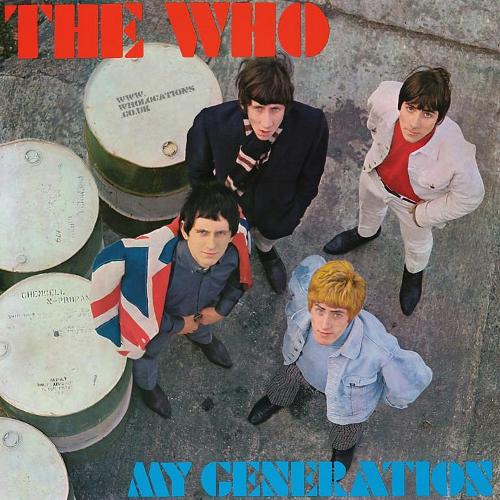
2.98 | 215 ratings My Generation |
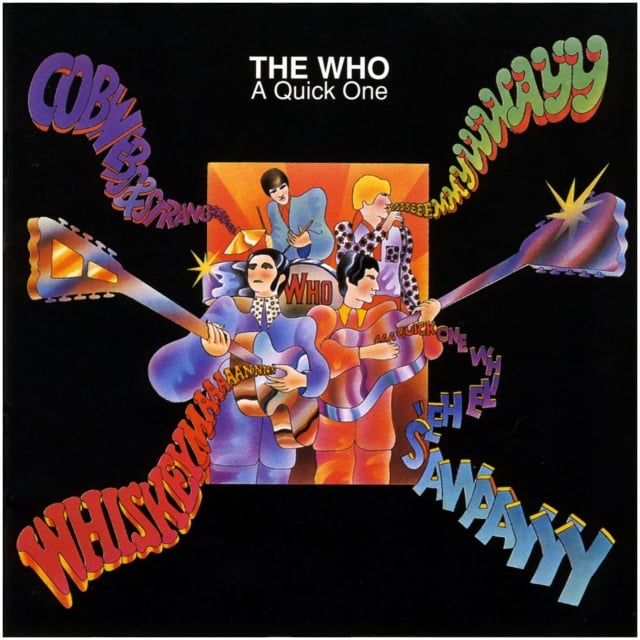
2.99 | 199 ratings A Quick One |
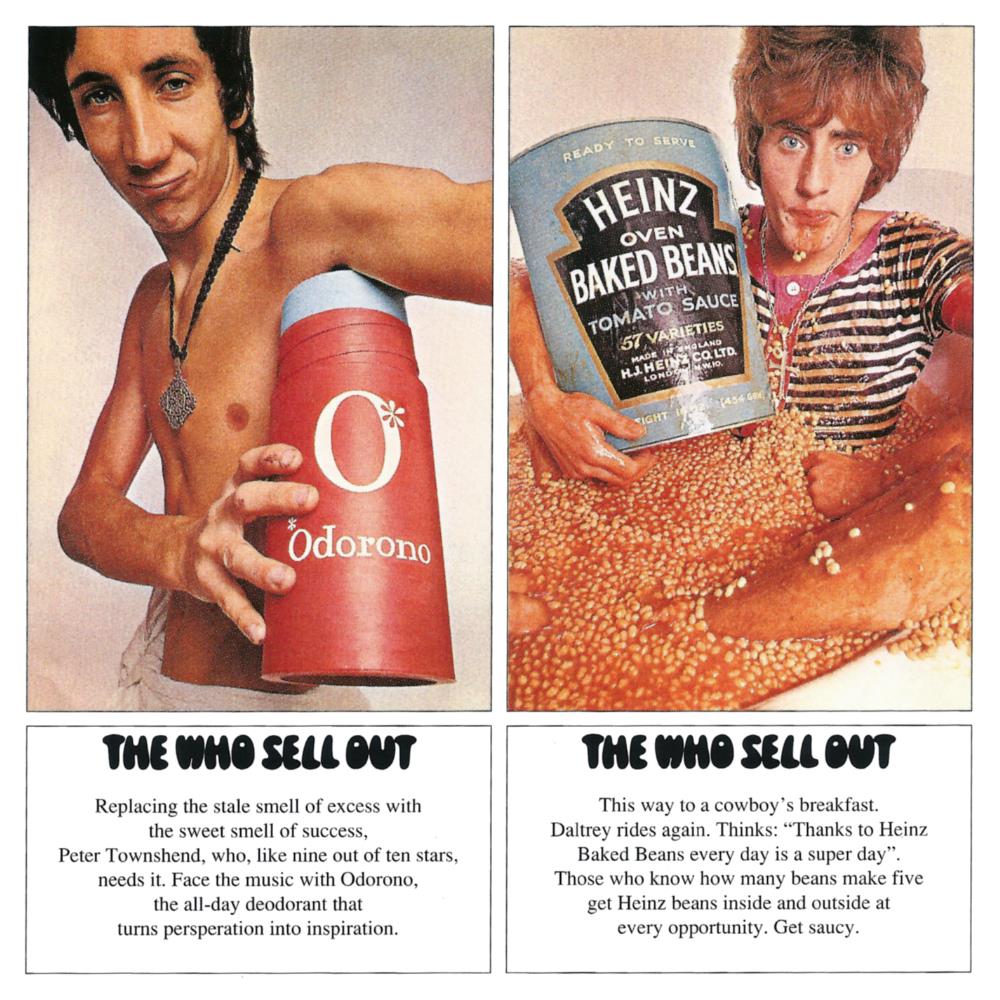
3.55 | 276 ratings The Who Sell Out |
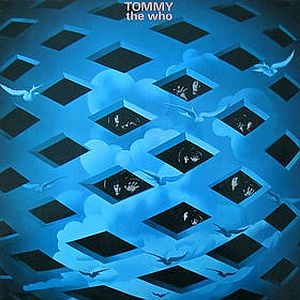
4.00 | 628 ratings Tommy |
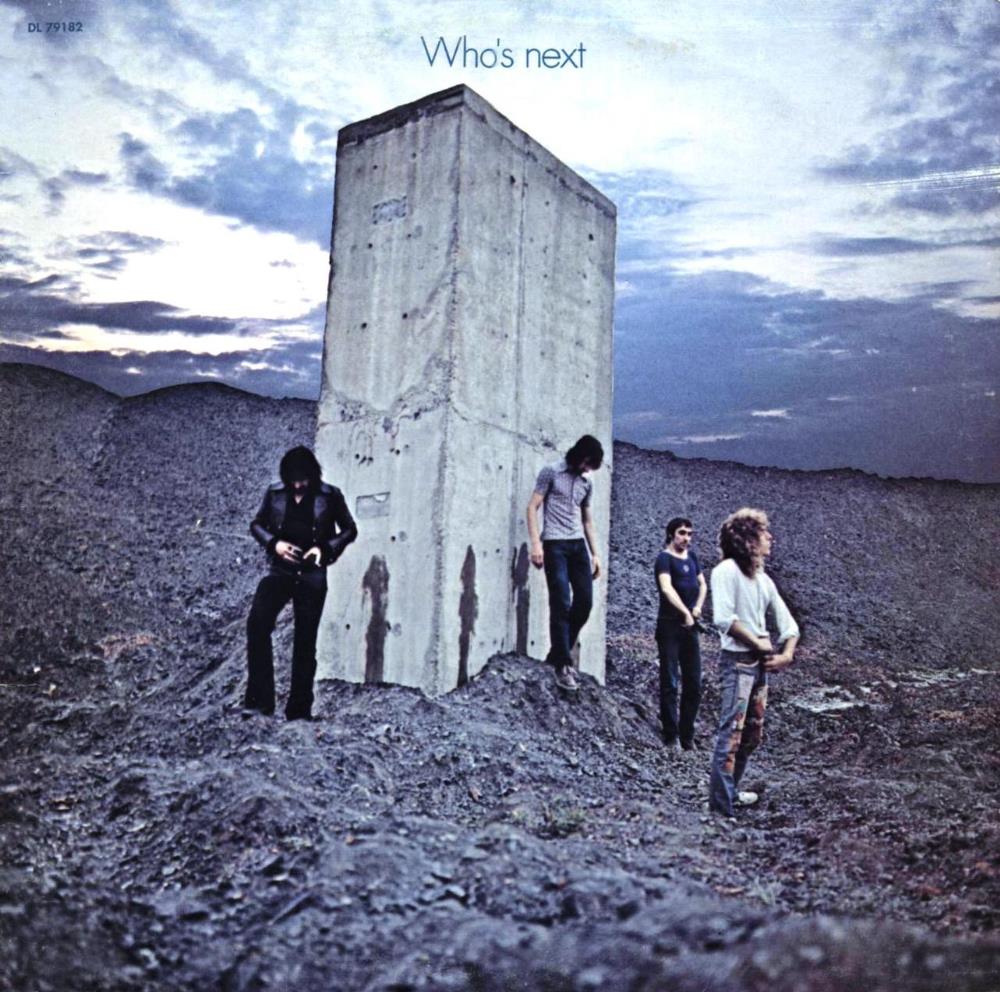
4.42 | 662 ratings Who’s Next |
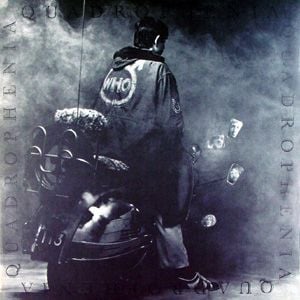
4.50 | 662 ratings Quadrophenia |
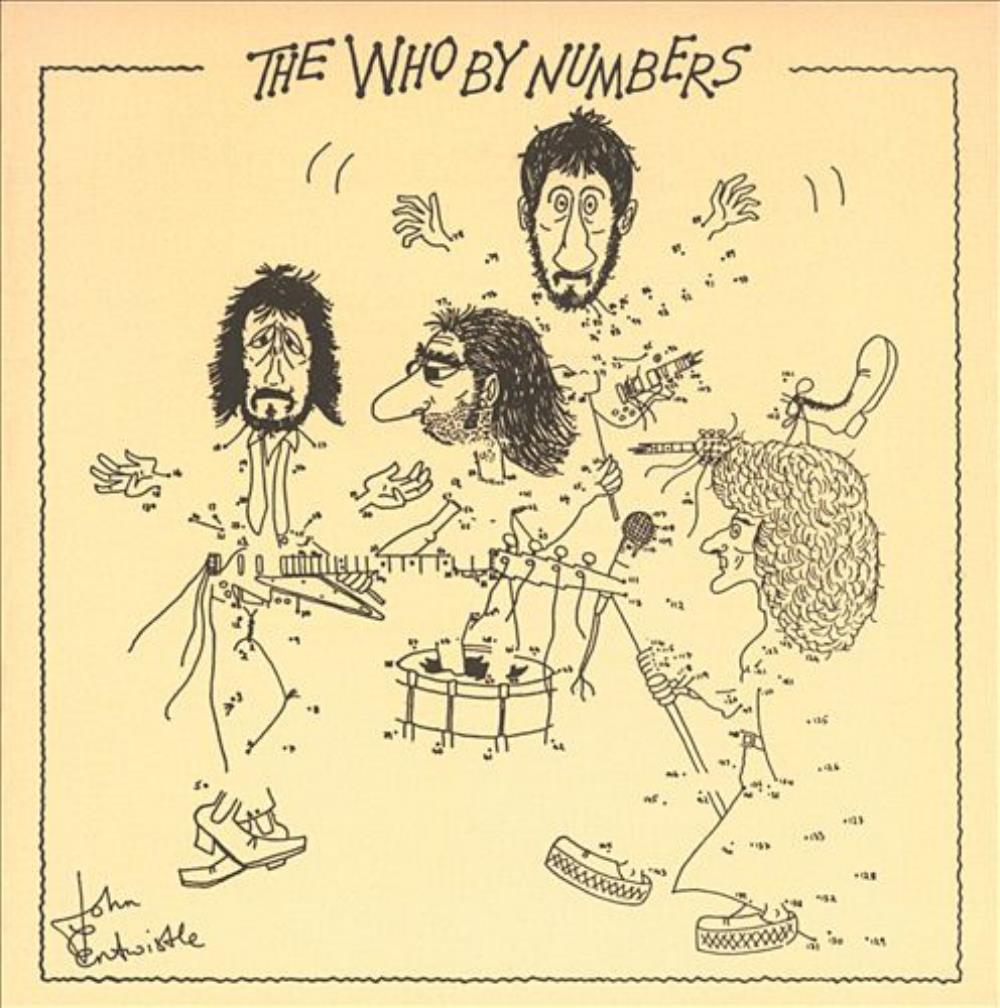
3.50 | 222 ratings By Numbers |
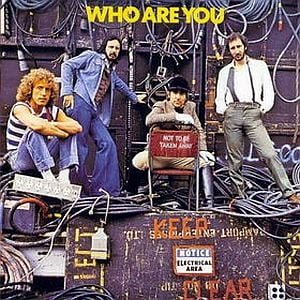
3.32 | 237 ratings Who Are You |
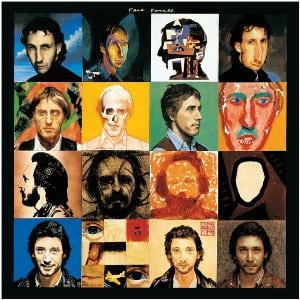
2.48 | 136 ratings Face Dances |
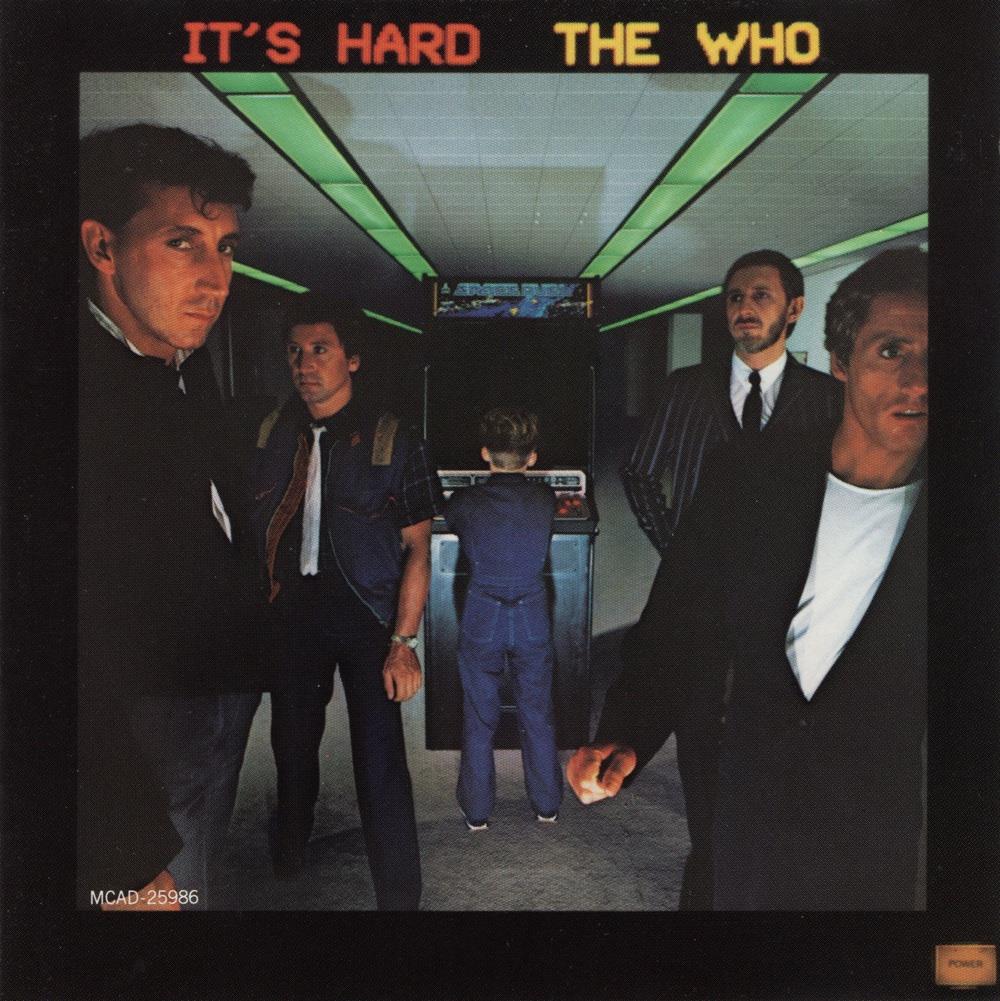
2.61 | 127 ratings It’s Hard |
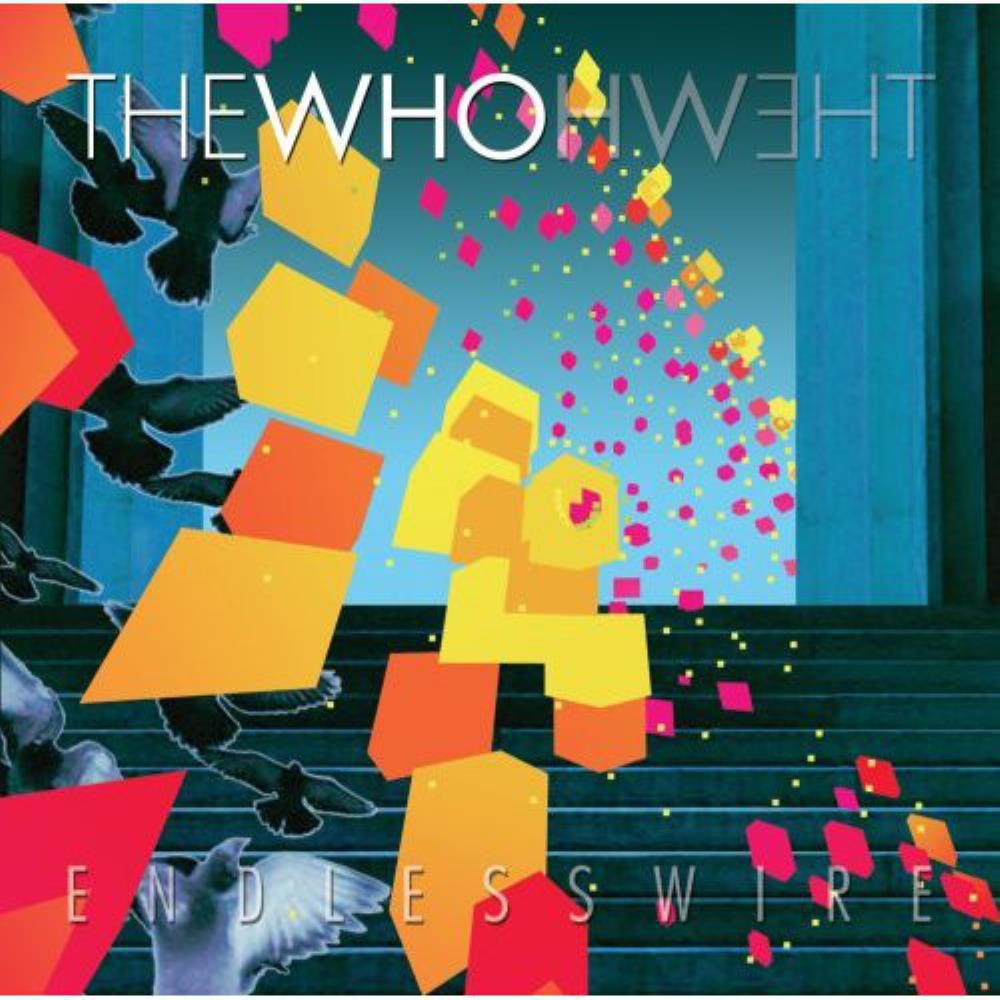
2.89 | 101 ratings Endless Wire |
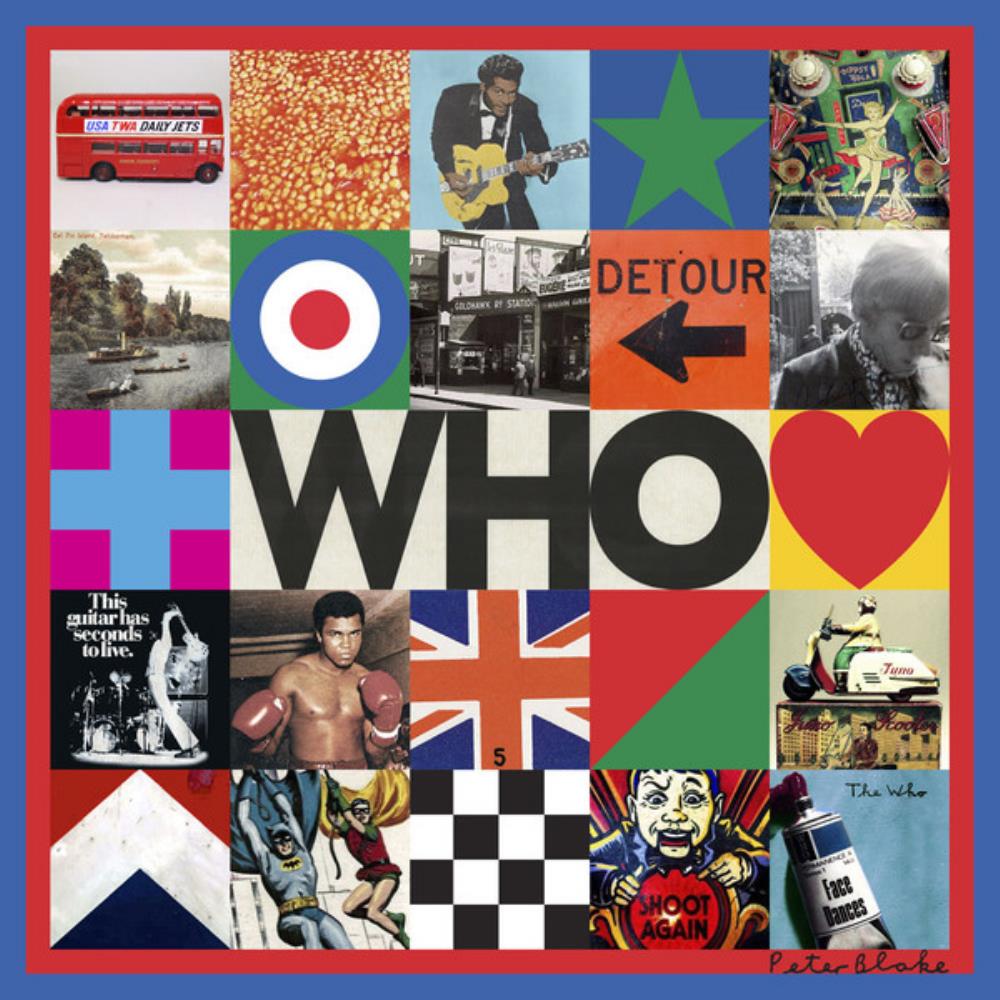
3.61 | 42 ratings WHO |
THE WHO Live Albums (CD, LP, MC, SACD, DVD-A, Digital Media Download)
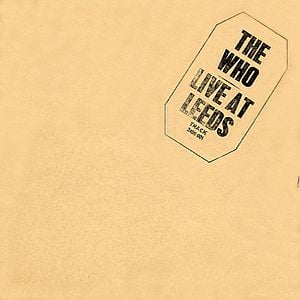
4.02 | 178 ratings Live At Leeds |
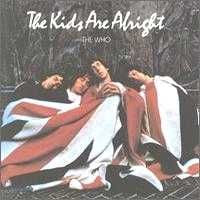
4.05 | 54 ratings The Kids Are Alright (Original Soundtrack of the Film) |
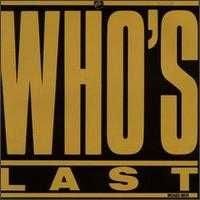
2.67 | 27 ratings Who�s Last |
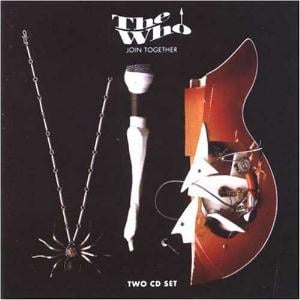
3.11 | 18 ratings Join Together |
2.86 | 5 ratings The Who Live (Golden Age serie) |
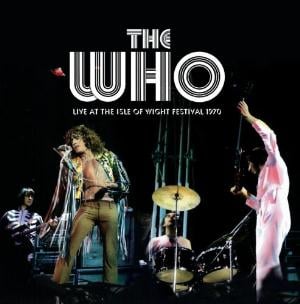
3.33 | 36 ratings Live at the Isle of Wight Festival 1970 |
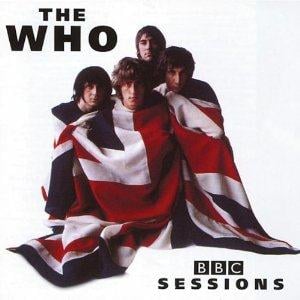
3.06 | 32 ratings BBC Sessions |
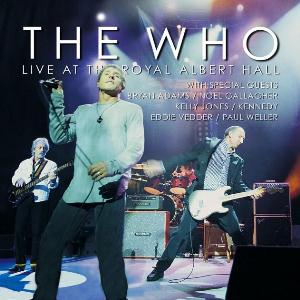
3.88 | 23 ratings Live At The Royal Albert Hall |
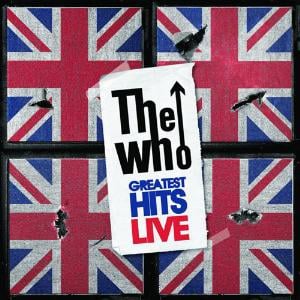
3.17 | 6 ratings Greatest Hits Live |
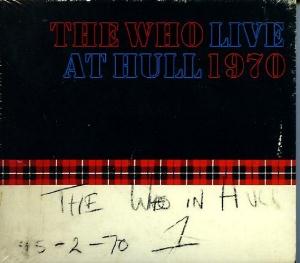
3.94 | 15 ratings Live At Hull |
THE WHO Videos (DVD, Blu-ray, VHS etc)
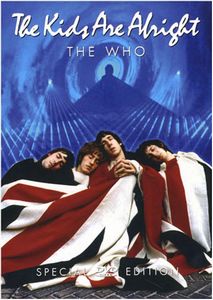
3.90 | 35 ratings The Kids are Alright |
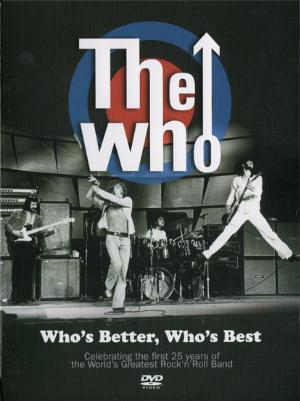
3.73 | 11 ratings Who’s Better, Who’s Best |
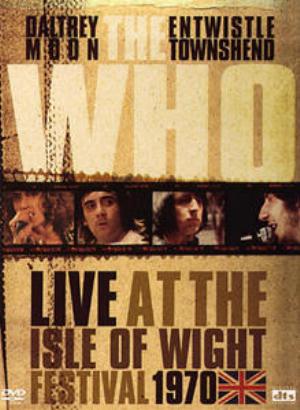
3.60 | 19 ratings Live at the Isle of Wight Festival |
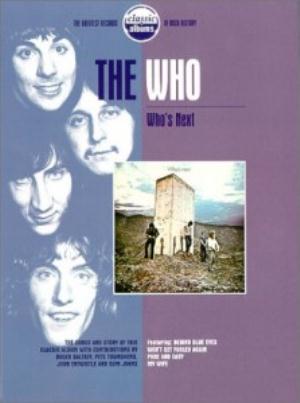
4.00 | 14 ratings Who’s Next — Classic Albums |
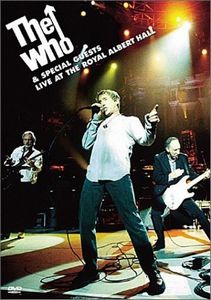
3.92 | 17 ratings Live at the Royal Albert Hall |
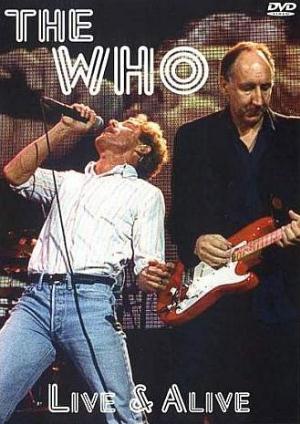
2.86 | 7 ratings Live & Alive |
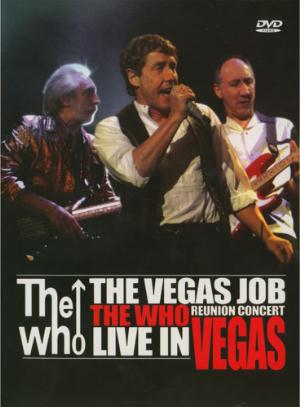
2.71 | 7 ratings The Vegas Job |
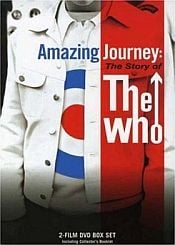
3.18 | 18 ratings Amazing Journey |
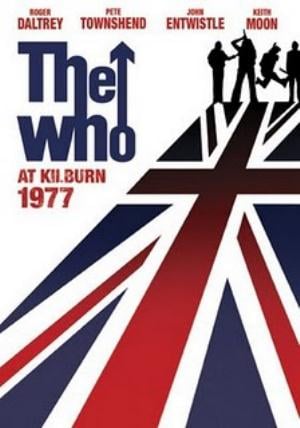
3.75 | 15 ratings The Who at Kilburn: 1977 |
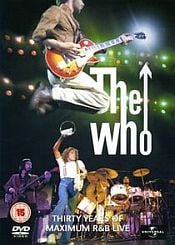
3.53 | 15 ratings Maximum R&B Live |
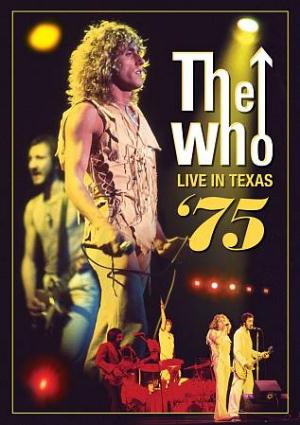
3.78 | 9 ratings Live in Texas ’75 |
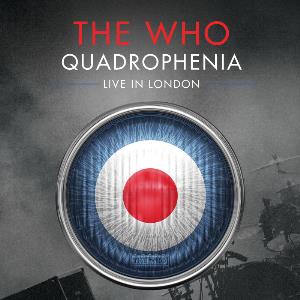
3.26 | 12 ratings Quadrophenia: Live in London |
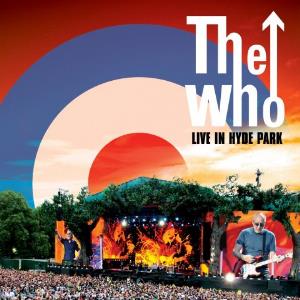
3.84 | 6 ratings Live in Hyde Park |
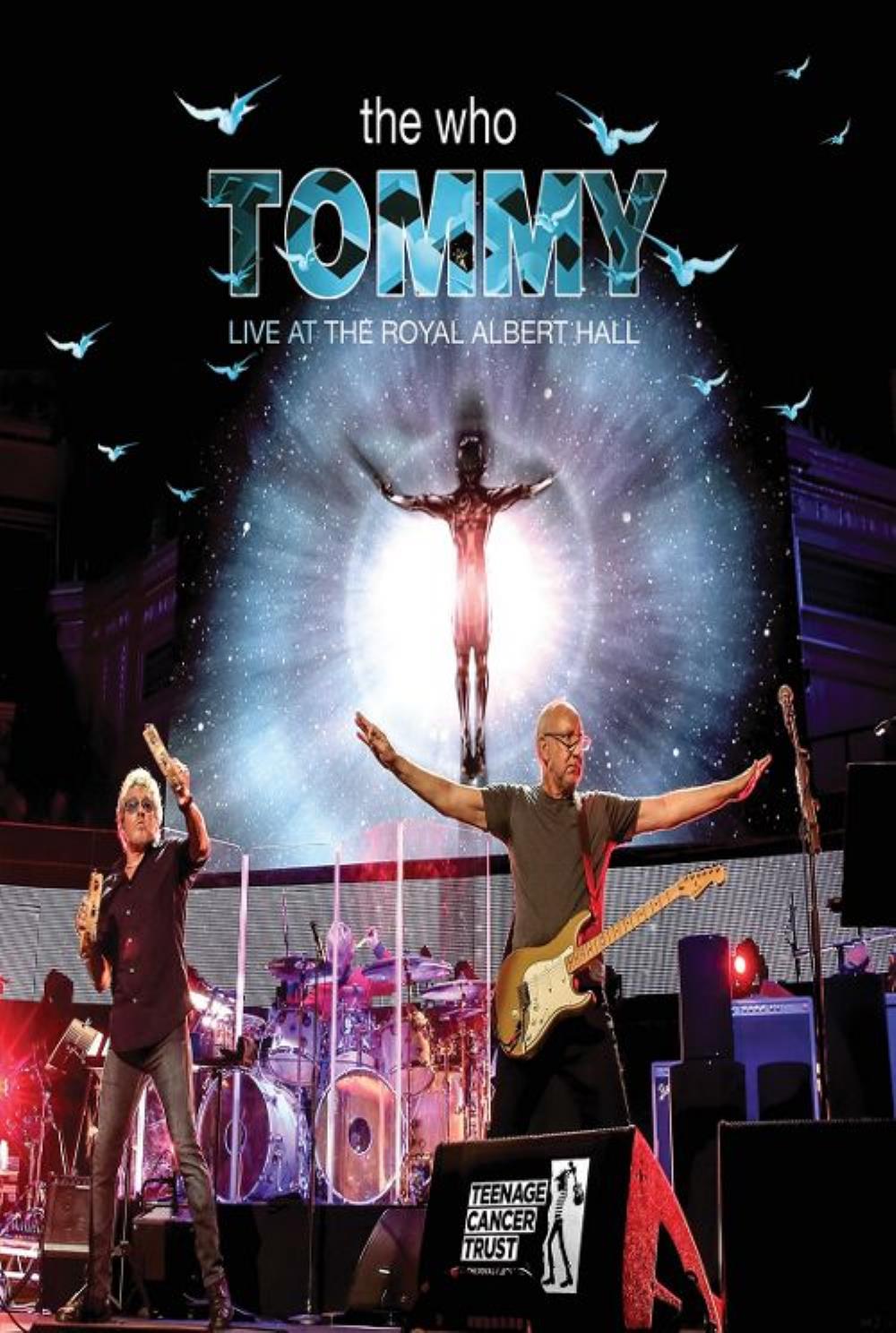
4.00 | 2 ratings Tommy: Live at the Royal Albert Hall |
THE WHO Boxset & Compilations (CD, LP, MC, SACD, DVD-A, Digital Media Download)
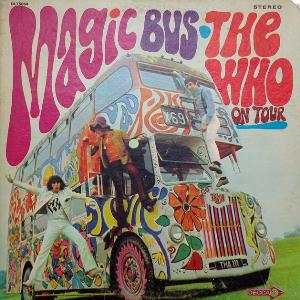
2.25 | 18 ratings Magic Bus: The Who on Tour |
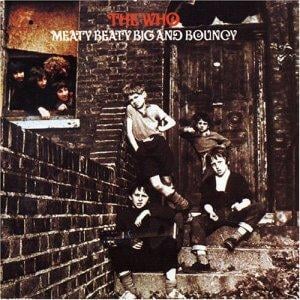
3.37 | 37 ratings Meaty, Beaty, Big and Bouncy |
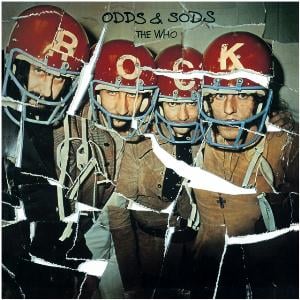
3.70 | 42 ratings Odds & Sods |
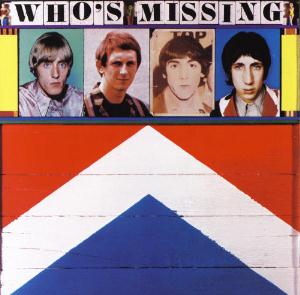
3.33 | 6 ratings Who’s Missing |
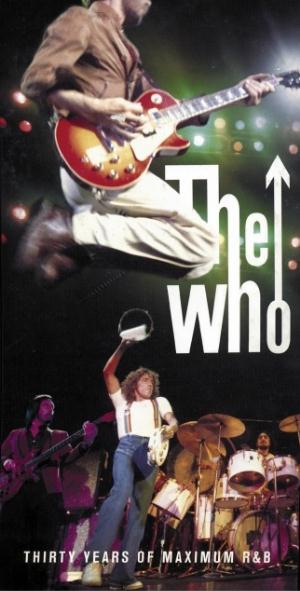
4.12 | 14 ratings Thirty Years Of Maximum R&B |
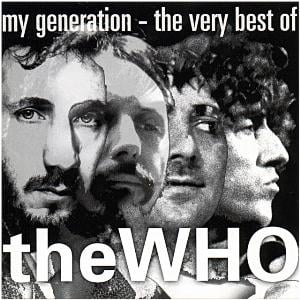
3.81 | 27 ratings My Generation — The Very Best of The Who |
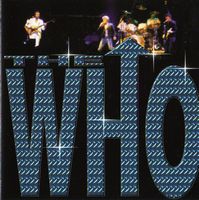
2.26 | 4 ratings The Who (budget compilation) |
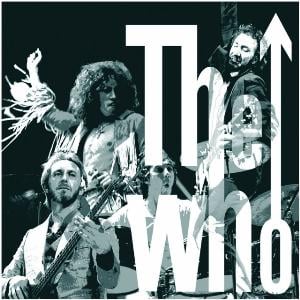
4.06 | 30 ratings The Ultimate Collection |
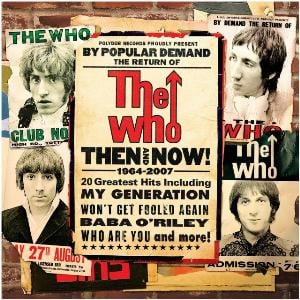
3.27 | 15 ratings Then and Now |
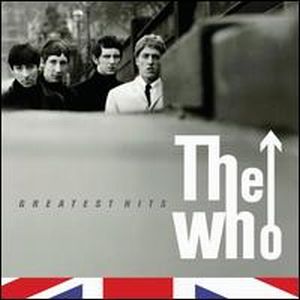
1.88 | 11 ratings Greatest Hits |
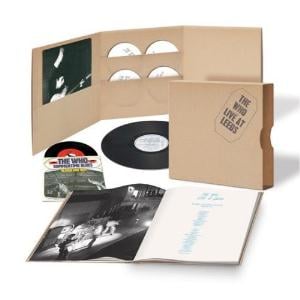
5.00 | 7 ratings Live At Leeds 40th Anniversary Super-Deluxe Collectors’ Edition |
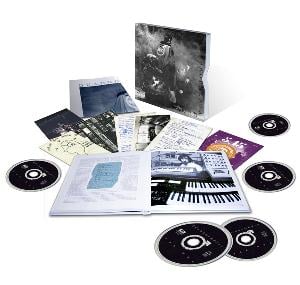
4.83 | 6 ratings Quadrophenia — The Director’s Cut (Super Deluxe Limited Edition) |
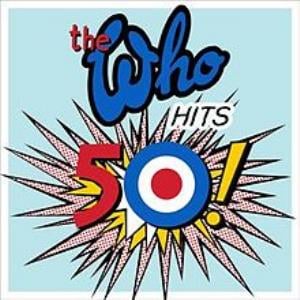
3.83 | 6 ratings The Who Hits 50! |
THE WHO Official Singles, EPs, Fan Club & Promo (CD, EP/LP, MC, Digital Media Download)
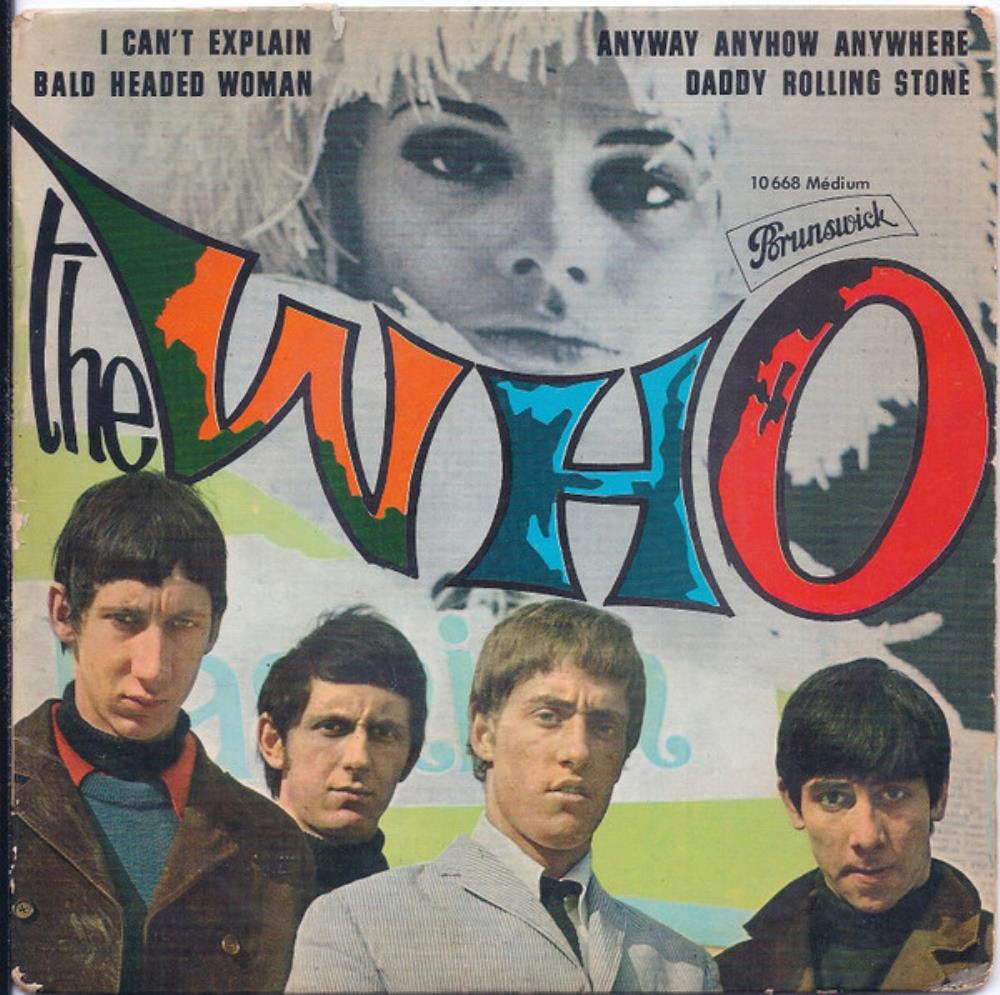
0.00 | 0 ratings I Can’t Explain |
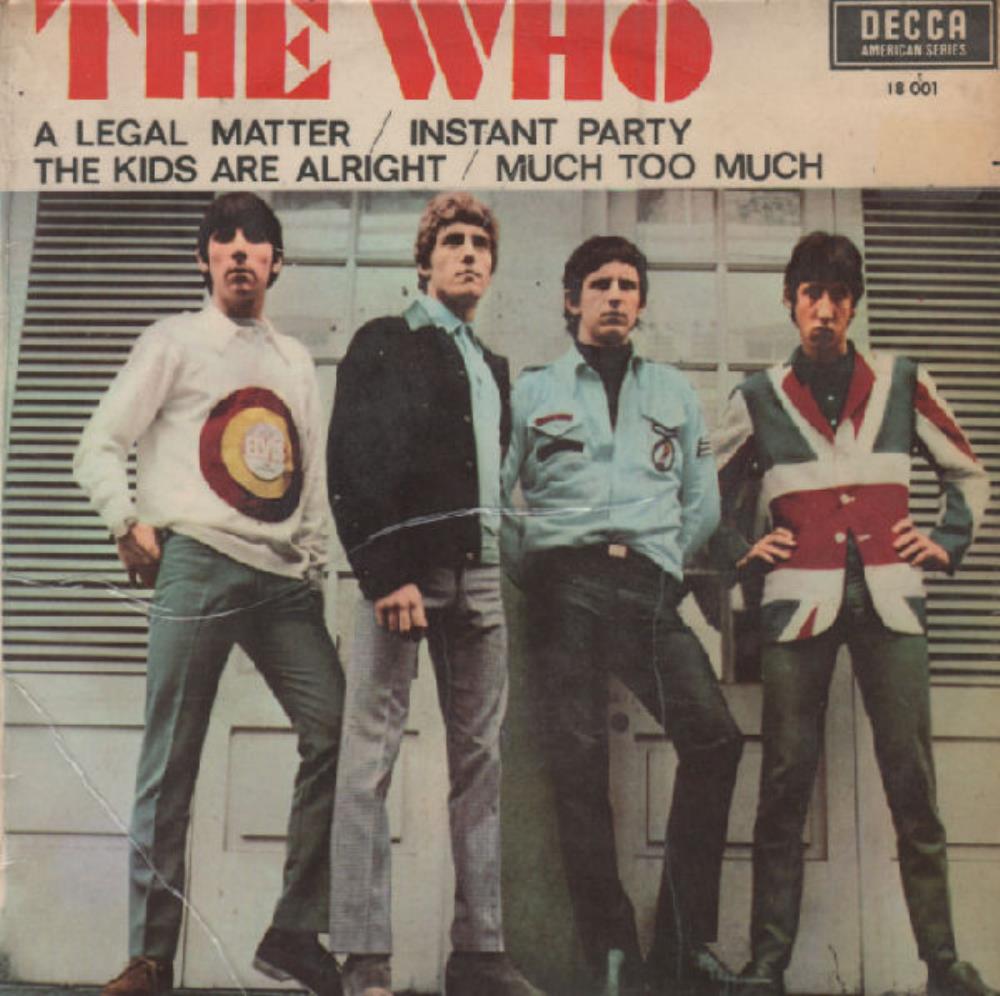
0.00 | 0 ratings A Legal Matter |
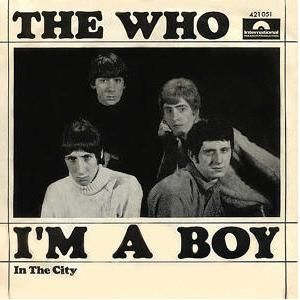
2.74 | 12 ratings I’m a Boy |
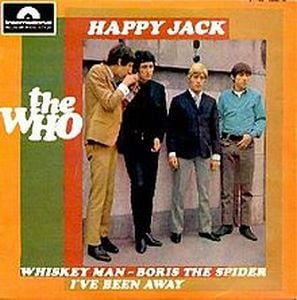
2.79 | 11 ratings Happy Jack |
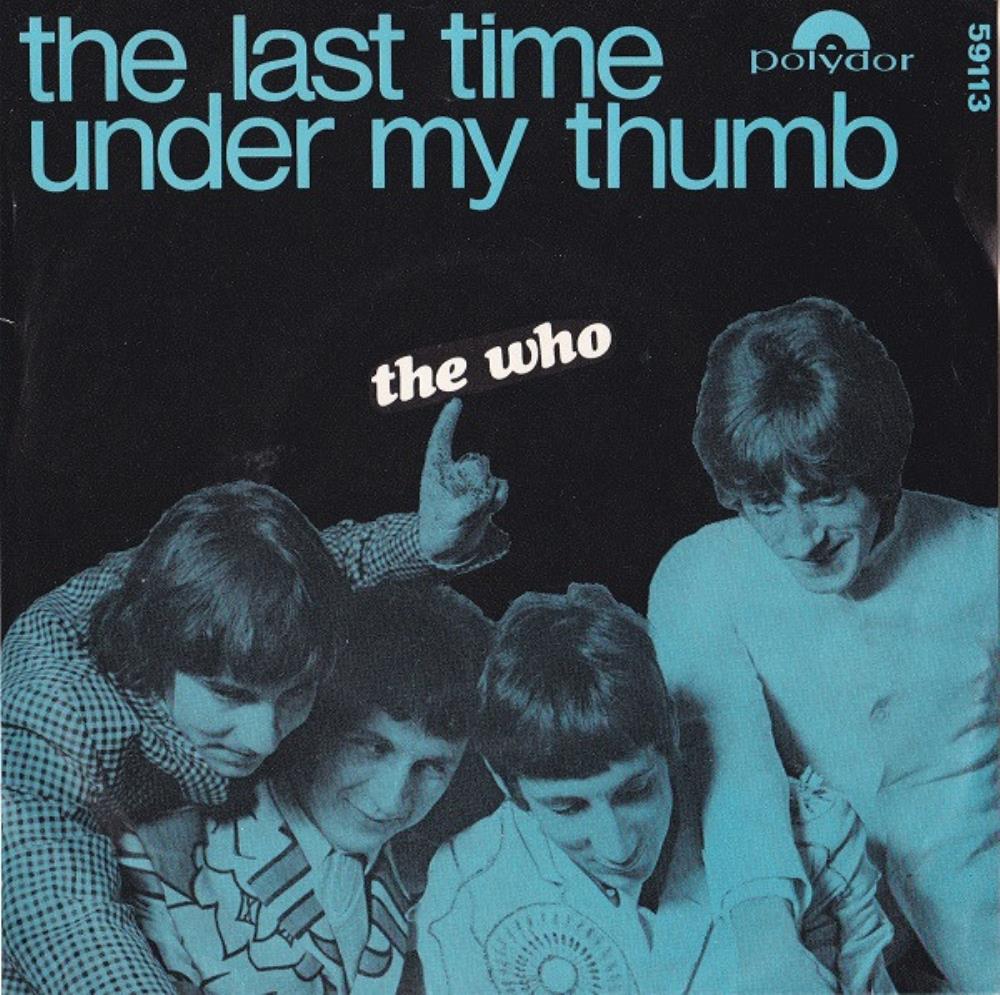
0.00 | 0 ratings The Last Time / Under My Thumb |
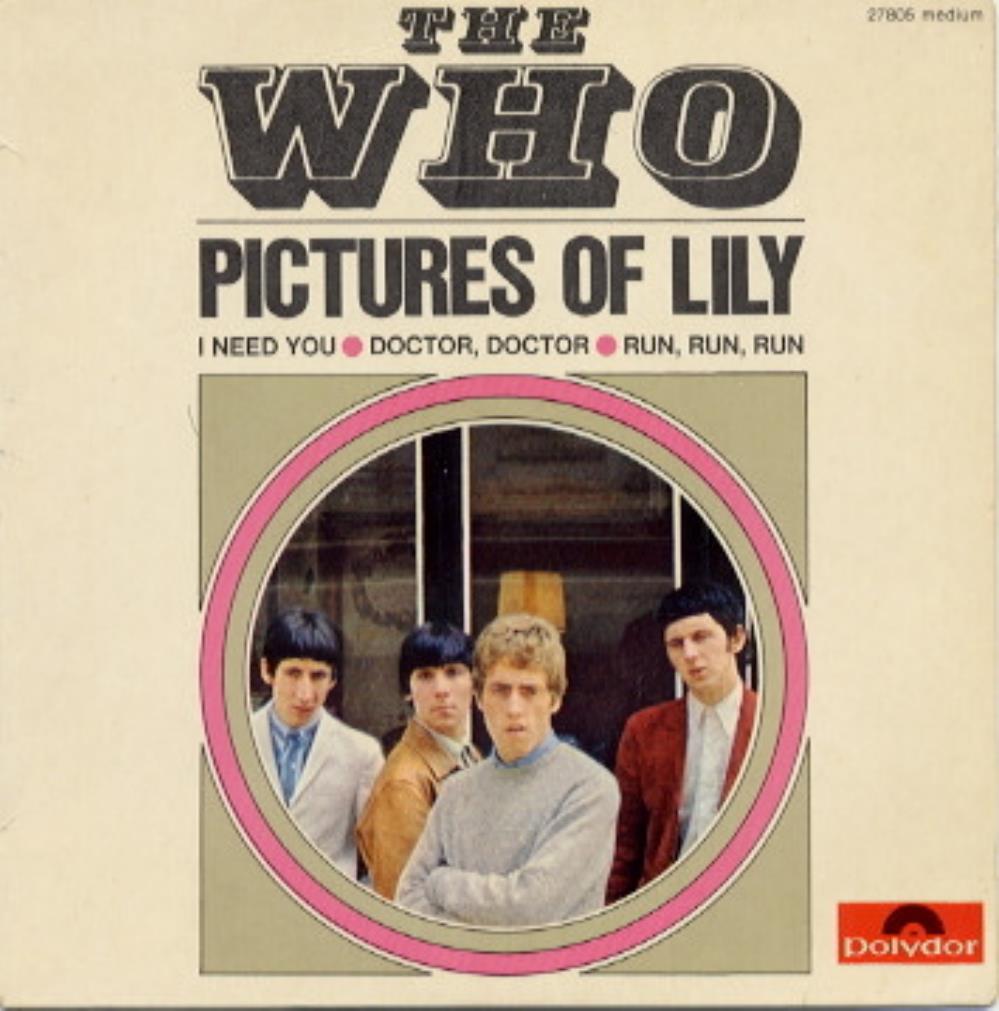
0.00 | 0 ratings Pictures of Lily |
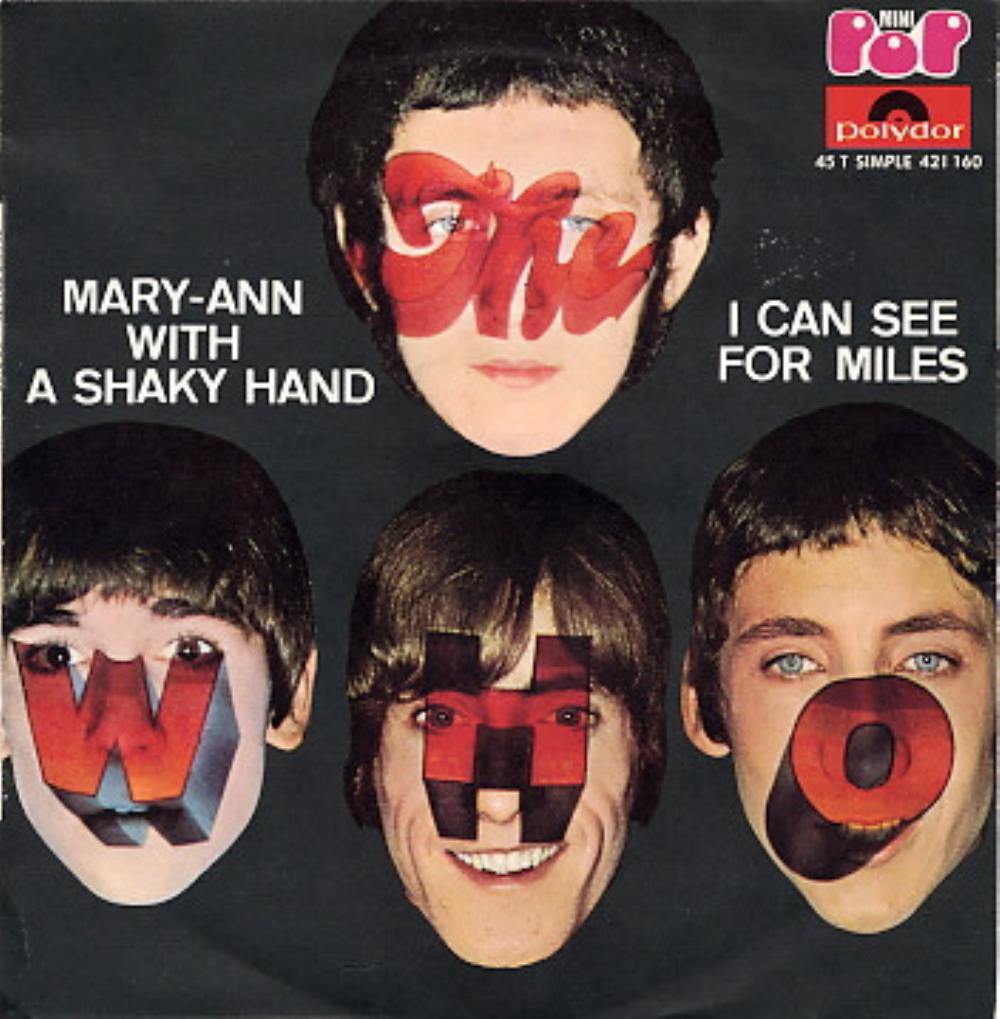
0.00 | 0 ratings I Can See for Miles |
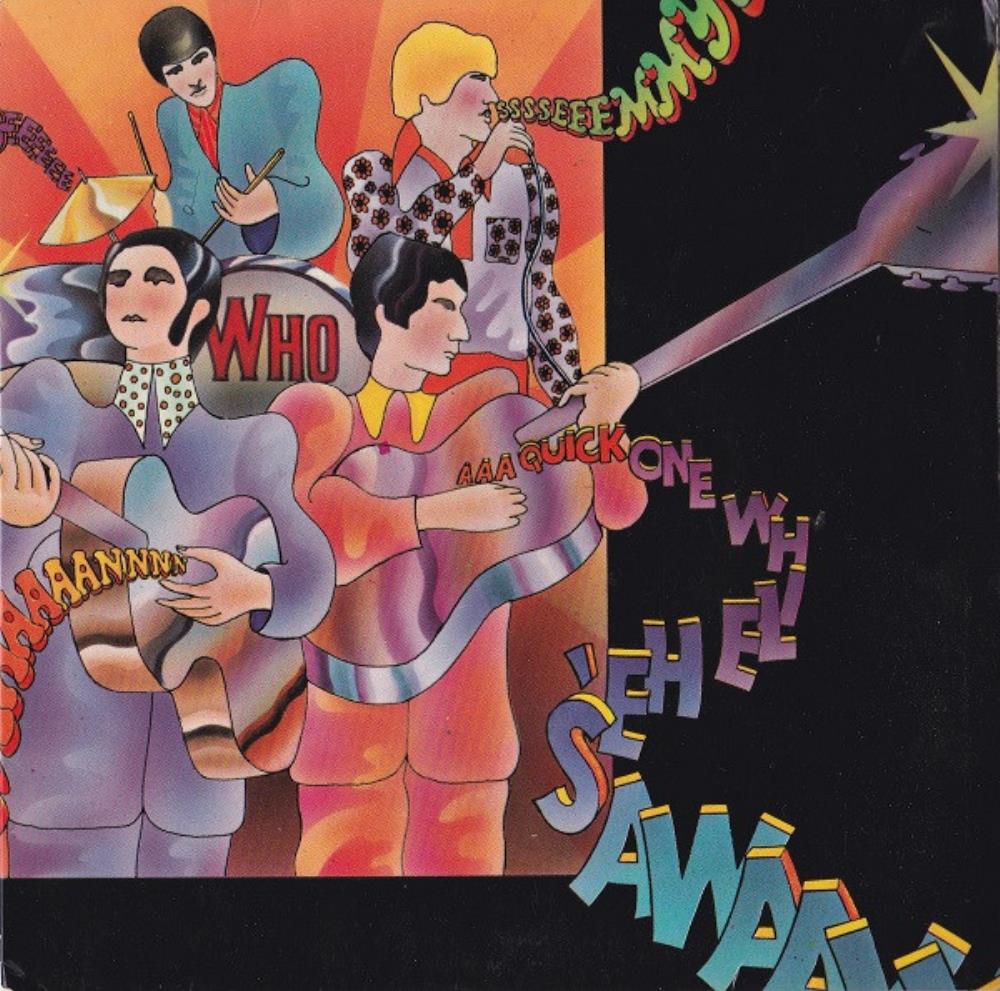
5.00 | 1 ratings A Quick One, While He’s Away |
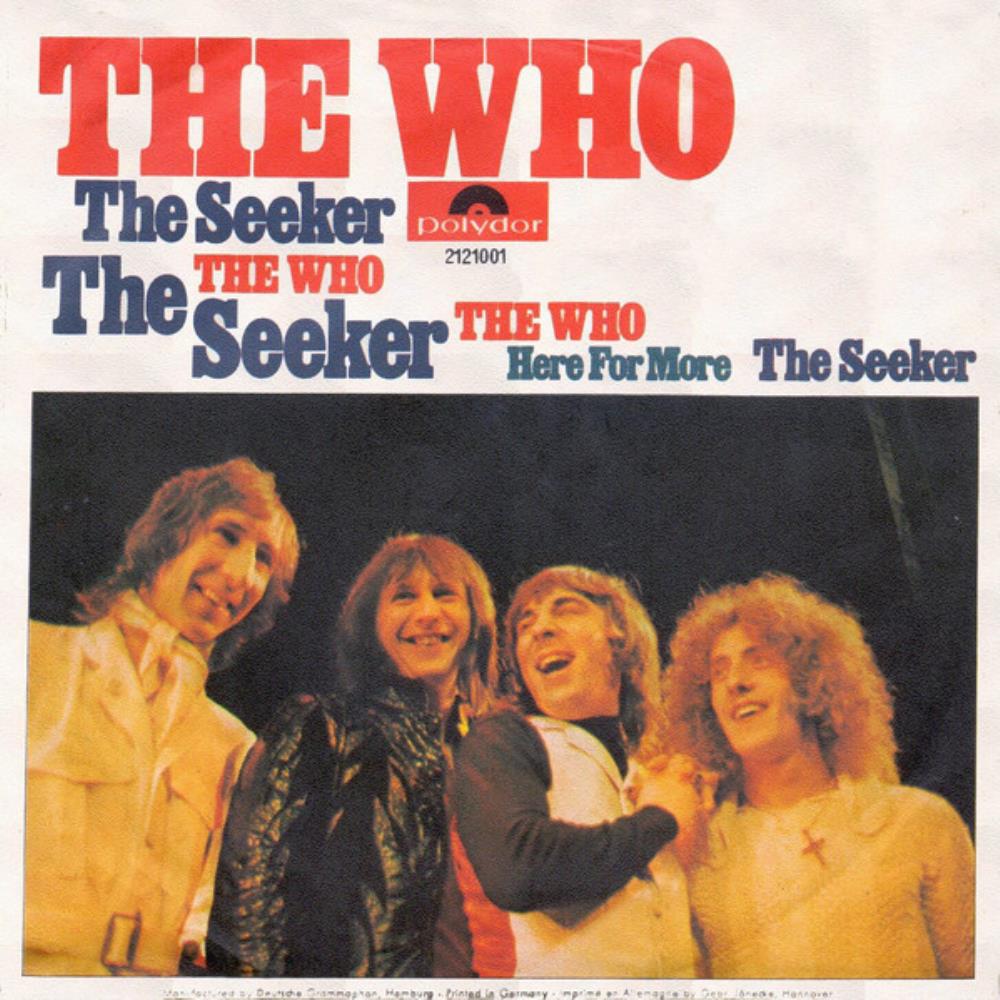
5.00 | 1 ratings The Seeker / Here for More |
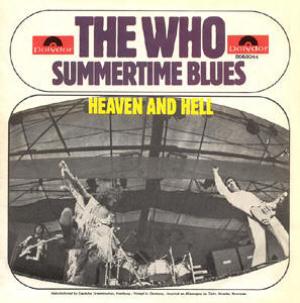
3.67 | 6 ratings Summertime Blues |
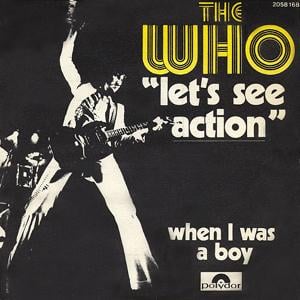
3.07 | 8 ratings Let’s See Action / When I Was A Boy |
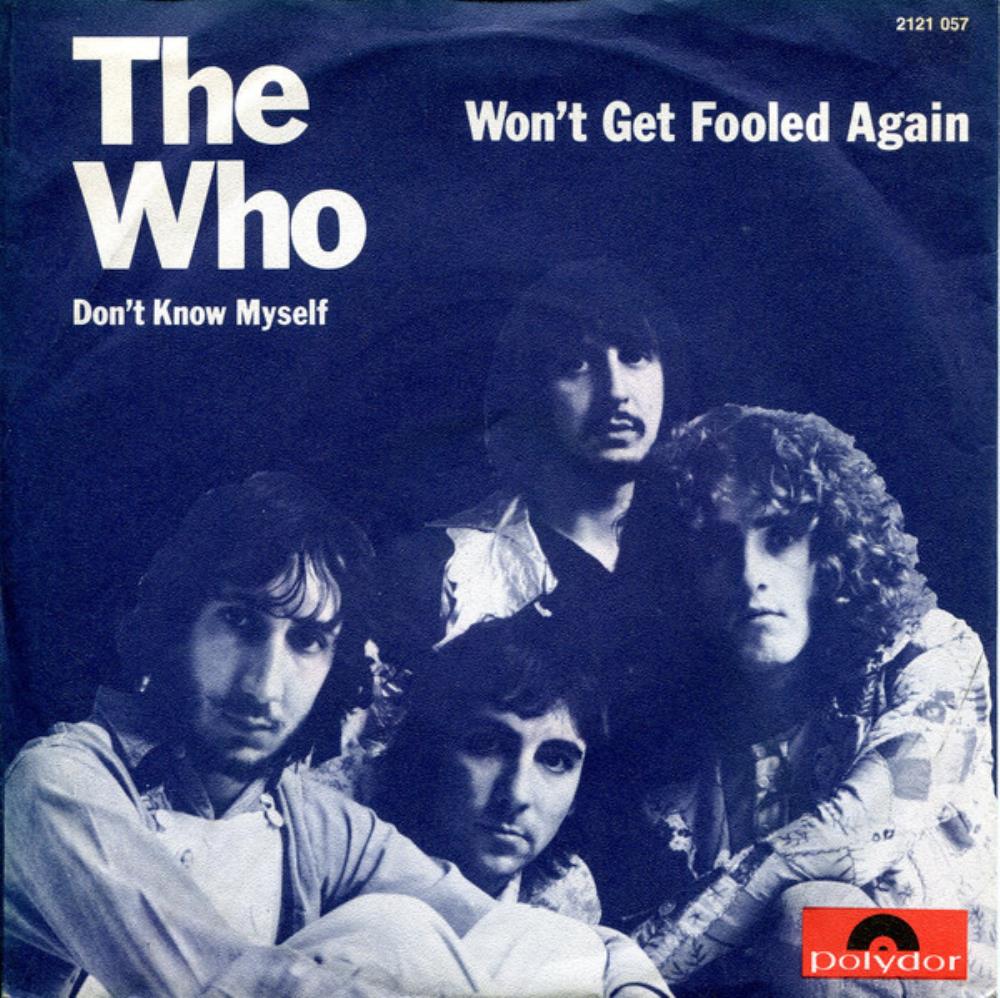
5.00 | 1 ratings Won’t Get Fooled Again / Don’t Know Myself |
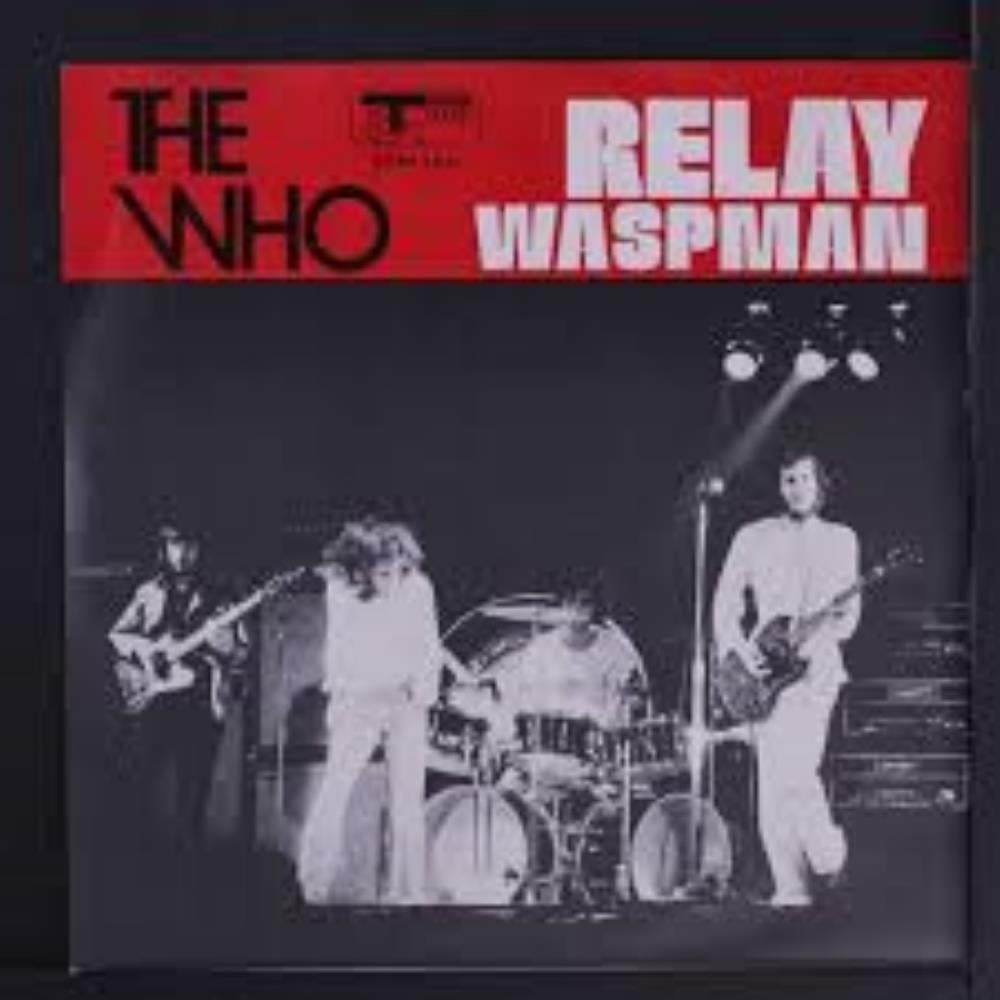
3.67 | 3 ratings Relay / Waspman |
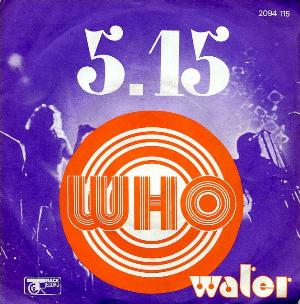
4.10 | 10 ratings 5.15 |
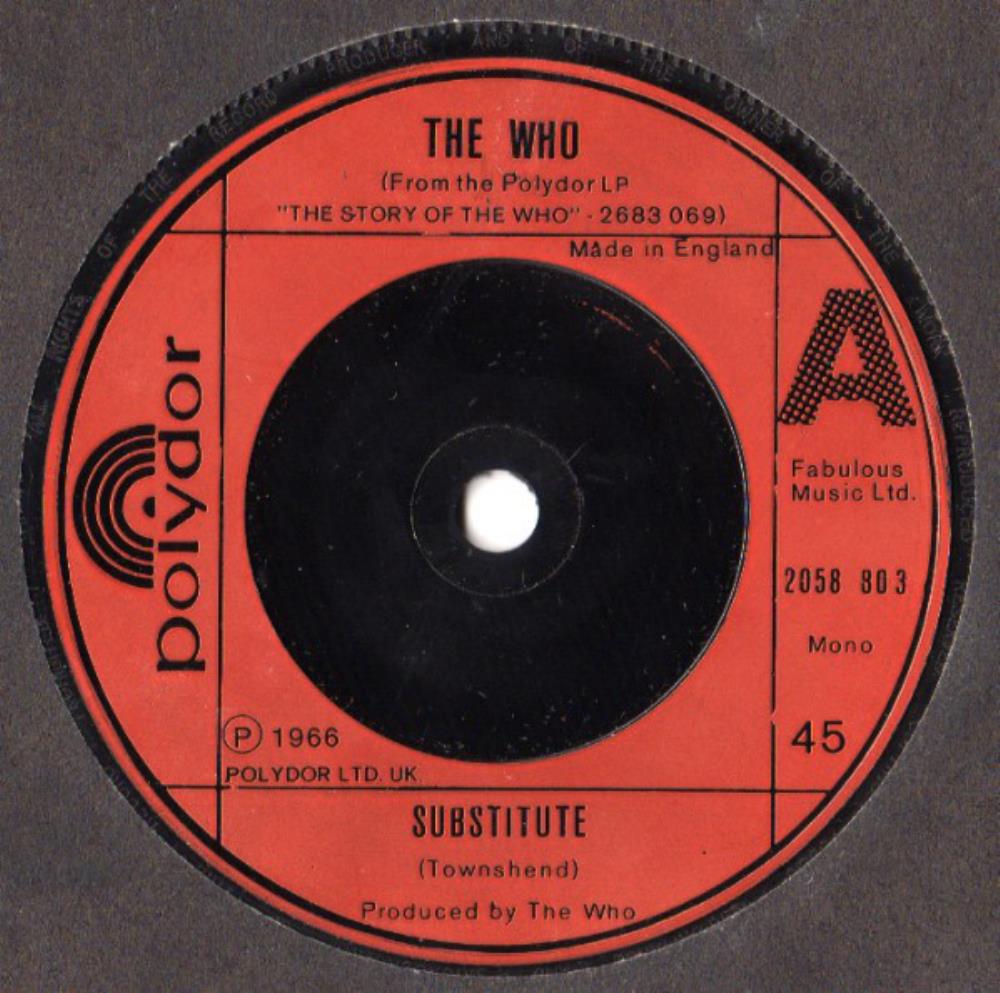
5.00 | 1 ratings Substitute |
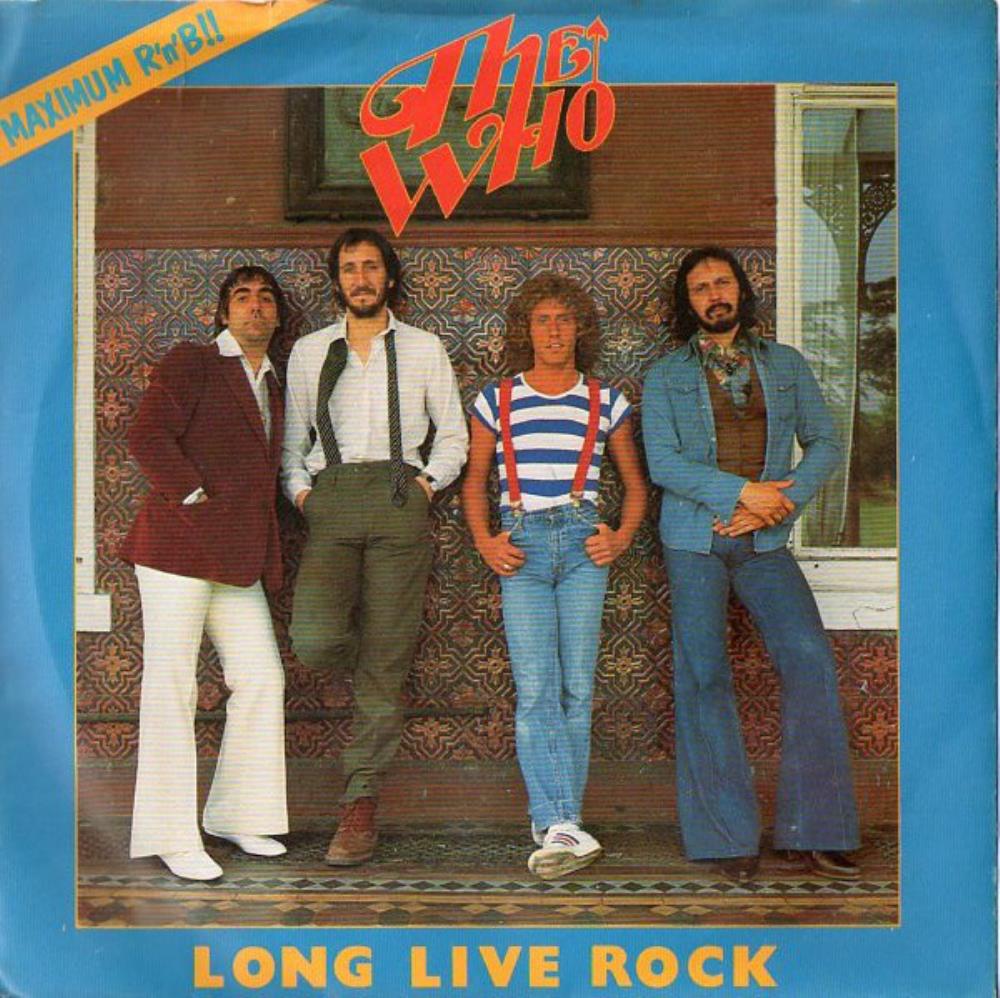
3.00 | 1 ratings Long Live Rock / I’m the Face / My Wife |
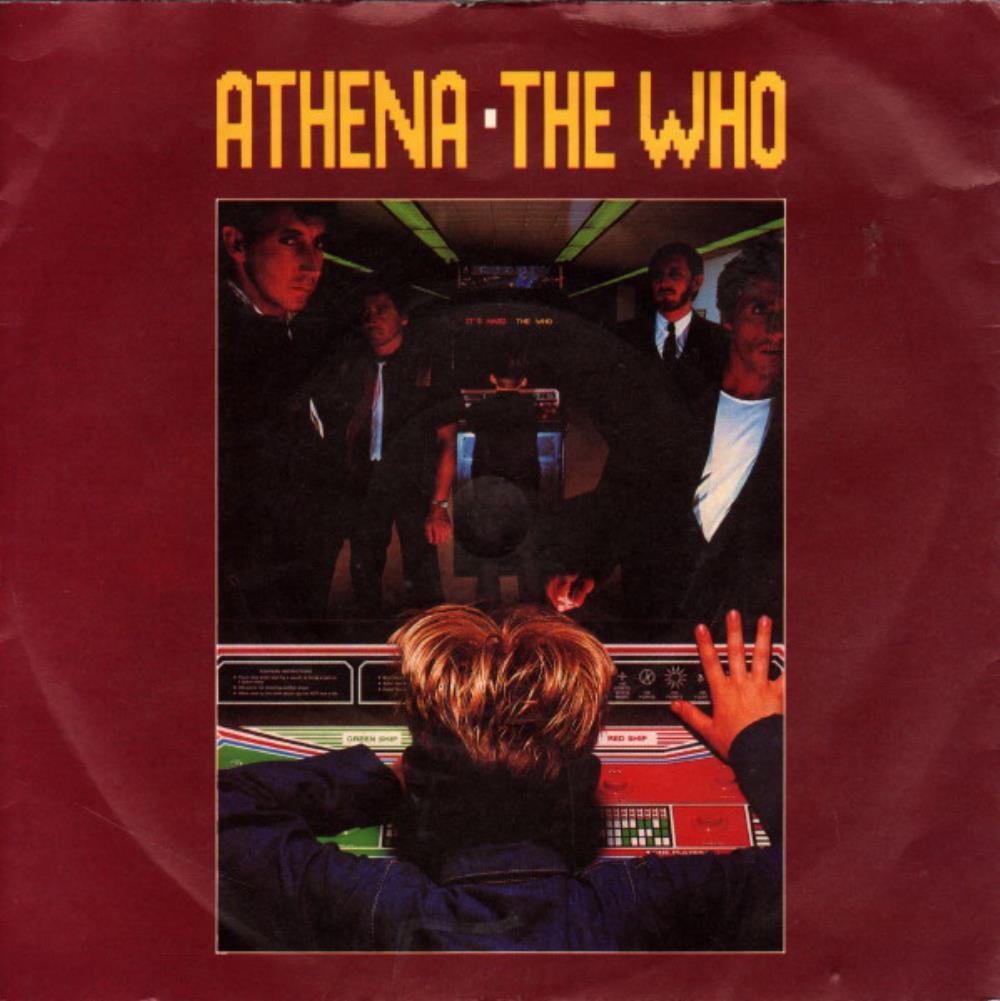
2.50 | 2 ratings Athena |
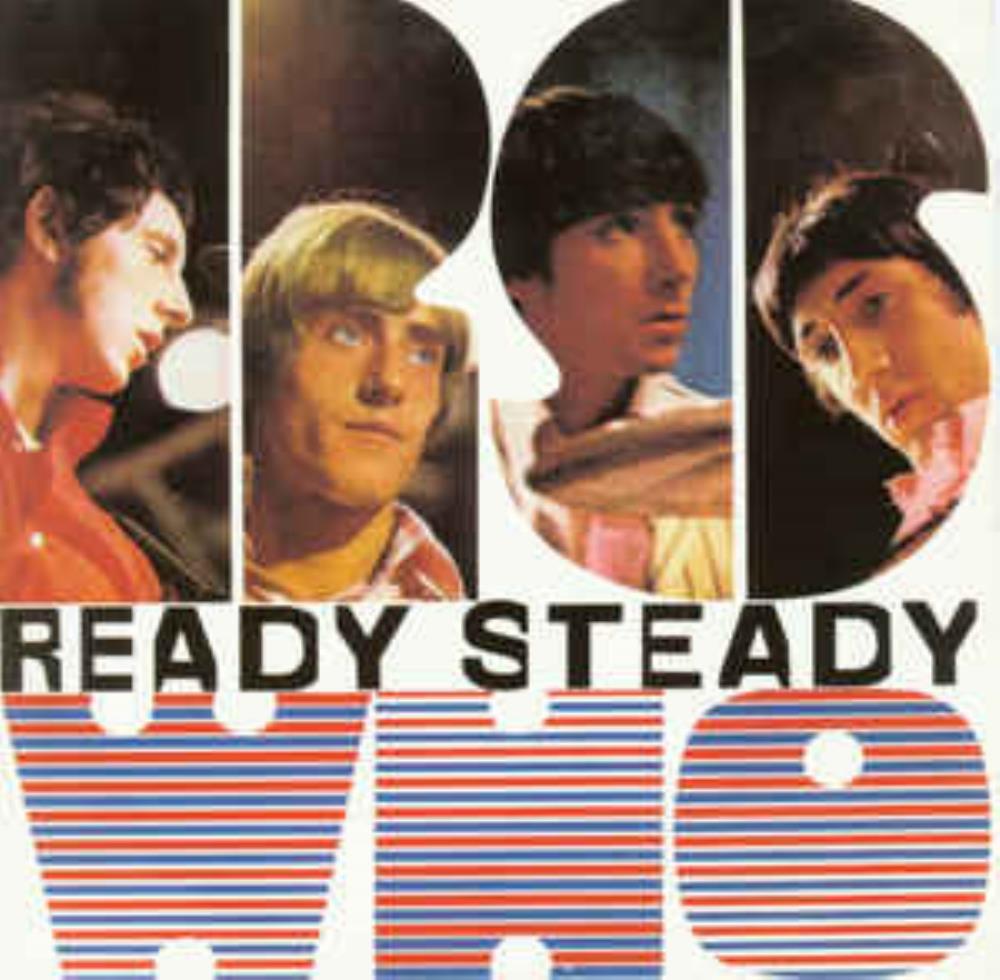
3.00 | 1 ratings Ready Steady Who |
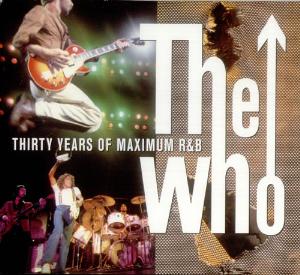
3.05 | 3 ratings Thirty Years Of Maximum R&B sampler |
THE WHO Reviews
Showing last 10 reviews only
Singles/EPs/Fan Club/Promo, 1967
5.00 | 1 ratings
BUY
A Quick One, While He’s Away
The Who Proto-Prog
Review by
Matti
Prog Reviewer
— First review of this album —
This really could be the most progressive 7″ singles recorded in 1966! When The Who were making their second
album that eventually was to be titled A Quick One, their producer and manager Kit Lambert encouraged Pete
Townshend to write a longer piece to fill up the album length. ‘A Quick One, While He’s Away’ (9:10) is a suite of six
song fragments, and it tells about a girl who has an affair while her lover is away but is forgiven.
The intro ‘Her Man’s Gone’ is a multi-vocal a cappella piece lasting only about 25 seconds, followed by an uptempo
rocker ‘Crying Town’. ‘We Have a Remedy’ is a charming movement with its la-la-la-la-la-laa harmonies, and the
hilarious ‘Ivor the Engine Driver’ introduces the other man in the first person. ‘Soon Be Home’ has a laid-back
country feel and The Beach Boys reminding vocal harmonies repeating the title’s words. The cathartic finale ‘You
Are Forgiven’ starts the B side of the single. The Who wanted cellos there, but Kit Lambert could not afford it so the
band ended up singing «Cello, cello, cello» at the beginning of the movement.
In the performance on Live at Leeds Townshend calls the song a mini-opera and introduces it as Tommy’s parents.
Indeed it is a clear precursor to the seminal «rock opera» Tommy (1969). Within nine minutes you hear many things
that stylistically have an equivalent somewhere along the 2-LP of Tommy. It sure feels very hectic and tightly
packed, but that’s an essential part of its peculiar charm. The movements follow each other in a hurry, and yet the
whole is very coherent. The production is very good for its time.
‘A Quick One, While He’s Away’ has a tragic background underneath its cheerfulness. It was inspired by Townsend’s
childhood experiences, as he reveals in his 2012 autobiography Who I Am. (I am citing the Wikipedia article.) The
song «briefly refers to his molestation as a child, but not explicitly. ‘Ivor the Engine Driver’ is said by Townshend to
be a metaphor for the possible abuser. The ‘Her Man’s Been Gone’ section refers to Townshend’s separation from
his parents and spending time with his grandmother, Denny. The crying in the ‘Crying Town’ portion is his own, for
his parents to pick him up and to leave Denny, who is said by Townshend to have been the person who brought in
unknown men into her home. The ‘little girl’ referred to in his song is actually a make-believe ‘imaginary constant
friend’ and ‘twin girl who suffered every privation I suffered’. ‘You Are Forgiven’ presents someone coming to
Townshend’s rescue: his mother. The lyric about sitting on Ivor the Engine Driver’s lap ‘and later with him had a
nap’ also hints at what may have happened. The song ends with the verbal chant of ‘you are forgiven’, which
Townshend states that when The Who performed the song, he would always get into a frenzy. He states that those
who were being forgiven was everyone referred to in the song’s lyrics, including himself.»
In 2016, Rolling Stone ranked ‘A Quick One, While He’s Away’ number 4 on its list of the 50 greatest songs by The
Who.
The single’s B side continues with ‘So Sad About Us’ which on A Quick One album comes before the epic final piece.
It’s a good lesser known song from The Who, combining the raw rock energy and The Moody Blues reminding
melodicism. I’m tempted to give the breathtaking musical contents of this unique single five stars. The Who
definitely were ahead of their time in 1966.
Studio Album, 1965
2.98 | 215 ratings
BUY
My Generation
The Who Proto-Prog
Review by
DangHeck
Prog Reviewer
[Hello from the future! I really don’t know how it used to be, but it must be said: We aren’t judging Proto-Prog on its merits as being «Progressive Rock», but simply as «Rock Music», per the rating standards. I also must acknowledge here and now that I not only rated this before I was actually reviewing (a grave sin, I know), but that perhaps my mind can, by appearance, change in admittedly a very short period of time; hopefully more a reflection of me honing my ratings and therefore overall personal standards. Generally speaking, perhaps the greater Prog fandom genuinely doesn’t care for early The Who. On second thought, «the greater Prog fandom» seems to be right on the money here.]
The Who started off here, I always thought most strongly, in 1965, in the midst of the British Invasion (John Entwistle already sporting the Union Jack…et… with pride). Reps of the Mods with their contemporaries The Small Faces, they and plenty other Brits of the era nerdily inspired by Black American culture (whether Soul-loving Mods or Merseybeat R&B-obsessive Rockers), straddle the line between the cool ‘n soulful and the booming ‘n searing. [This will be a review for the… apparently 2002 Remaster edition… selected most selectively, just so I can talk about «I Can’t Explain» even briefly haha.]
A tell of the time from certain tracks, we get straight-ahead, early Garage Rock in the opener, «Out in the Street» (ballsy for the time, for sure); and «The Good’s Gone», featuring some Proto-Punky chillout, to my ears a la Iggy Pop-esque vocals (maybe? Lou Reed?). I definitely enjoy this’n, despite its momentary indifference to the guns-blazing Rock of The Who’s most memorable numbers. «Much Too Much» is a bit of a mix of these two modes, even expressing the first moments of their brand of genre-defining Power Pop with bright drums and a simple melody. The Garage-ready «It’s Not True» is just fine. Back in this mode from a quick hiatus is «A Legal Matter», a decent track with obviously lesser vocals from our primary songwriter, the otherwise fantastic Pete Townsend. Rolling drums blast into our ears on «The Ox», by far the heaviest song of the whole, featuring, though too, some striding keys.
Yet another sign of the time was the to me now-somewhat-surprising presence of R&B, heard prominently on the second track(?!) of this album, «I Don’t Mind». This track has some real heft in the midst of classic, melodic B.A.M. observance. It’s fine haha, but it has something. This sound results specifically in a soft dance number in «La-La-La Lies», reminiscent to me immediately of The Beatles’ «Tell Me Why», released a year and a half earlier on A Hard Days Night (1964). The Soul continues on «Please, Please, Please». «I’m A Man» is a… poorly aged rendition of a sort of Howlin’ Wolf Blues number; decent ideas, but nothing that drives it to anything great. The final track of this Afro-American mode is the wonky «Daddy Rolling Stone», the final bonus track. Pretty cool, pretty funky, with some sort of honky-tonk piano.
Squarely in the middle of the release, the title track, «My Generation», is of course a must-hear, an era-defining moment in music history. It’s hooky, punky, and, frankly, daringly cool as hell. We have unique, stuttering vocals from Daltry and the insane, flailing drumming from Keith Moon. Right up next, starting the second side, is one of the strongest on the album, the best example of early Power Pop present here, «The Kids Are Alright». Excellent melody, great and memorable instrumentation. And the bridge!!! Good God Almighty! Another highlight/must-hear is the Garage-Pop of «Circles». Awesome melody, and heavy instrumentation. It’s pretty much got it all. What I can say is that I would actually recommend the Freakbeat cover of this by Fleur De Lys all the more. Absolutely fantastic stuff. As mentioned in my intro, I had to take time for the bonus track «I Can’t Explain», a single backed with «Bald Headed Woman» (a bombastic White R&B track, which only gets better as it goes). «I Can’t Explain» is yet another quintessential Power Pop tune, to be sure.
Overall, a solid debut LP (better to my ears than, say, Please Please Me, for instance). See my [super]boldings for the best of the best. Other slight standout tracks are «The Good’s Gone» and «The Ox». A lowered re-rate was certainly in order.
Live, 1993
2.86 | 5 ratings
BUY
The Who Live (Golden Age serie)
The Who Proto-Prog
Review by
Prog123
The world of budget compilations is truly a world that can be very interesting. But it is also a risky world. Many budget compilations are only of modest quality. Others end up being real bootlegs. Other times they allow you to listen to songs in live version with not always good quality. And, in the latter case, it is not uncommon that given the success they have, they end up obtaining a restoration and a 100% official publication. With the arrival of the CD or, better still, CDs for everyone (late 80s / 90s), these budget compilations multiply. Often because the rights on the recordings expired or because certain labels decided to sell off their catalogs. Other times it happened that there was no interest on the part of the labels for certain artists who, however, were in great demand. Thus were born several labels that bought the recordings of those artists or had new versions of famous songs recorded and put them on the market. This budget live compilation is at the limit of legality since there are recordings of Leeds 1970 that are already contained in the official live of The Who and because the others are from 1968 and 1969 and, therefore, at the limit of exercising copyright on the recordings. In any case, if you were lucky enough to find it, I would recommend it. After all, there is no Progressive here, just Hard Rock (they are all 60s songs) but very valid also for a Progressive lover, given that Hard Rock, at the time these songs were written and recorded, was an innovative genre and played the role of the Progressive of the following decades. Some (I think of «Boris The Spider», for example) have a certain appeal to a Progressive lover for the structure of the writing, for example. But, in general, you can hear great Hard Rock and Proto Metal here.
What to say, to conclude? That this budget live compilation is a good example of what The Who was like at the time. But don’t look for a (live) compilation for audiophiles or true Progressive lovers here.
Studio Album, 1967
3.55 | 276 ratings
BUY
The Who Sell Out
The Who Proto-Prog
Review by
dvukelja
There was a lot going on in the musical world of 1967. The year that brought to the world the first albums from Pink Floyd and the Doors, Sgt. Pepper and Days of Future Past among many others. The Who Sell Out is another great title that came out in the said year, but unfortunately, often overlooked and rarely talked about, despite having some amazing tunes and being one of the first real rock concept albums, with a very original form.
One can argue about the «progressiveness» of the songs, but if put in the context of the time of its release, there are some boundaries pushed, and isn’t that what prog is all about? But I’m prolonging this, let’s start with the album.
So the album starts with the only song not actually written by a member of the band, «Armenia City in the Sky». I never really liked this one, it just sounds really different from the rest of the album and it would be kind of unnoticeable if it was removed from it.
The second track «Heinz Baked Beans» opens the door for the «commercial» side of the album. But not commercial as in appealing to the masses, I mean literal commercials in song forms (and I don’t mean jingles, because there’s a lot of that too on the album). The finest of these three (Third is Entwistle-sung «Medac») is Townshend’s «Odorono», telling the story of a singer on an audition, failing because she used an inferior deodorant, in a couple of verses with an interesting harmonic foundation based on sequencing seventh chords.
«Mary Anne With the Shaky Hand» shows a gentler side of The Who. The song features acoustic guitars, interesting percussion (it almost sounds as Moon is playing the spoons, I wouldn’t be surprised) and characteristical harmony. The song itself is pretty funny (it is a string of joke tracks: Beans — Marry Anne — Odorono — Tattoo), telling the listener that despite other girls have respectable qualities, Mary knows how to use her hands. It is the mocking of radio that is the real point of this album and it is done brilliantly through fake commercials and songs like this one.
«Our Love Was» is another Townsend-sung simple song which has my favorite five seconds of the album, right there in the middle, the song stops and a Capella harmony kicks in, followed by a modulation. Brilliant.
«I Can See For Miles» is the conclusion of the first side and it does and with a bang. If I have to pick one song to represent early Who, this would be the one. In my opinion the best performance by Keith Moon, fantastic vocals by Daltrey, very interesting harmonies in the chorus and that plain energy in the form of a song really wraps it up.
Now, as much as I love this album and the first side is one of my favorite «proto-prog» album sides, I must say that the second side, despite having nice, catchy songs, isn’t as interesting. I don’t have much to say about the songs on it except the grand finale — Rael.
«Rael» was Townshend’s first idea for a rock opera (after writing the 9-minute «A Quick One While He’s Away», arguably the first «epic») which was then scrapped, but parts of it were used for this album. For people that don’t find The Who «prog enough», this song can prove otherwise. Despite being little under six minutes, it has several different parts, a story about a hero, vocal harmony, instrumental breaks… If it had been finished (with music in this style), I would have taken «Rael — the album» before «Tommy» any day, but that’s for some other time.
I conclude this rather longish review by saying that if the rest of the second side had been as good as the first one, this would be a five star album for me. This way, I give it four stars because it is something that every fan of proto-prog should hear.
Studio Album, 1965
2.98 | 215 ratings
BUY
My Generation
The Who Proto-Prog
Review by
siLLy puPPy
Collaborator PSIKE, JR/F/Canterbury & Eclectic Teams
Following in the trendy 60s mod and art pop scenes as the Detours, the band that changed its name to
THE WHO quickly wooed audiences with its slick crafty menagerie of garage rock mixed with rhythm &
blues and found instant success with the single «I Can’t Explain» which was admittedly a derivative
of The Kinks «You Really Got Me» which shot up the British charts and launched the band into the big
leagues right out of the gate. The unexpected success of that single that hit #8 on the charts
opened the doors and quickly followed by another top 10 in the form of «Daddy Rolling Stone.» Due to
these two high charting singles THE WHO was rushed into the studio where they cranked out their
debut album MY GENERATION which debuted in December of 1965 and while a bit fashionably late to the
British rock invasion, once THE WHO had arrived they wouldn’t stop until they hit the big time which
happened practically overnight.
Like many albums of the era, MY GENERATION found two slightly different releases for its British
audiences and another for the US with two different album covers. While a rushed job for sure with a
mixed bag of varied tracks, MY GENERATION is notable for being one of the first British rock albums
to showcase a more energetic aggressive approach which by today’s standards sounds laughable but
around 1965-66 was quite shocking and single-handedly signaled an arms race of heavier and faster
guitar riffs that ultimately led to the unthinkable variety of extreme metal and punk that would
come a few decades down the road. That means THE WHO are considered both a proto-metal as well as a
proto-punk band and although the songs on MY GENERATION are fairly standard blues driven pop rock
that was fairly common for the British scene of the mid-60s, the drumming prowess of Keith Moon in
particular along with heavier jangle guitars upped the ante in harder rock.
While i wouldn’t call MY GENERATION the most essential release by THE WHO, the album is interesting
in connecting the dots between classic 50s rock and roll with the hard rock and proto-punk bands
that followed. The title track was the only single off of this one which was a huge hit peaking at
#2 on the British charts but also one of the best songs THE WHO ever did in its early years. The
other notable songs are the opening «Out In The Street» and the instrumental «The Ox» which
prognosticated the heavier and more progressive route that the band would take. This feisty number
features incessantly heavy drums, a hyperactive piano groove and a punkish guitar and bass attack
unlike anything that had been released at the time although it still retained a melodic connection
to the R&B driven rock and roll era that THE WHO emerged from.
The album is decent but many rushed albums in the 60s included fluff and this album is no exception.
The album features not one but two covers from James Brown: «I Don’t Mind» and «Please, Please,
Please» as well as «I’m A Man» from Bo Diddley. Decently done but nothing more than adequate covers
that really don’t hold up well over time. While touted as a masterpiece of the ages, i really don’t
find MY GENERATION to be that exciting of a listen other than tuning into the zeitgeist of the mod
scene of the mid-60s. Other than the title track and «The Ox» there is really nothing memorable
about this album however if you have the Deluxe remastered version (the one i have) then you will be
treated by extras such as the excellent track «Circles» as well as the singles that were released
before MY GENERATION. Overall, this is a decent slice of mid-60s British blues fueled pop rock but
hardly the best the era had to offer and certainly not THE WHO’s magnum opus but a great place to
explore the band’s music for sure.
3.5 rounded down
Studio Album, 2019
3.61 | 42 ratings
BUY
WHO
The Who Proto-Prog
Review by
lazland
Prog Reviewer
A few years ago, I saw an interview with Roger Daltrey, in which the legendary Who vocalist waxed lyrical about how his old sparring
partner, Pete Townsend, had «written the book» on teenage life, angst, and growing up in a harsh world, but hoped that he would
one day write the definitive album about growing old.
Well, 2019 saw the release of «Who», a brand new collection of Townsend songs written for his cohort and recorded virtually, with
Daltrey allegedly taking some time to «get into it».
Is it the definitive old rocker collection of words? Well, maybe not, but what it is is a fine collection, and, to this long-standing fan,
that is likely as much as we are entitled to.
To these ears, Townsend has absolutely rediscovered his ear for fine and catchy rock tunes. The album leaps out at you with the
opener, All This Music Must Fade, a somewhat bitter rock track, and Townsend shows that he has lost none of his old penchant for
awkwardness when, at the close, he follows up a monologue with «who gives a [%*!#]?». Indeed.
Daltrey sounds absolutely fantastic throughout. Of course, the range is a lot narrower than days of yore, but for a man in his 70’s, it
ain’t half bad.
Ball & Chain opens with delicate piano and guitar, before providing us with a fine modern day blues riff discussing the horrors of
Guantanamo Bay. And therein probably lies my deepest satisfaction with this album. I like it that Townsend still has the ability to
have a damned good old rant, and that Daltrey is still the only singer and man alive with the capability of translating this into the
polished product.
I adore I Don’t Wanna Get Wise, a testimony to growing old in rather rude fashion, this rips along at such a pace that you really
believe it is being performed by a group half their age.
Zak Starkey and Pink Palladino shine on drums and bass on Detour, a richly produced rock number with more than a nod to the
past (Detours was the forerunner of The Who).
Talking of production, there are hints of some of the rich keys which blessed albums such as Who’s Next and Quadrophenia all the
way through, and nowhere more than on the expansive ballad Beads On One String, and my only minor gripe here is that it would
have been nice to have a lot more, because they allow this track to soar in places. Ditto with Street Song, which contains keys which
both remind one of Baba O’Reilly in parts, and provide a touch of Middle Eastern textures, and had this been more to the fore, a
better track might have followed. As it is, I find it one of the rare throwaway tracks present.
Having said that, nowhere does the entire album sound better than on the wonderful Hero Ground Zero, with orchestral
soundscapes backing a very strong Daltrey vocal. This track was written by Townsend as the opener to an as yet unfinished opera,
and it is utter proof how just how much Daltrey brought into the recording process. The pair of them might have fought like cat and
dog for decades, but they clearly respect each other, and I dare say love each other very much. Music this good doesn’t come out of
hatred.
Townsend saves for himself the longest track, at just over five minutes, I’ll Be Back, a ballad sung and played by him, with Daltrey
supporting on harmonica only, and it again features some good orchestration. An interesting track which provides an eclectic
contrast to the overall album. The closing chord, by the way, is straight out of Quadrophenia.
The album reasserts itself strongly with the fine single release, Break The News, a song which simply shouts out the pleasure of still
being alive, performing together, and rising above the chaos of being the world’s greatest rock band. This track was the first I knew
about the impending release of a new album when I heard it played on Planet Rock Radio. It was, and remains, a joy to listen to, and
worth the admission price alone.
Rockin’ In Rage does what it says on the tin, and probably only Daltrey could get away with this at his age. As a latter day protest
rock song, it doesn’t quite work for me, and I regard this as the other «filler track», being a wee bit too forced.
The album closes with She Rocked My World, a blues infused curio.
That these two are still knocking out music of any, let alone this, quality some 56 years after they started (they have been playing
some 6 months longer that I have been alive) is nothing short of miraculous. They have weathered the loss of two of the greatest
rock musicians ever to stride this Earth, and, more to the point, they still sound vital and relevant.
Four stars for this. I think fans old and new will enjoy much of what these two old geezers still have to offer. If this is their recording
swan song, it is a fine way to go out.
DVD/Video, 2017
4.00 | 2 ratings
BUY
Tommy: Live at the Royal Albert Hall
The Who Proto-Prog
Review by
Mortte
First: this review is made from the audio-version. It was released also as 3LP and 2CD. Little bit odd was, that
there was no DVD in vinyl version as there was in ‘Live In Hyde Park’. On the other hand ‘Quadrophenia: Live In London’ didn’t come vinyl at all, only as DVD & 2CD. Anyway this review is based from the one I made in
Finnish prog sites 2017. Today I listened first listening after that year. Little bit odd was, that they decided to
make this two years before Tommy would have been 50 years old. Well, maybe they thought this had to be
done before it’s too late, Daltrey had had some health problems just before this. Because the horrible acoustic of Royal Albert Hall of rock concert they originally planned this to be acoustic version. But as Roger said in the begin of concert, their four weeks rehearsal’s wouldn’t benefit the charity where the concert profits were going, so they decided to play Tommy in as they’ve played it many years.
But adverts still says this was first time when Who played Tommy as it entirety. It’s not exactly true, over ten
minutes ‘Undertune’ is just few minutes piece and played only by guitar. Really would liked to hear Starkey’s
doing some original kind of drumming in that. But what’s great here was first time really good live version of
‘Welcome’ that was the one of the most proggy pieces in Tommy. Really wonderful also was they’ve added in
‘Overture’ the horn parts originally played by Entwistle. I am not going to write about every songs from this
album just because they’re mostly very loyal to original. But have to say Starkey’s drumming is little bit sticky
at first (just like he’s predecessor Moon had in some gigs). But when he warms up, it’s again very amazing to
hear! Daltrey singns as usual, although he’s voice has become little bit thicker, also some songs goes into lower keys as original. Townshend has lost his voice and it’s his brother Simon who sings the highest parts of Peter’s. As in always the Who plays Tommy in gigs, here are also other their classic pieces in the end of the album. They played all of them already in ‘Live In Hyde Park’ and versions are as great. I believe they have played ‘Baba O`Riley’ & ‘Won’t Get Fooled Again’ almost in their all gigs after sixties, but they sounds in this album like they were new songs!
At the moment there won’t come in my mind any others in the begin of sixties started bands that still can play their old classics so well as the Who and The Rolling Stones. I just can’t give this great live album five stars, because this still don’t rise into level of the original masterpiece, maybe partly because that torso version of Undertune, but also they just couldn’t full achieve the freshness of Tommy 1969 (who could after 50 years). But I think this is great live album to those, who don’t like those more sixties sounds of the original version, also in this live vocals are not as front. Still this is not sounding too clean. Really this was a concert I would have liked to be with!
Studio Album, 1966
2.99 | 199 ratings
BUY
A Quick One
The Who Proto-Prog
Review by
sgtpepper
The Who showed their ambitions and potential on this still early album. While not reaching the sophistication of Beatles
at that time, they were ahead of other rocking peers such as Rolling Stones.
There isn’t the studio trickery of the Beatles, songs are still quite clearly rooted in rock. The inclusion of French horn and
tuba was quite inventive followed closely by creative guitar playing (including acoustic guitar) and dynamic drumming.
Melodies are quite good, sometimes even reaching the pop-rock territory because of not so raw vocal harmonies.
This is hardly a proto-prog yet but remains a testimony and important album of 66 in the UK. For proggers, the 9-minute
suite is worth listening multiple times. Creativity, energy and young spirit on this record are infectious and memorable.
My first favourite The Who album. Other highlights «Boris the spider» with semi-growling and progressive melody,
«Cobwebs and strange» with its semi-avantgarde structure accelerating drums and brass instruments. «Don’t look away»
is a pop track with excellent harmonies.
Studio Album, 2019
3.61 | 42 ratings
BUY
WHO
The Who Proto-Prog
Review by
Just Because
I was not alone when I thought that ‘Endless Wire’ was their last studio work. And when You come to know
that ‘the Who’ is going to issue a new album it looks like a marvel. This work is better than ‘Endless Wire’, ‘It`s Hard ‘ and ‘Face Dances’. This is not only a surprise as a whole, but rather a package of surprises.
Many songs are like a fresh air rushing in an open window. ‘All This Music Must Fade’, ‘Street Song’ and
‘Hero Ground Zero’ well illustrate this feeling. The latter is sung with such young ardour that one can
unwillingly doubt if Roger is a really 75-years old man.
On the contrary, bluesy ‘Ball and Chain’ suits the age of these ‘old and tired guys’. I can say the same about
‘She Rocked My World’. This number also has something that we have never heard from them before: jazz
and bossa nova.
On heartwarming ‘I`ll be back’ Pete proves his mastery of narrative vocals. In this sence he could be in a nice company with Bob Dylan or Mark Knopfler.
Pop-folkish «Break the News» composed by Pete`s younger brother Simon brings me a soulful and carefree
mood.
On «Rockin’ in Rage» Roger sings verses with depth and wisdom, then the song explodes with a powerful chorus which would fit ‘Who`s Next’.
Bonus pop-psychedelic track ‘Got Nothing to Prove’ opens a gateway to 1966/1967, a kind of feel like
‘times when we were young and naive’.
In all probability we have a final album of the band and it can serve as their testament on a high note.
The only thing left for us is wondering if they can perform another heroic act to make another one output.
‘Who’ knows ?
Studio Album, 2019
3.61 | 42 ratings
BUY
WHO
The Who Proto-Prog
Review by
Mortte
I have been huge Who-fan almost my whole life! It was not long ago, I was thinking there will not be new
Who-album anymore. In 2018 they didn’t even tour. I didn’t hear anywhere, that in the begin of this year
Towshend had said, they were going make a new album. So I was really suprised, when in this autumn
hearing, there was coming new album! First single ‘Ball And Chain’ was promising. So I went to the Who-
store and ordered three vinyl version, where the vinyls are from Who-logo: blue, white and red. This album
was named just Who. It’s not the first time, in 1966 ‘A Quick One’ was released in Germany and some other
countries in the name ‘the Who’ with a little bit different songs. But I quess there is some self-irony, in these
days there are young people, who never have heard about the Who and will ask ‘Who?’. Anyway Towshend
has always been those, who want to follow the time, but he’s always managed to do it with style. So is it in
this new album. This is the first album that I’ve heard, where is used autotune without any irritation to me.
Album starter ‘All This Music Must Fade’ really also has self-irony with it’s lyrics: ‘I don’t care
I know you’re gonna hate this song. And that’s fair, we never really got along. It’s not new, not diverse. It
won’t light up your parade. It’s just simple verse’. Anyway it starts album really well, in a very typical,
energetic Who-way. ‘Ball And Chain’ is also very good song, reminds a little ‘Who Are You’, but is lot better
than that many times heard piece. ‘I don’t Wanna Get Wise’ is again very positive, energetic Who song.
When ‘Detour’ starts, you may think, are they made their first glam rock song. But gladly there are softer
parts, that make song really great! In ‘Beads On One String’ direction starts to go little bit mediocre, but it
has still great melodies. In ‘Hero Ground Zero’ strings and energetic playing keep your interest on.
Second vinyl starts with ‘Street Song’ that I think is the most mediocre song in this album. But then direction
changes totally in ‘I’ll Be Back’. When that eighties Steve Wonder reminding soft harmonica intro comes, you
don’t know what to think. This song is the only song sung by Townshend and I think it would have fit more
into his solo album. ‘Break the News’ is another oddball in this album, but I like it as it`s innocence. But the
greatest is yet to come: ‘Rockin` in Rage’ could have been in Quadrophenia with it’s powerful, but dark
chords. Also acoustic spanish-influenced piece ‘She Rocked My World’ is just great! In my vinyl version there
is one 10′ vinyl with bonus song ‘Sand’ that is unreleased demo-track from the sixties. Although I can
understand, why they didn’t released it in the sixties, it’s now sounding really great in it’s sixties production
and young energy!
When ‘Endless Wire’ came in 2006, I was totally suprised how great it was! And have to say for that reason I
got lot of expections of this new album, but they didn’t fulfill fully. Anyway this album is my 10 best album
list of this year. I really loved in ‘Endless Wire’ how songs change between fully acoustic and really energetic.
This new album is sounding like they’ve tried to make it radio friendly. Also there are any as great songs as
‘Fragments’, ‘Mike Post Theme’ or ‘Black Widow’s Eyes’ and really not mini-opera. But I am glad only thing
that connects this to ‘Face Dances’ is art director, this album is just so much better. All you Who-fans, who
think ‘Quadrophenia’ was the last great Who album, I think you should at least have a chance to this new
one and also ‘Endless Wire’. All you who never listened the Who, do begin from ‘Who’s Next’ or
‘Quadrophenia’.
Thanks to micky for the artist addition.
and to Quinino for the last updates



















































